While in Massachusetts, I splurged on a meal and a night at the Wayside Inn in Sudbury, sometimes called Longfellow’s Wayside Inn. Originally opened as Howe’s Tavern in 1716, the Wayside Inn has a claim to be the oldest continuously-operated inn in the United States. A visit by Henry Wadsworth Longfellow in 1862 resulted in his book “Tales of a Wayside Inn,” which is where the Inn takes its current name.
The last private owner of the Wayside Inn was Henry Ford, who envisioned making the area into a historical village museum. He didn’t complete his mission here (though he did in Dearborn, MI), but he did bring in several historic buildings which you can easily walk to from the Inn.
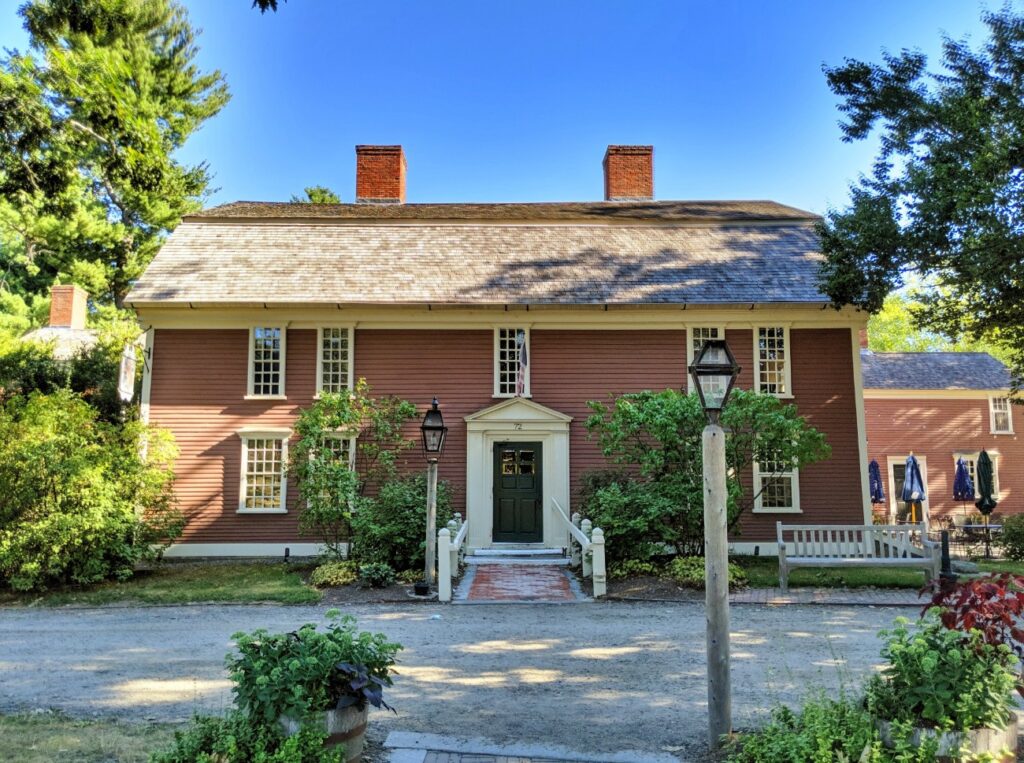
So the way I see it, there are three levels through which you can experience the Wayside Inn. As a day visitor, for a meal or event, or as an overnight guest.
Wayside Inn as a Day Visitor
You are welcome to visit the Wayside Historic District just to walk around and see the historic buildings. There is a large parking lot across the street from the Inn. From there, step into the Inn for printed self-guided walking tours of the Inn and the district from the front desk (which is down the front hall a little way.)
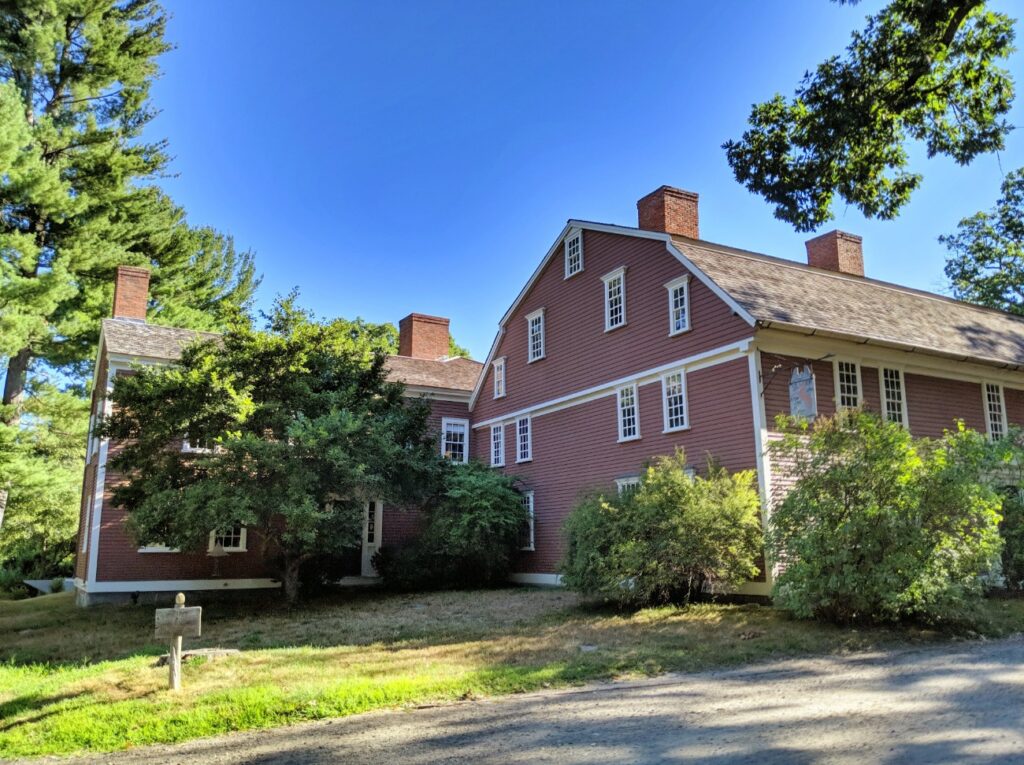
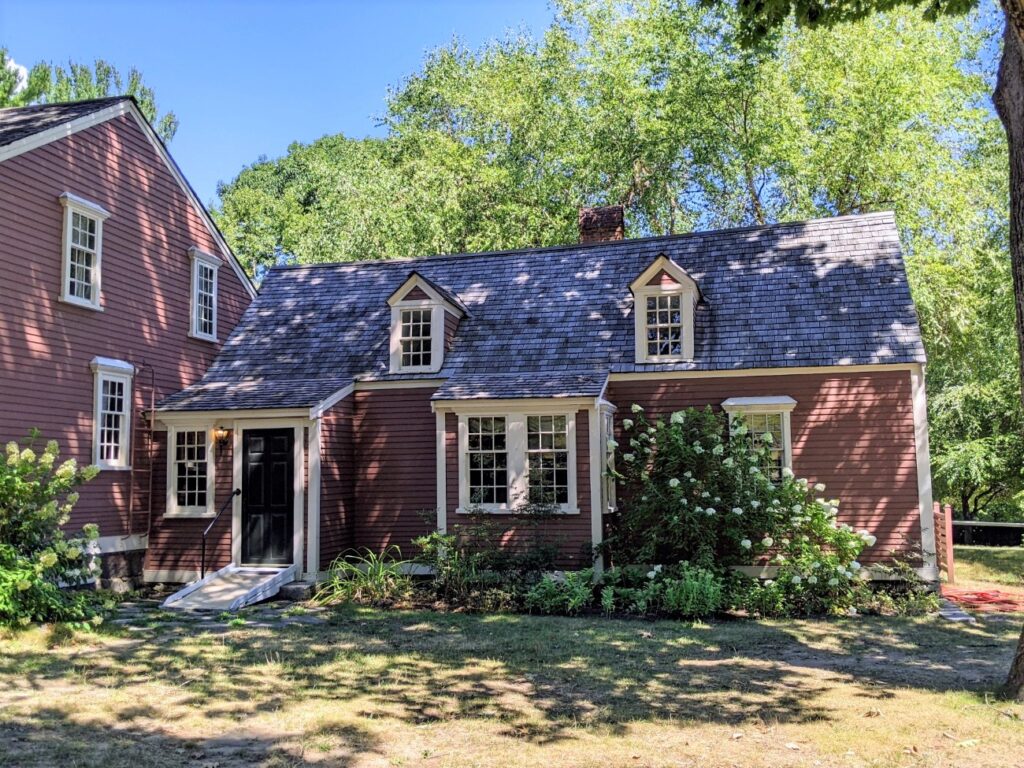
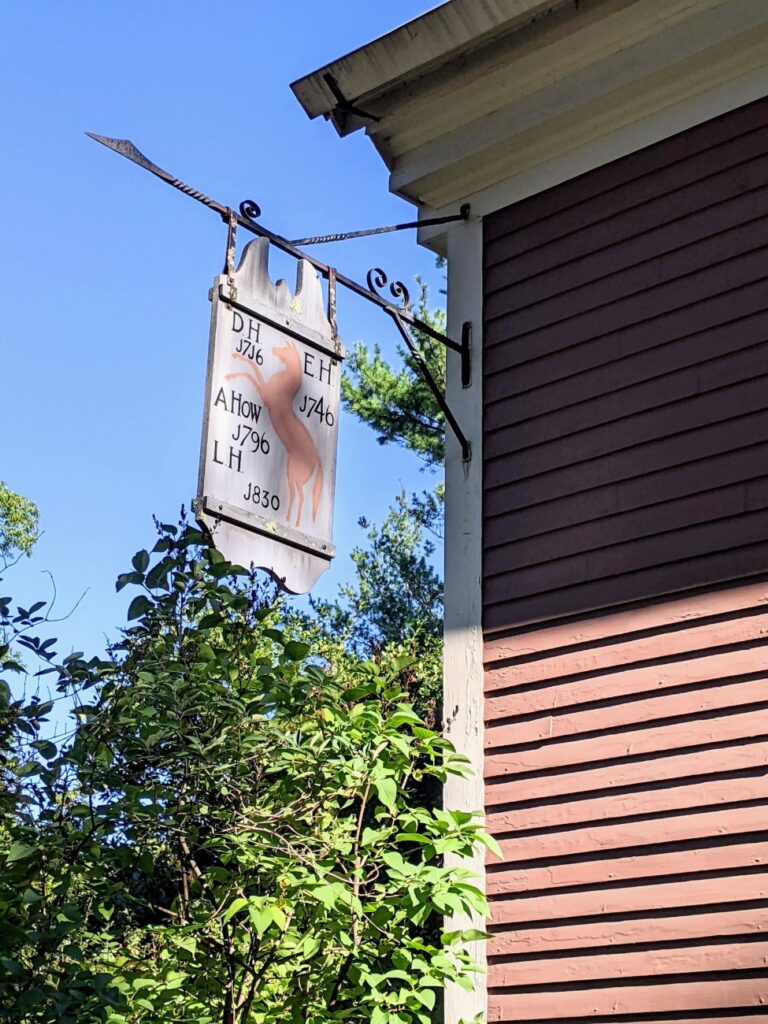
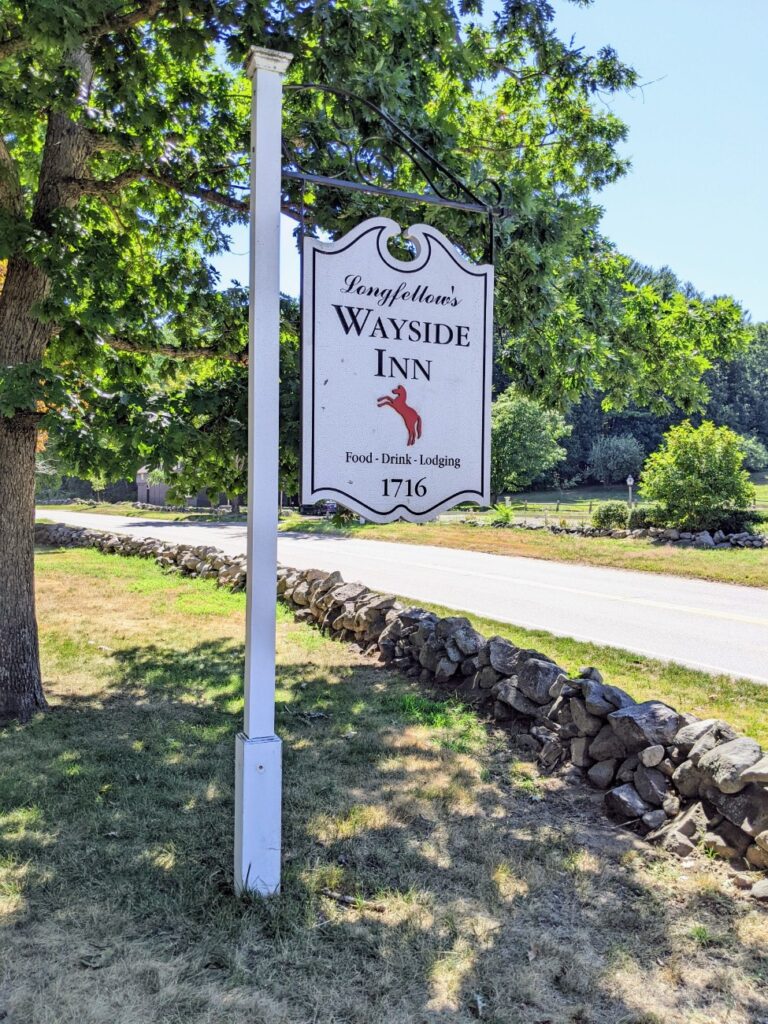
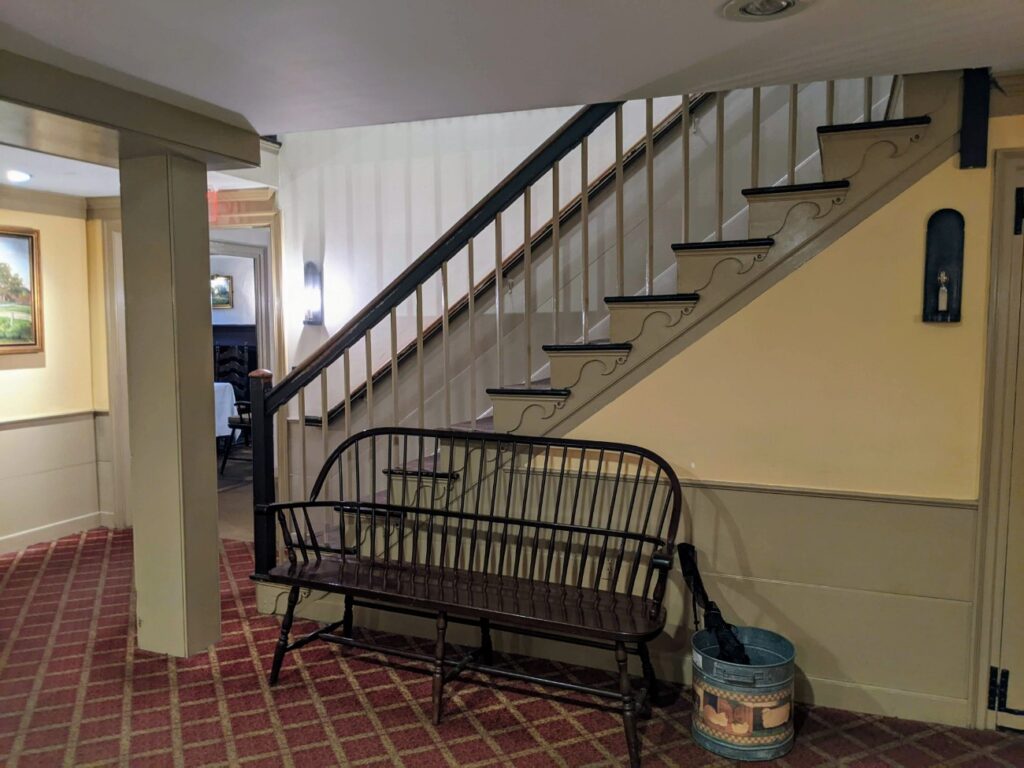
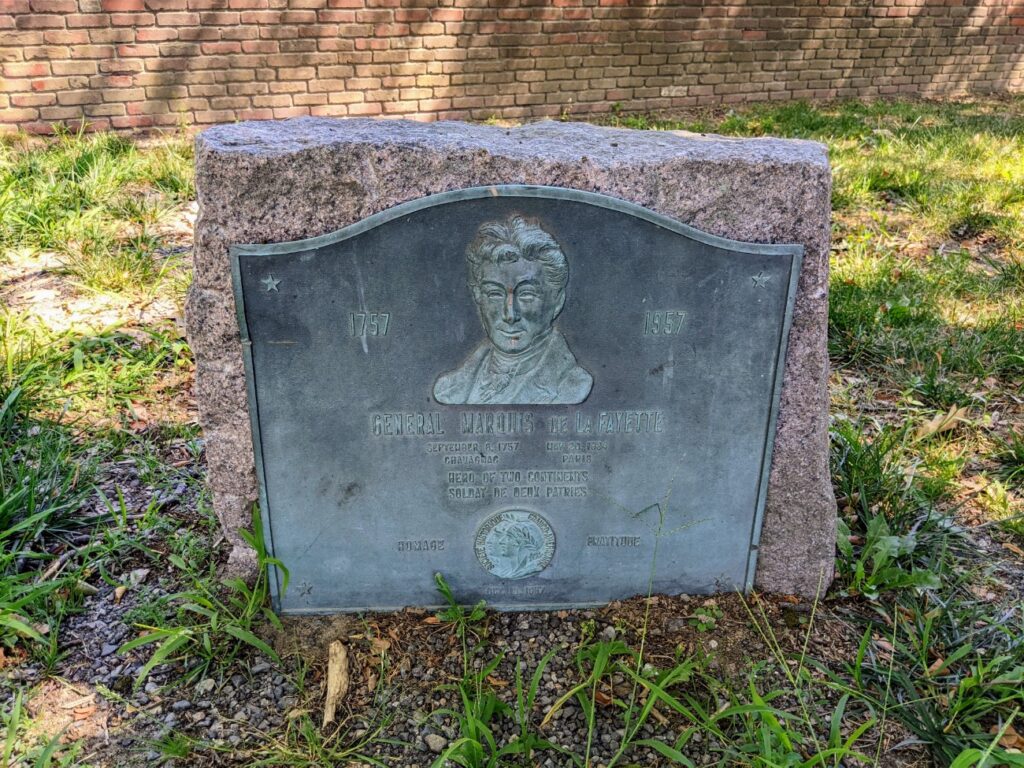
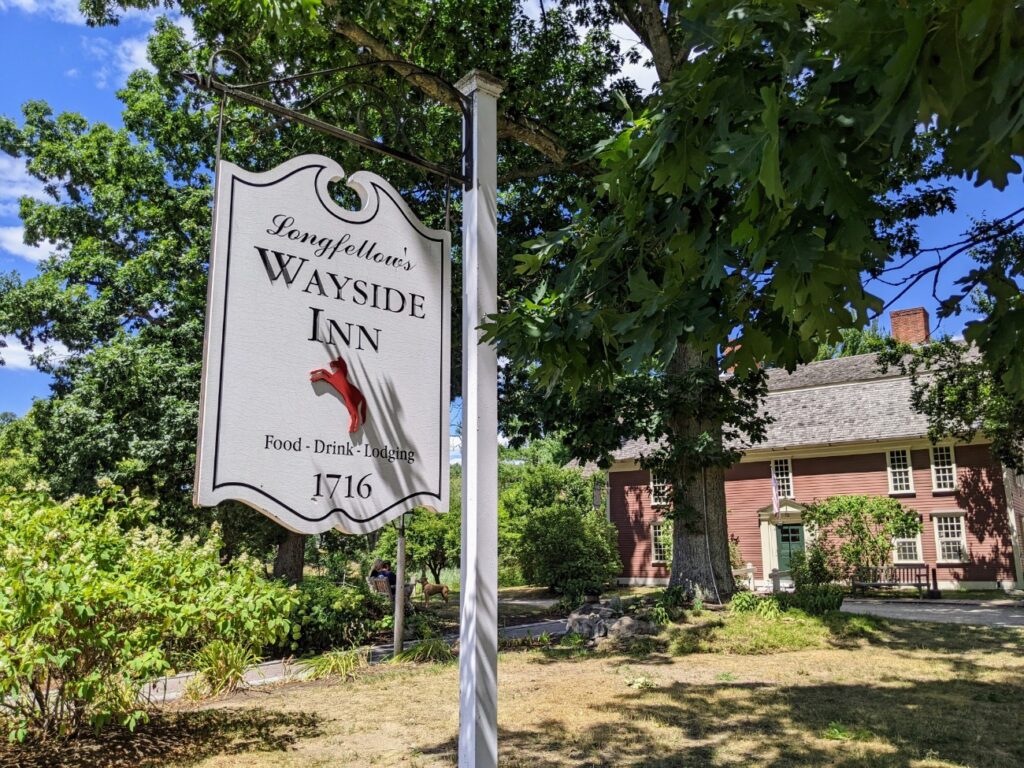
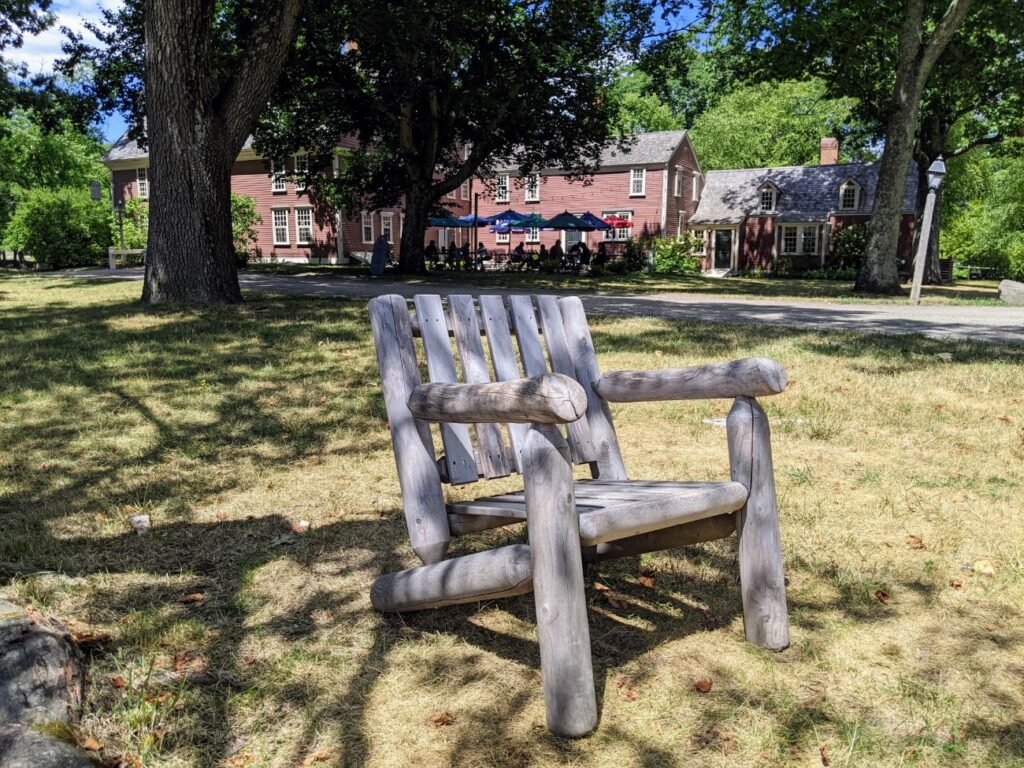
Tour of the Wayside Inn
Downstairs
Following the self-guided tour of the Wayside Inn, you see the old original bar room – a cozy nook with an old gated bar counter, and the front parlor where Longfellow set his stories. A back parlor and several small rooms are set up as dining rooms.
Turning to the right off the hall are some of the oldest rooms that survived a terrible 1955 fire. Through those rooms, you come to a larger room with a large fireplace nook and bay window that Henry Ford used as his rooms while he lived at the Inn. Up a small staircase in this section is room #9, purported to be haunted and also the most original to the Inn.
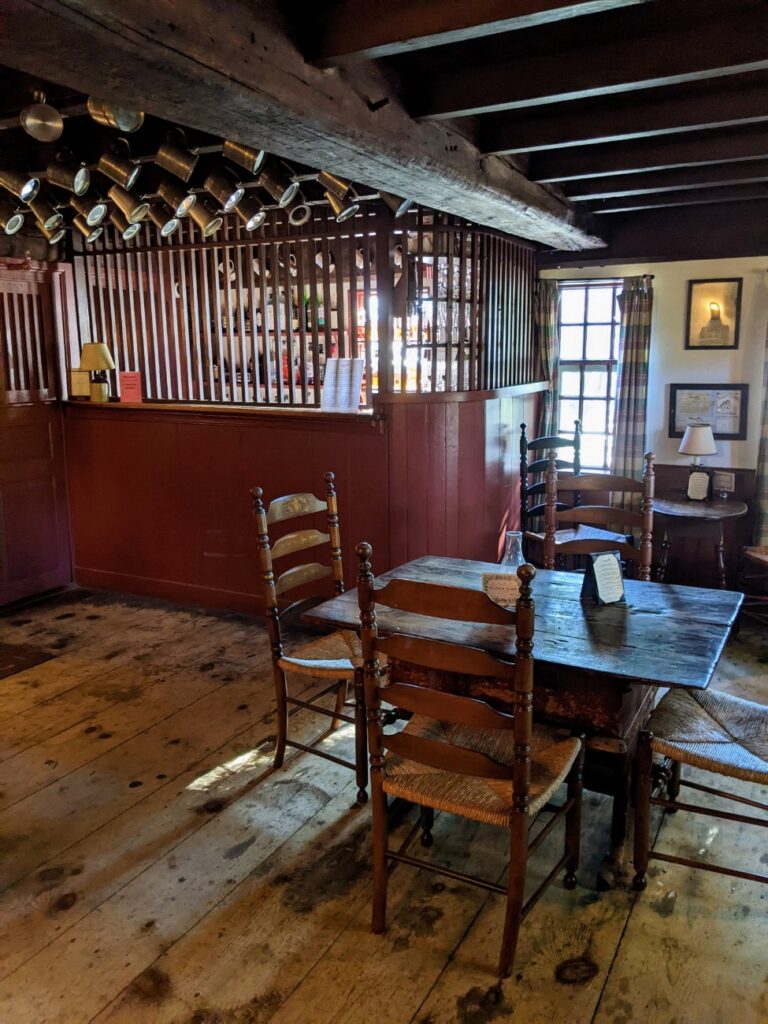


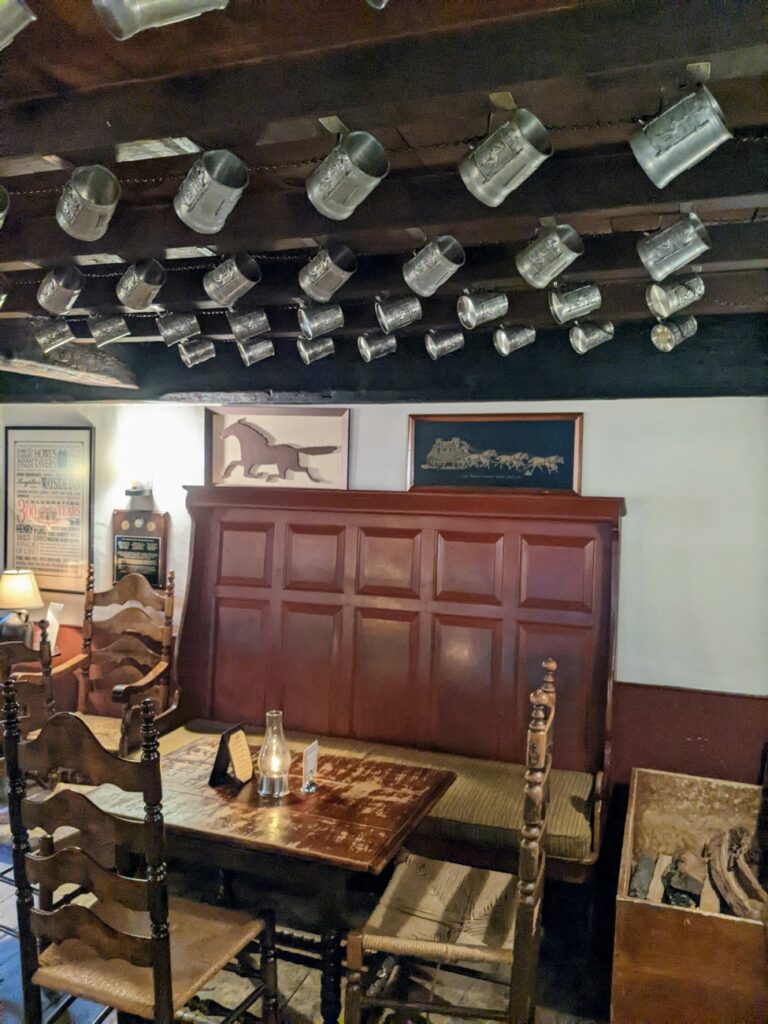
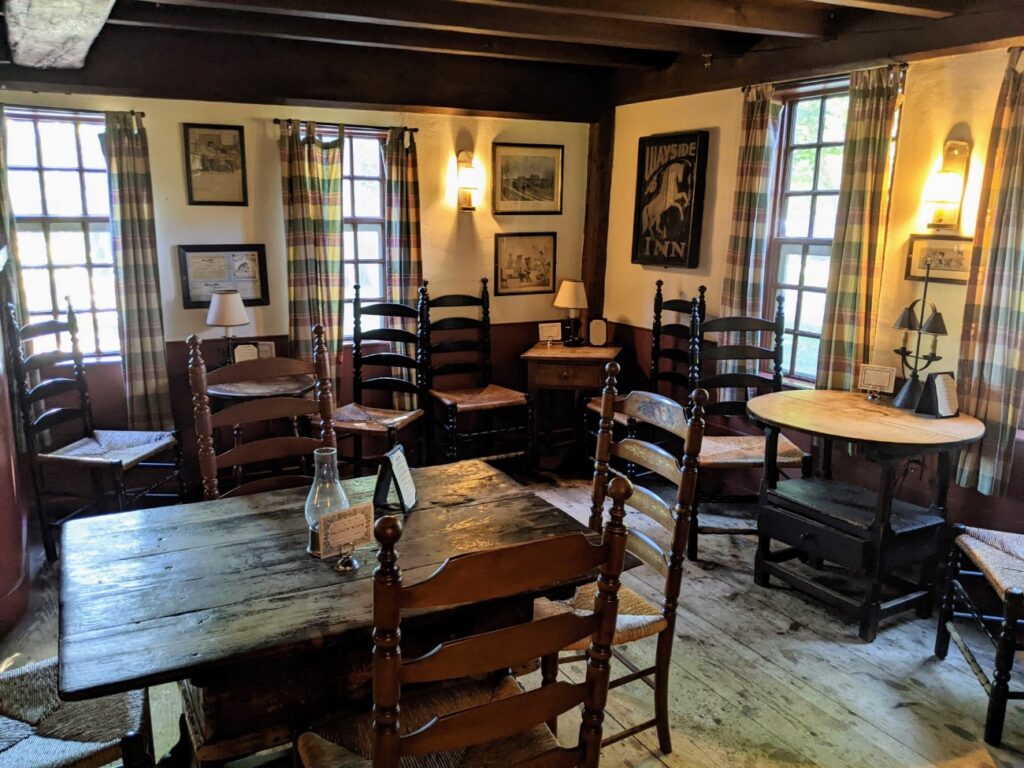

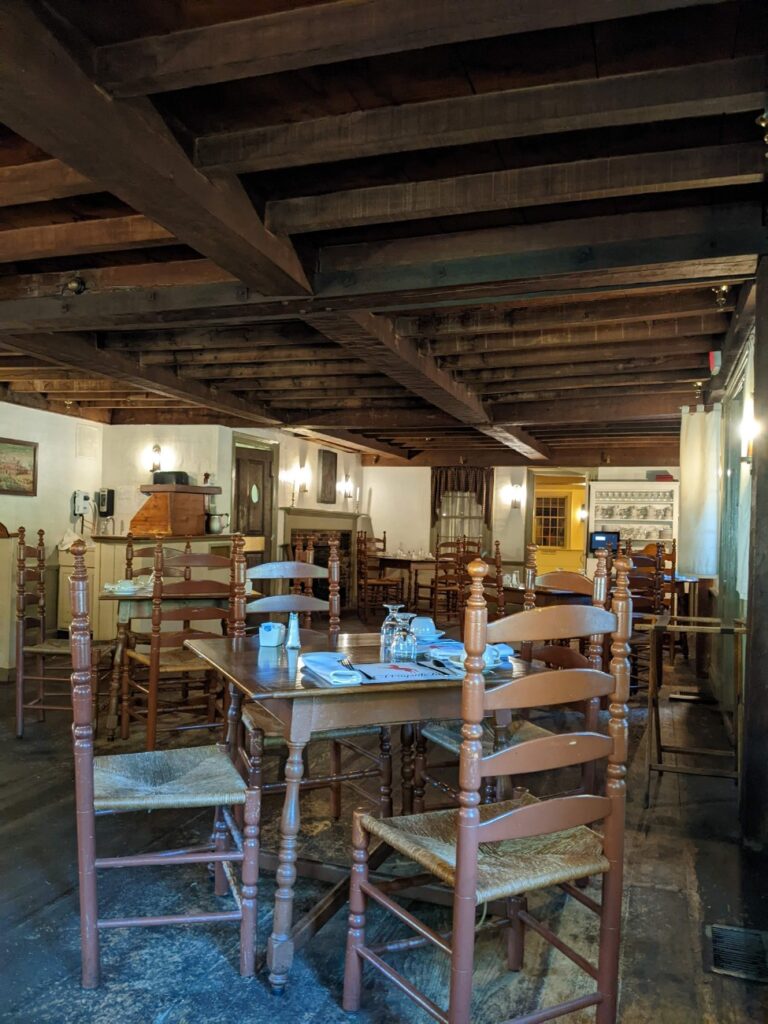
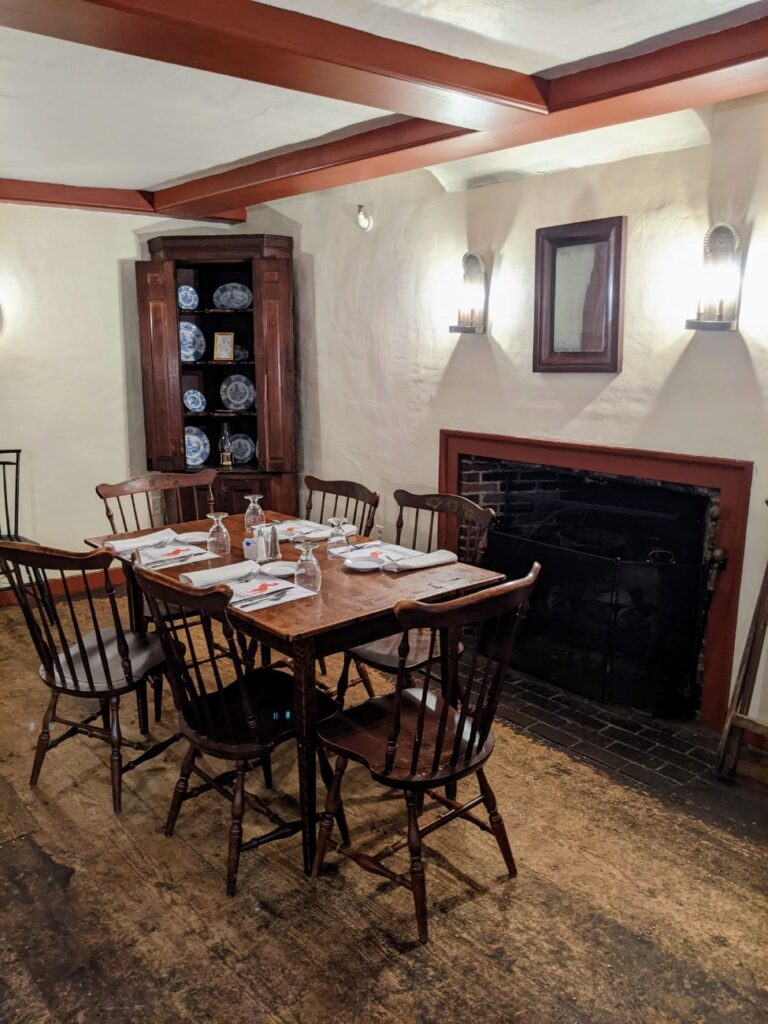
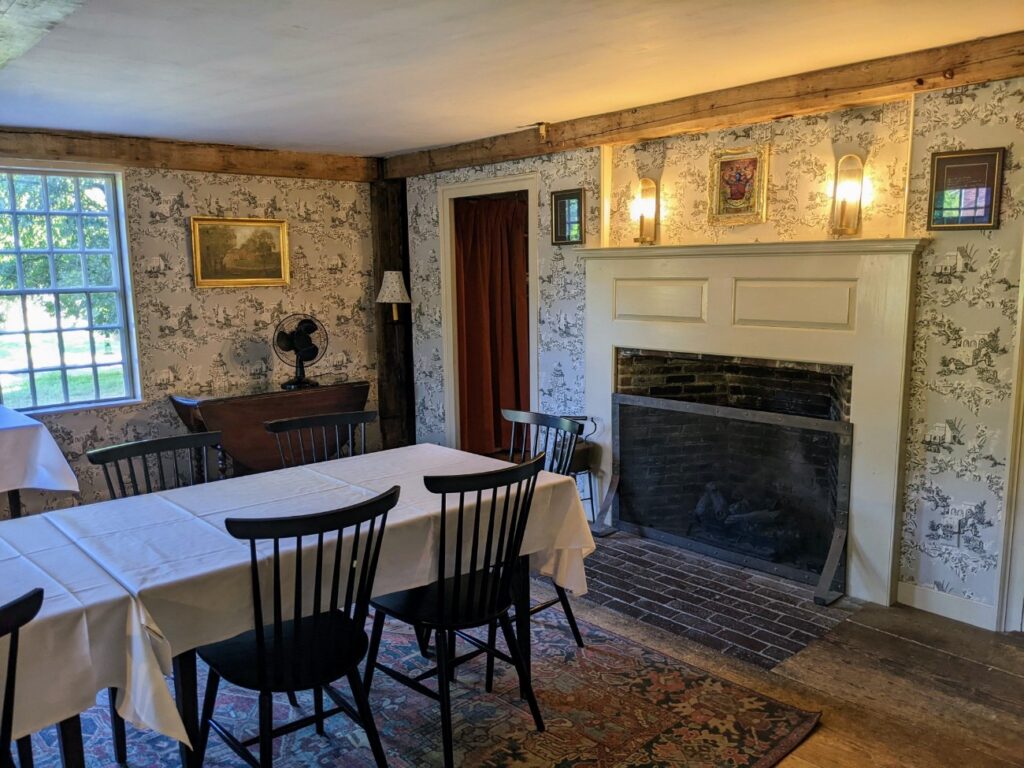
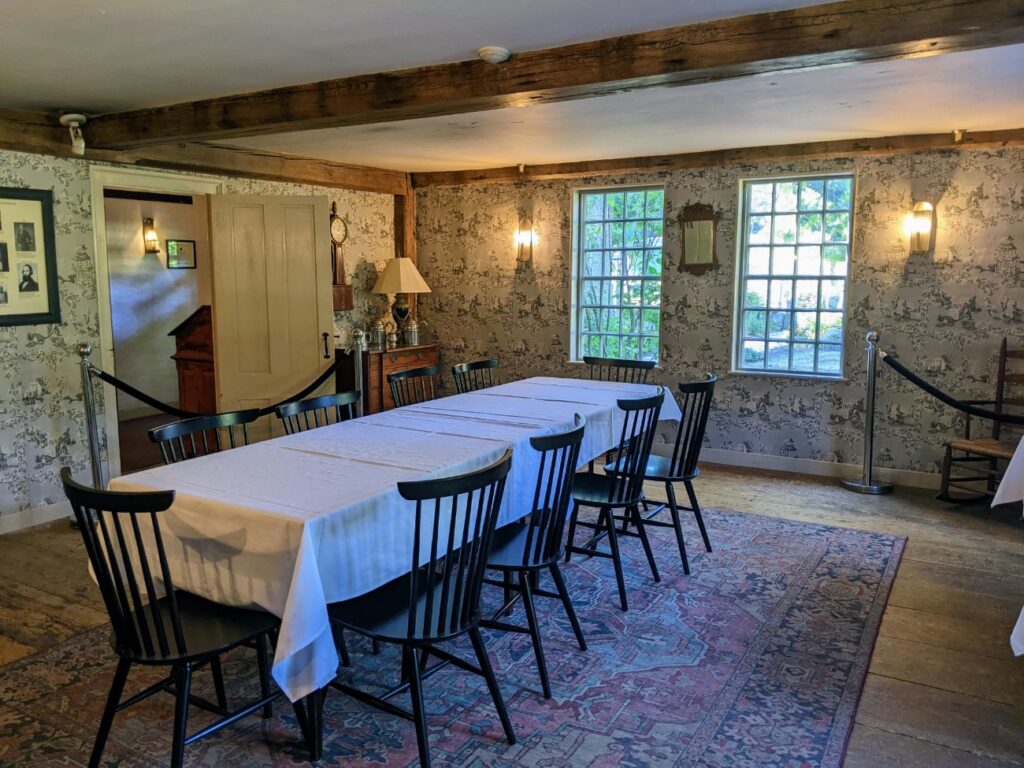
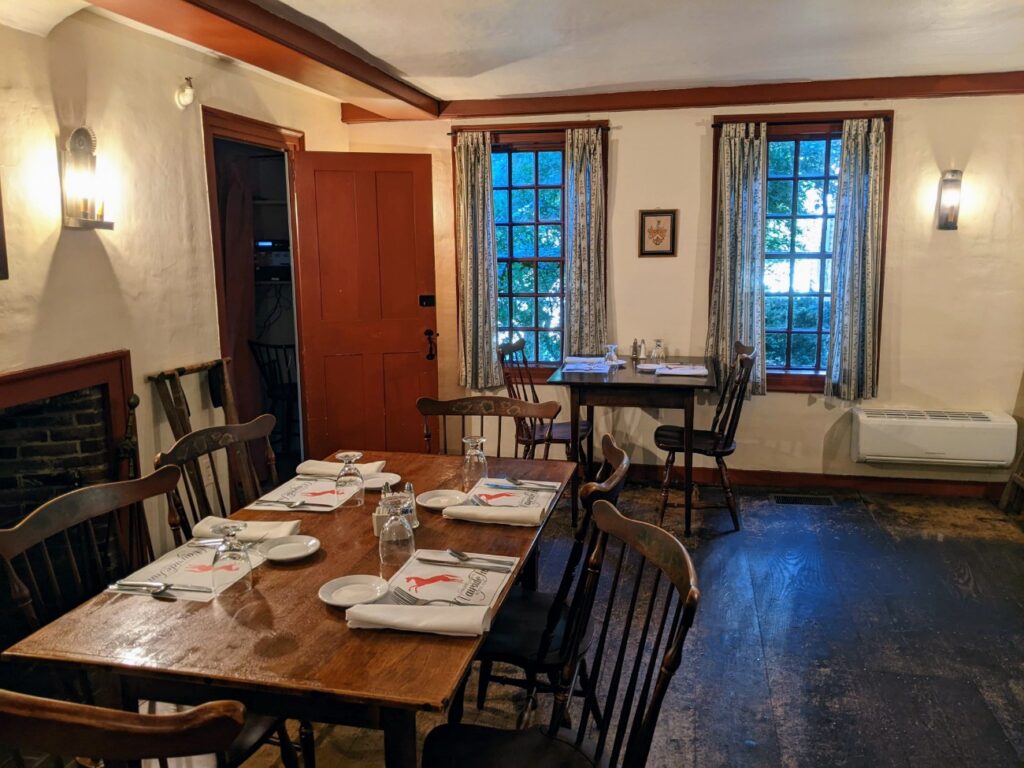
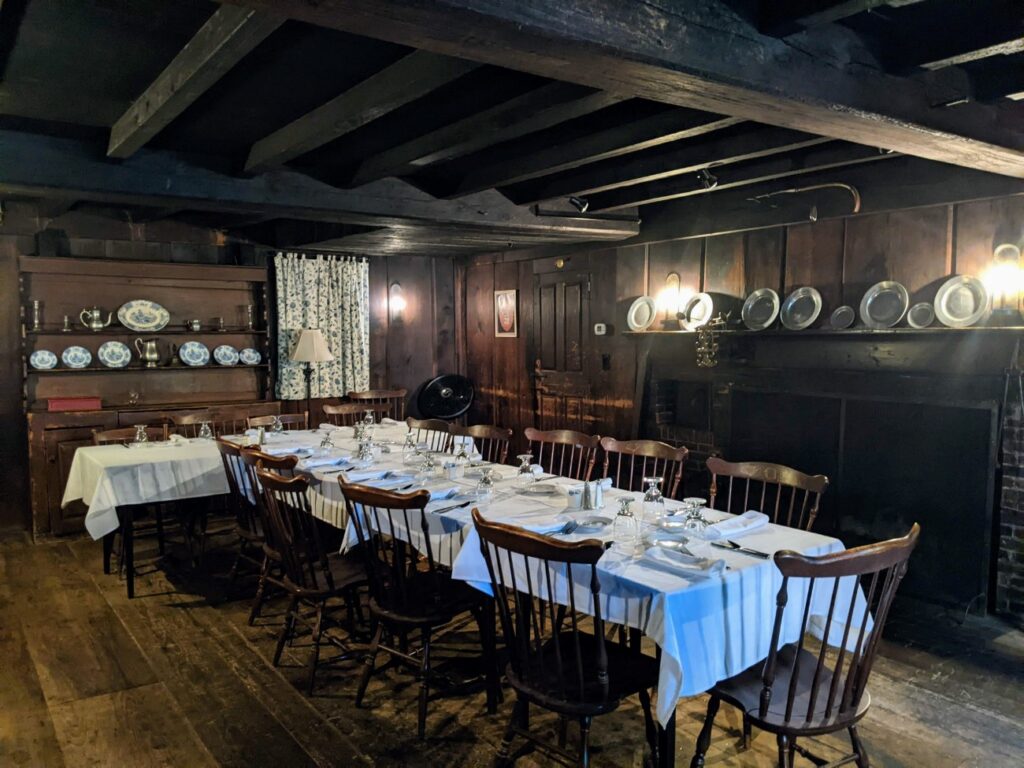
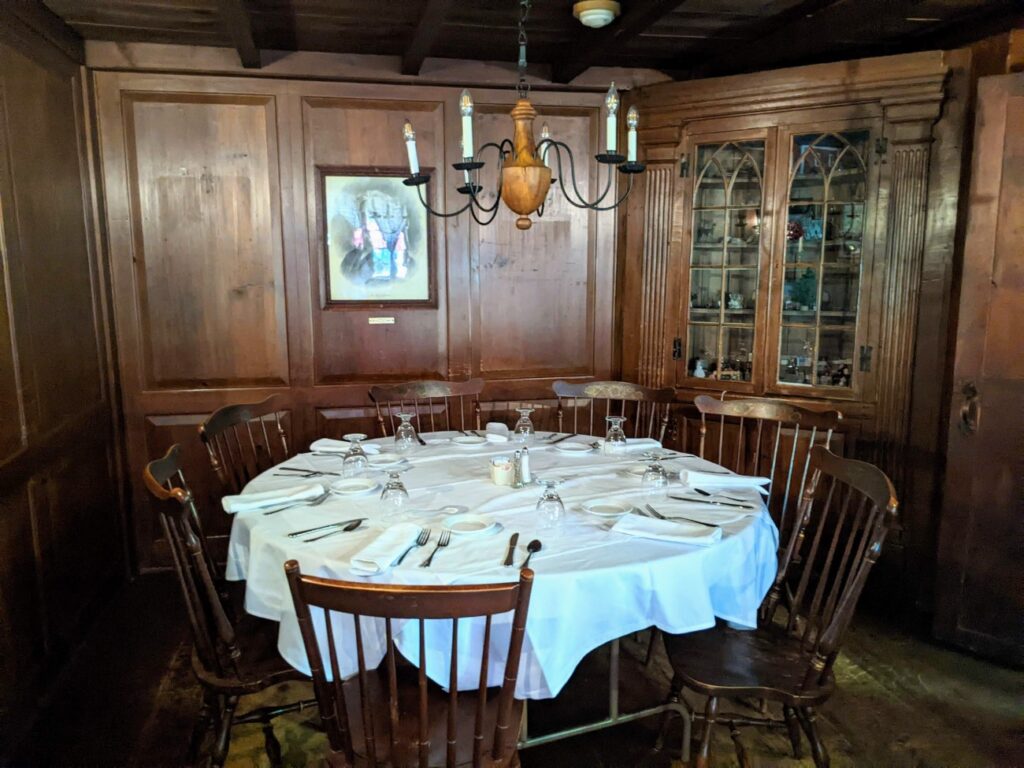
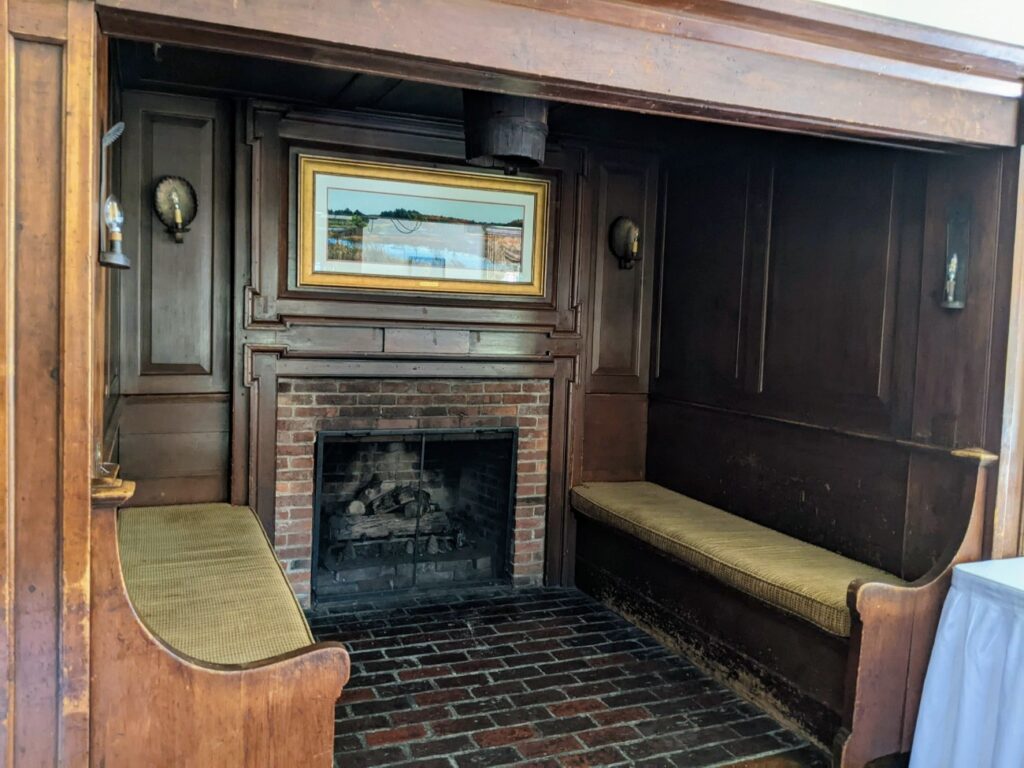
I will say that I had to get someone to let me into those rooms toward the right. They are often set up for special events, and the door from the hall was closed. But when I asked if I could walk back there, one of the waitresses kindly walked back with me to let me take a peek.
Upstairs
Upstairs at the front of the Inn are two rooms set as they would have in the early days of Howe’s Tavern. Several beds to a room, spinning wheels, chamber pots, musical instruments, and more original furniture make it look as though the current guests have just stepped out. A back room serves as a small museum with information about the Inn’s resident ghost, Miss Jerusha Howe.
The old (mid-1700s) and new (early 1800s) halls upstairs both still host special events. The small Old Hall is also called the Hobgoblin Room due to an apparition seen there many years ago. The new hall is a sweet long room with a fiddler’s stand next to the fireplace at the end, wallflower seats around the walls, and a black-paneled ceiling to hide the smoke from candles in the chandeliers.
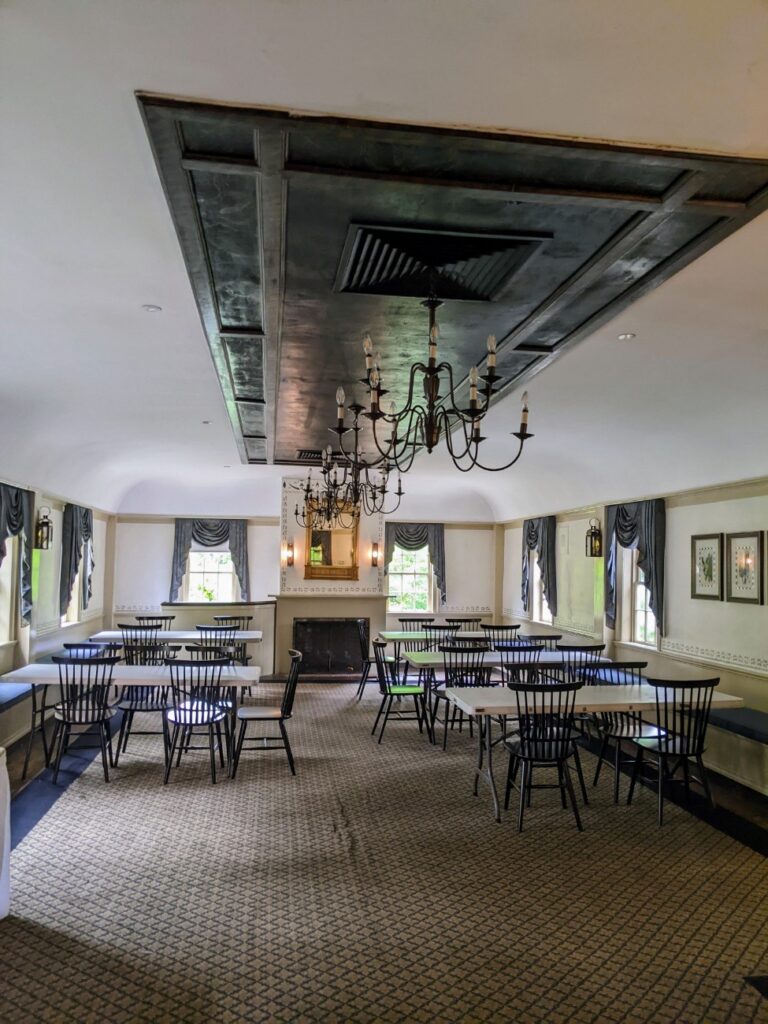
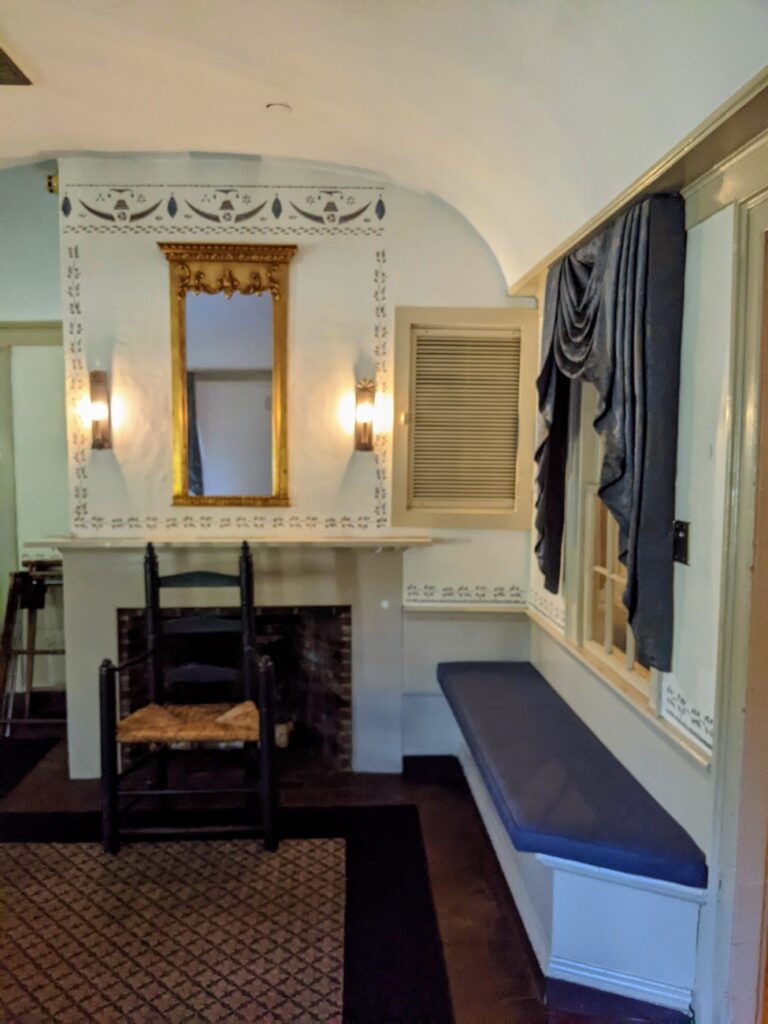
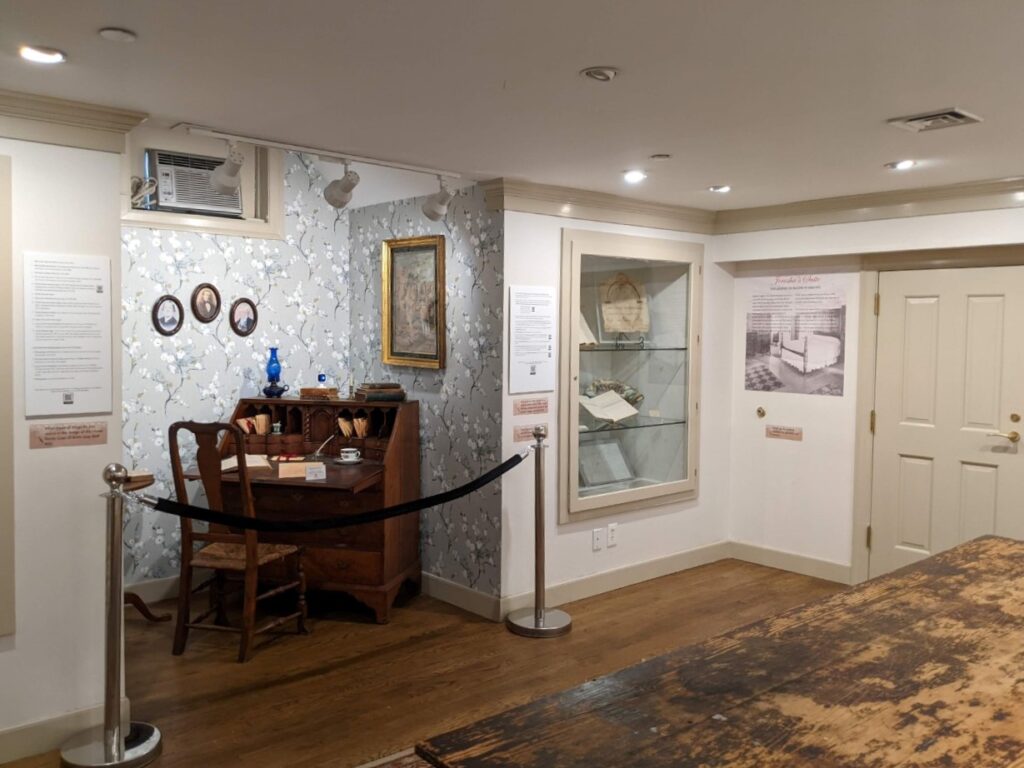
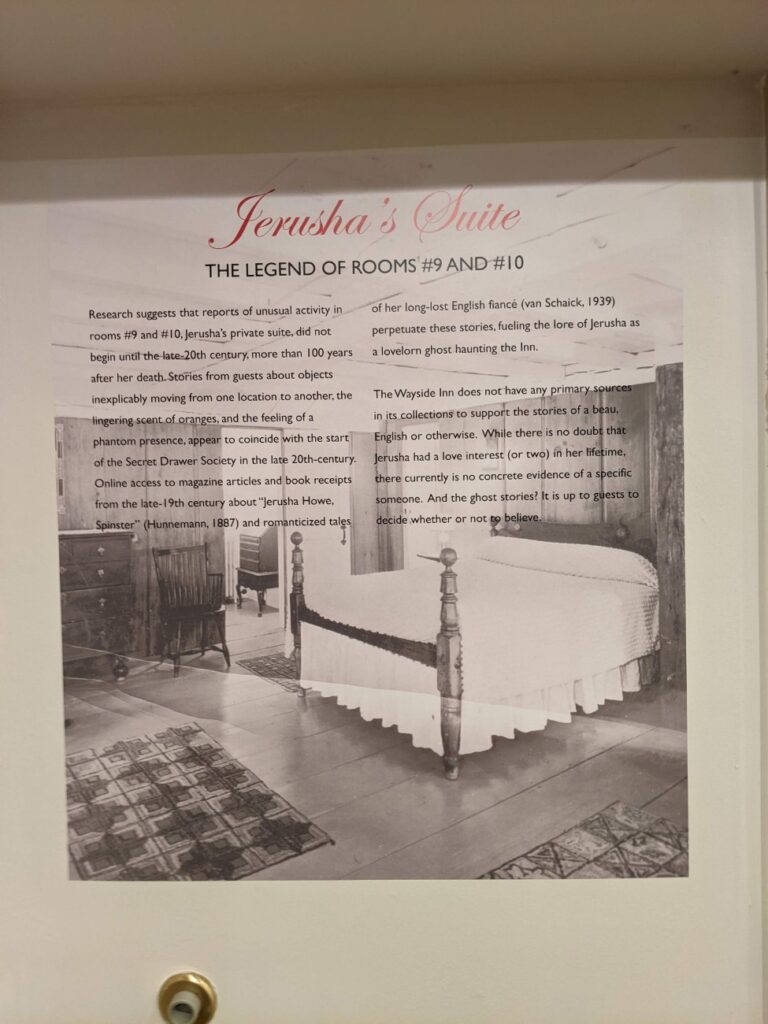
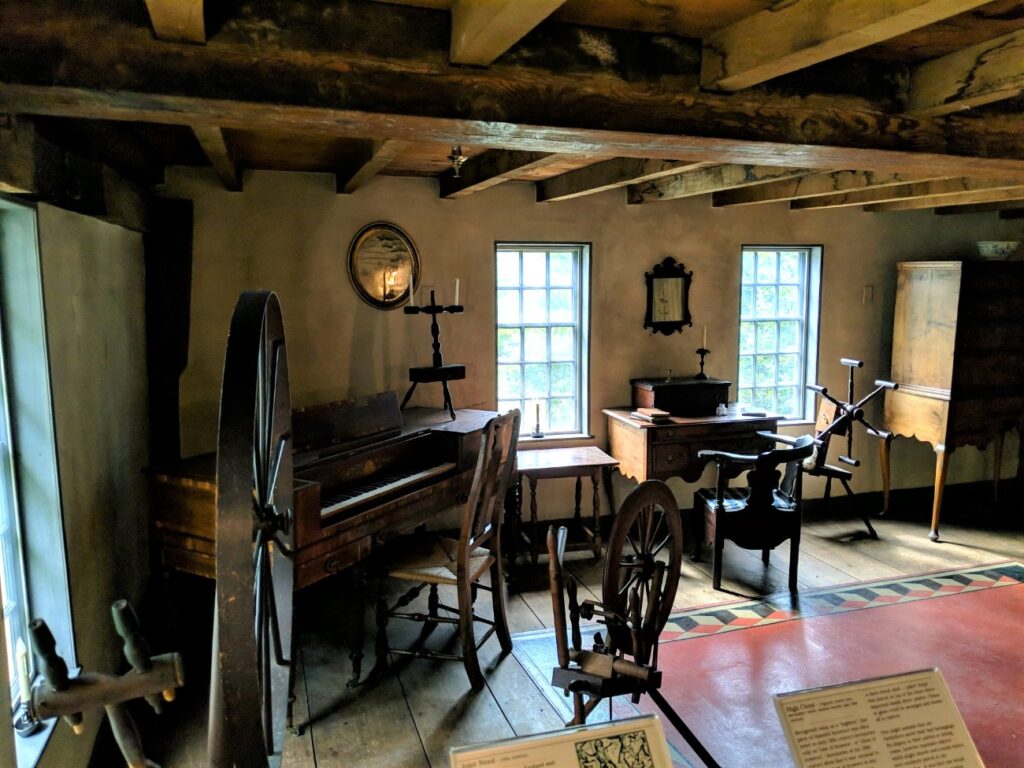
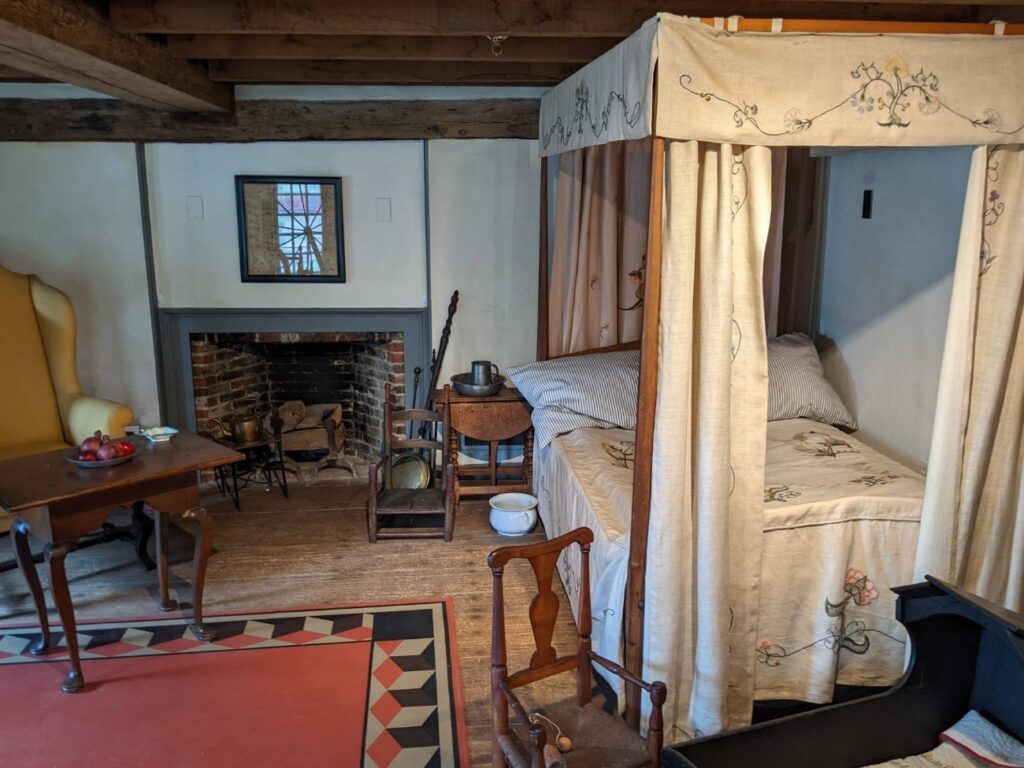
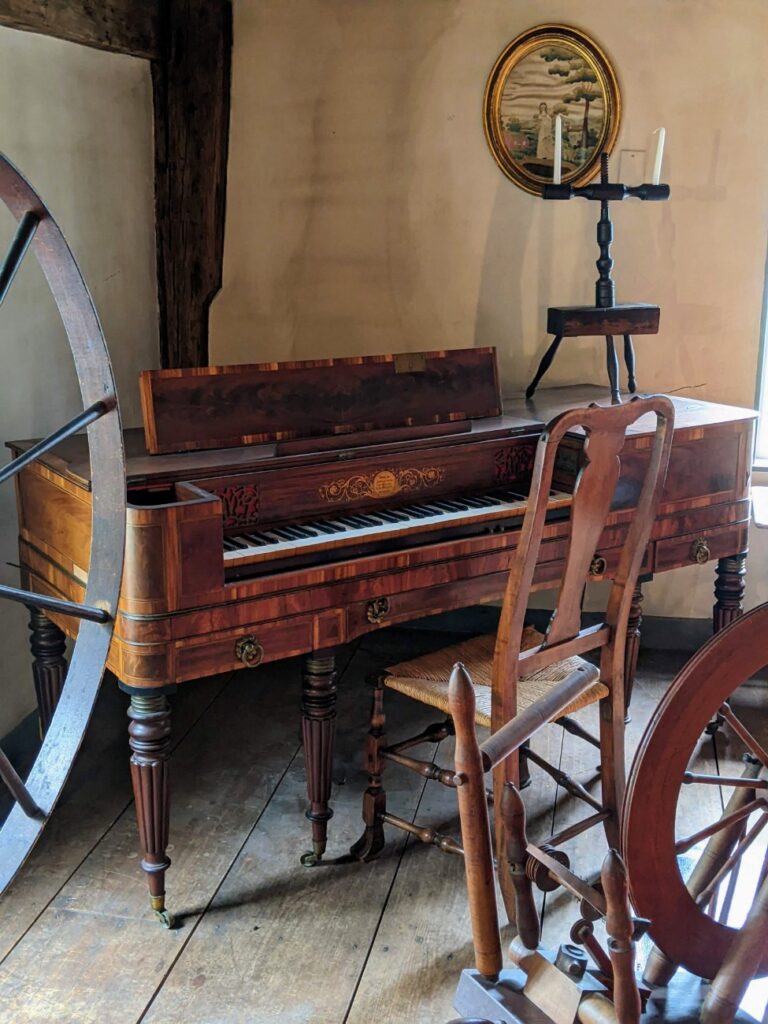
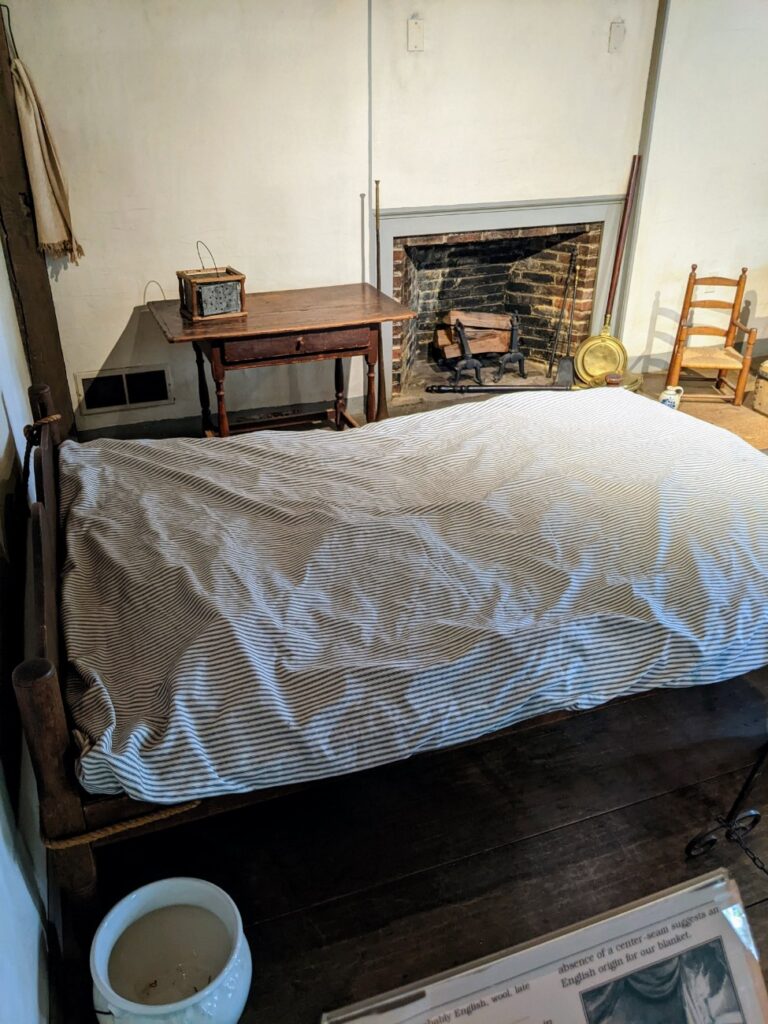
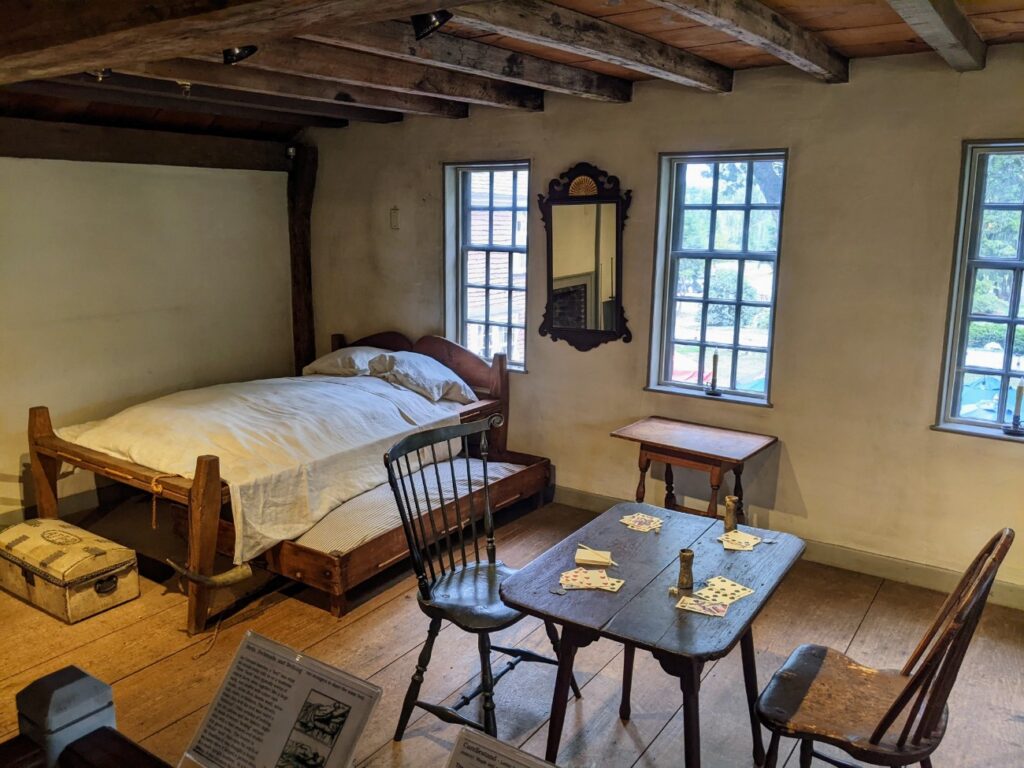
Ford Addition
The newest addition to the Wayside Inn was added by Henry Ford in 1929. Downstairs, the wing adds a huge dining space, and upstairs are all the modern Inn rooms. I can’t find it in writing, but I have the impression that the upstairs was originally a bigger ballroom, and turned into overnight rooms after the 1955 fire.
Next to the front desk is a small gift shop with fun toys, gifts, and home goods to remind you of your visit.
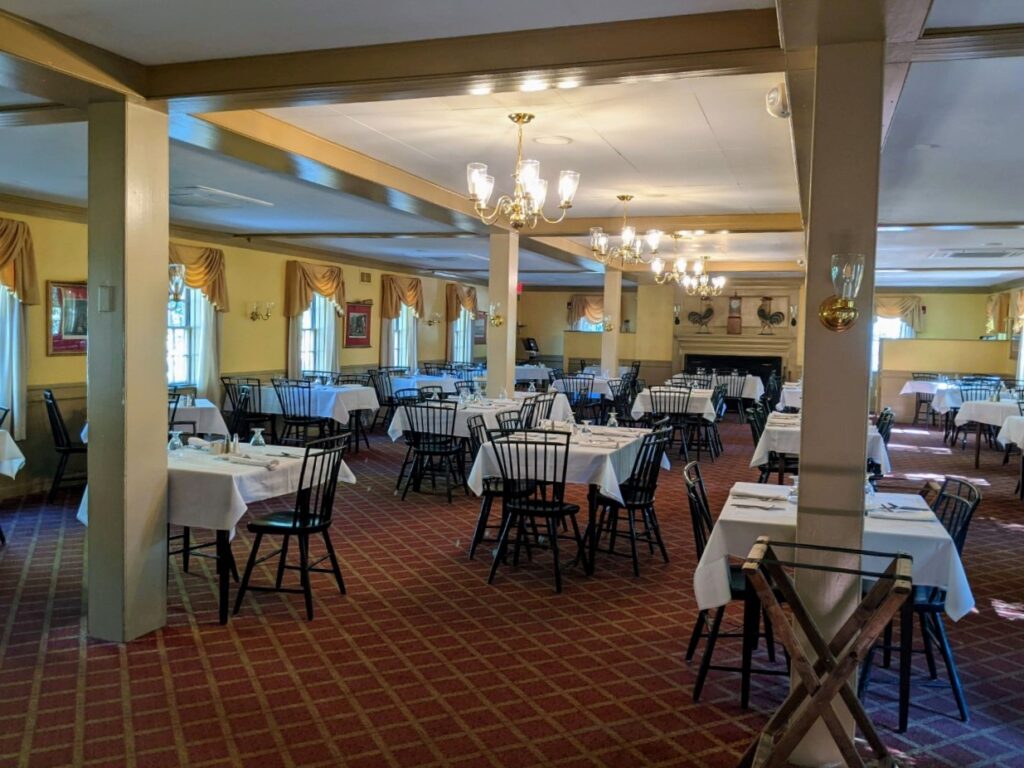
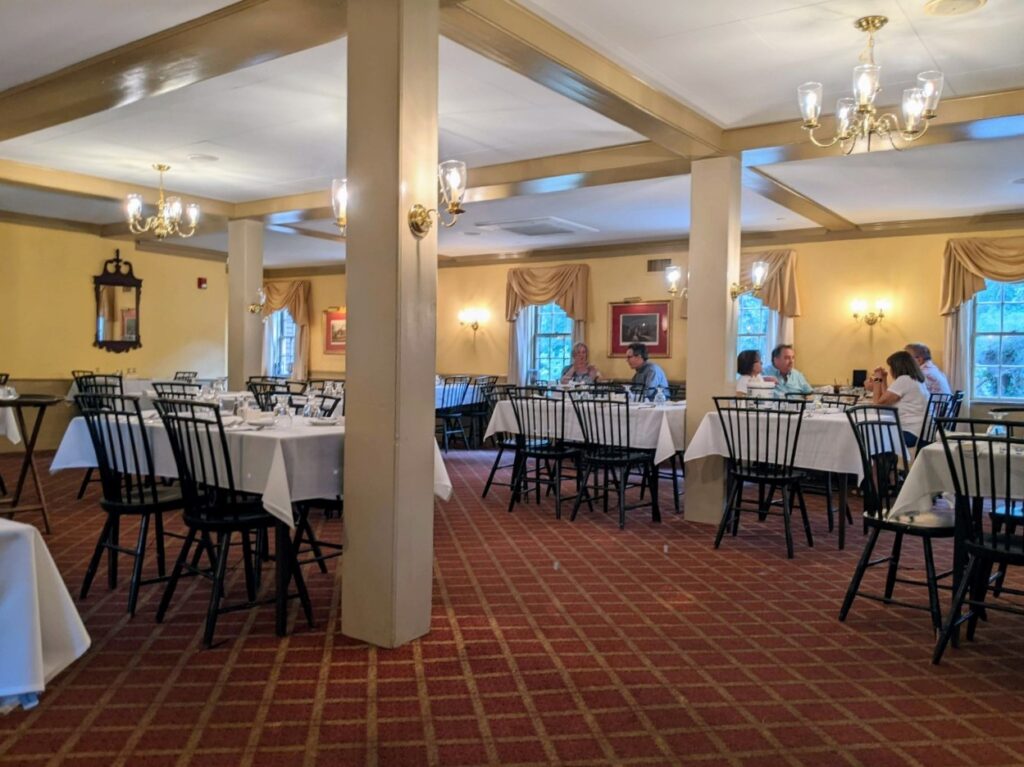
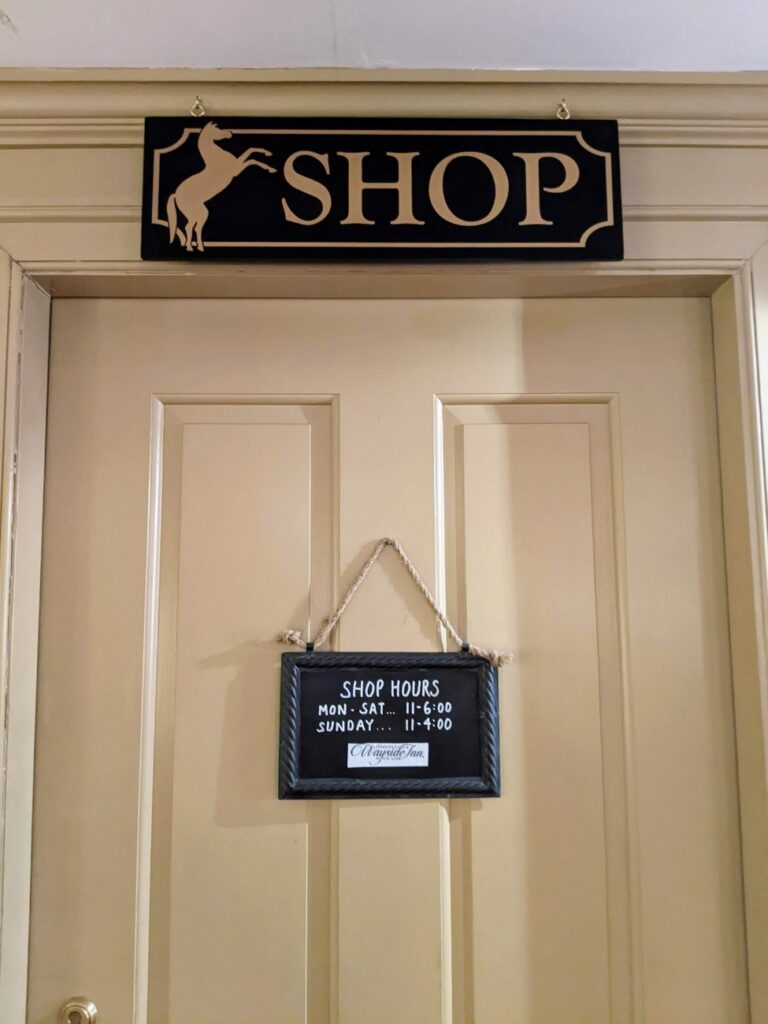
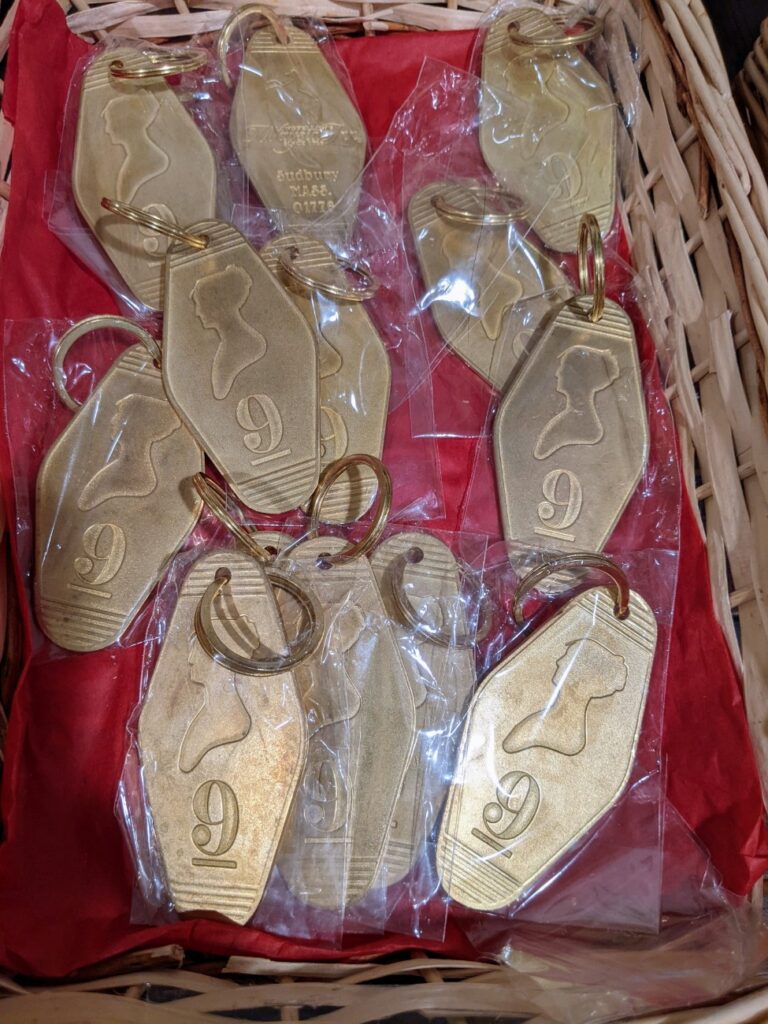
Tour of the Wayside Historic District
Outside of the Wayside Inn itself, you can walk around the grounds and down the street a bit for historic buildings that Ford relocated to the area.
Around the Inn
Running right in front of the Wayside Inn is a gravel drive. This is actually the original Old Boston Post Road, a 1600’s “King’s Road” connecting Boston to all points west.
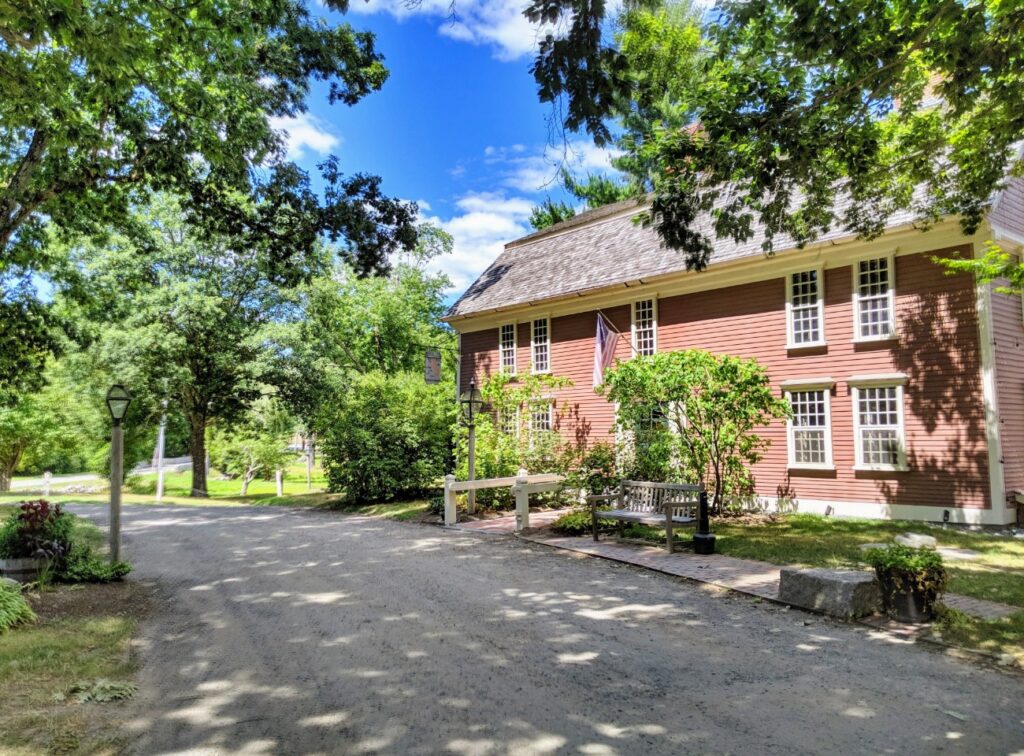
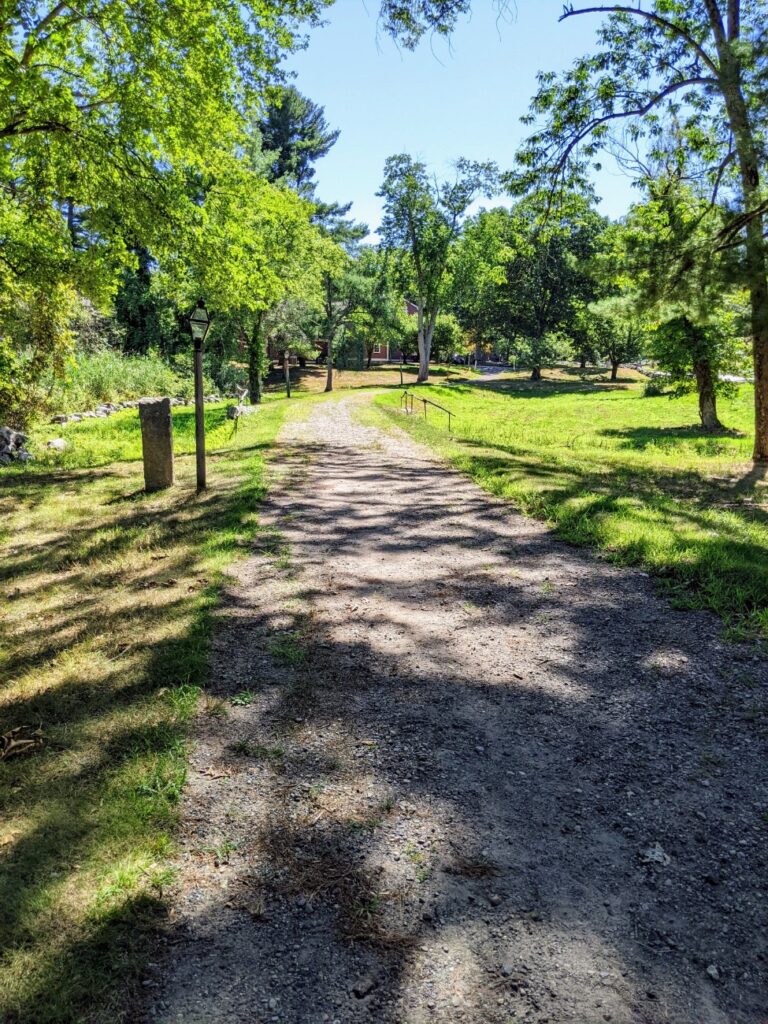
Next to the Inn is a semi-formal Longfellow Memorial Garden, designed in 1905. An avenue of plantings ends in a brick wall featuring a bust of Longfellow, similar to one in Westminster Abbey. Behind the garden is a permanent events tent, often used for weddings, I imagine.
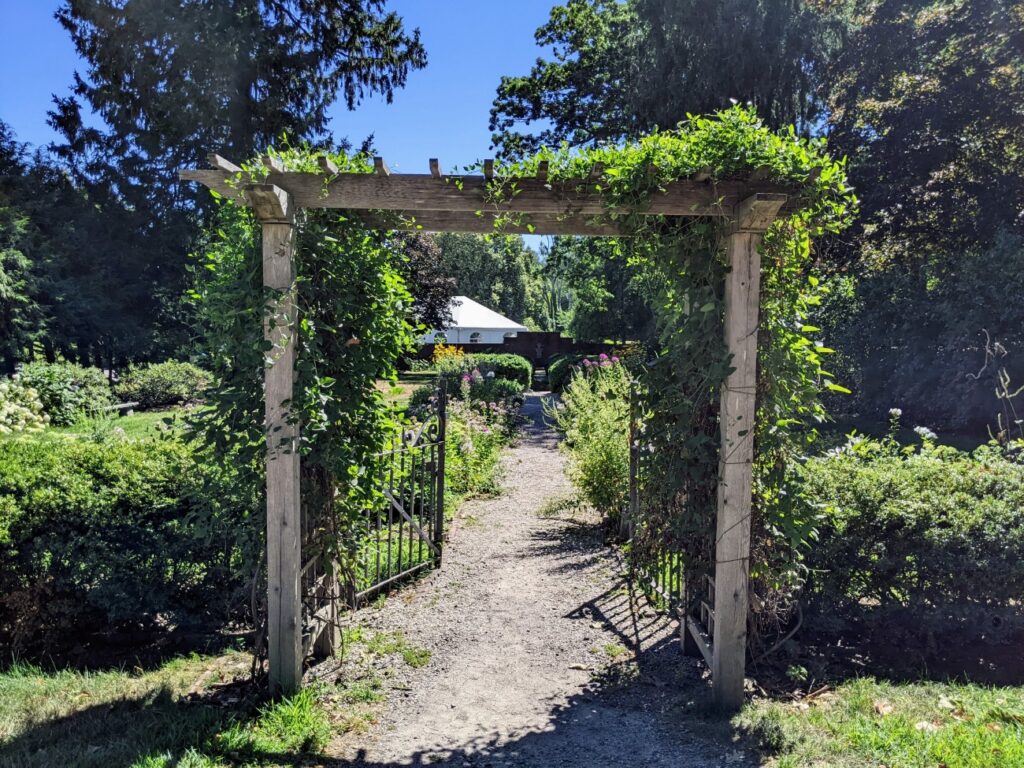
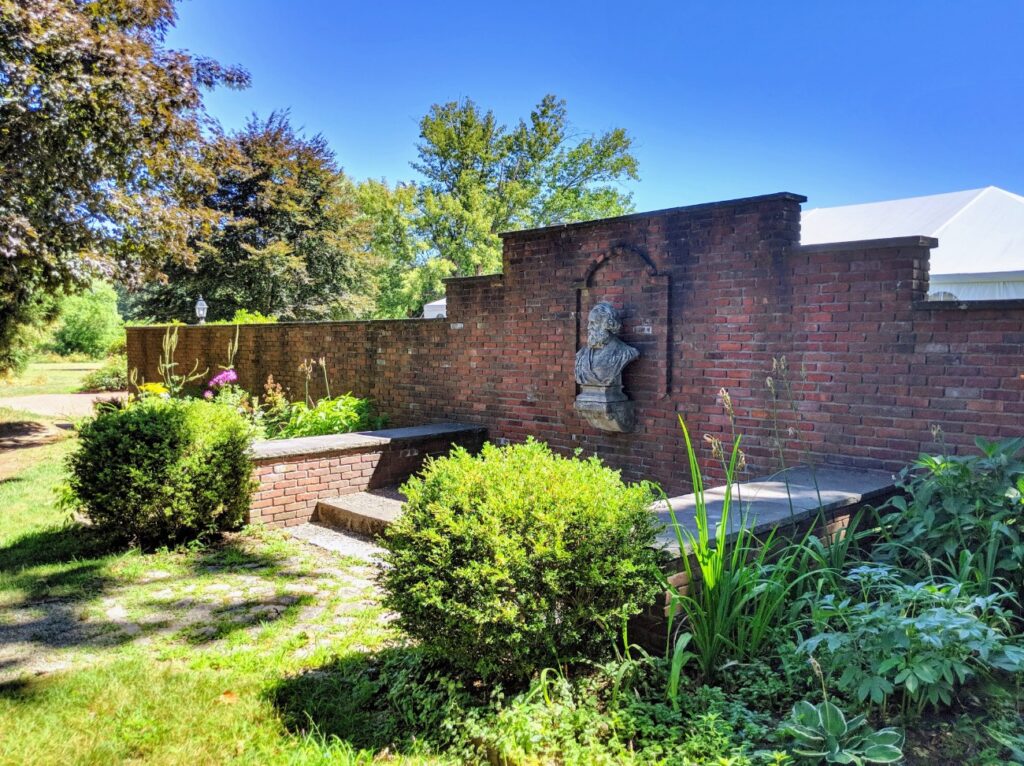
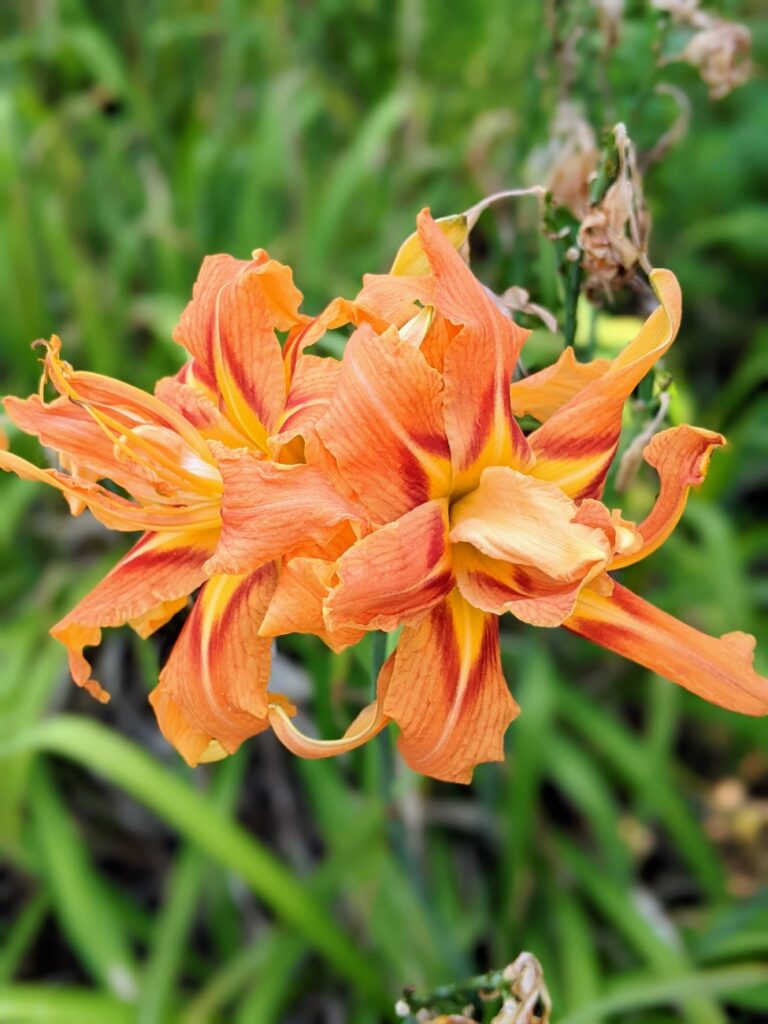
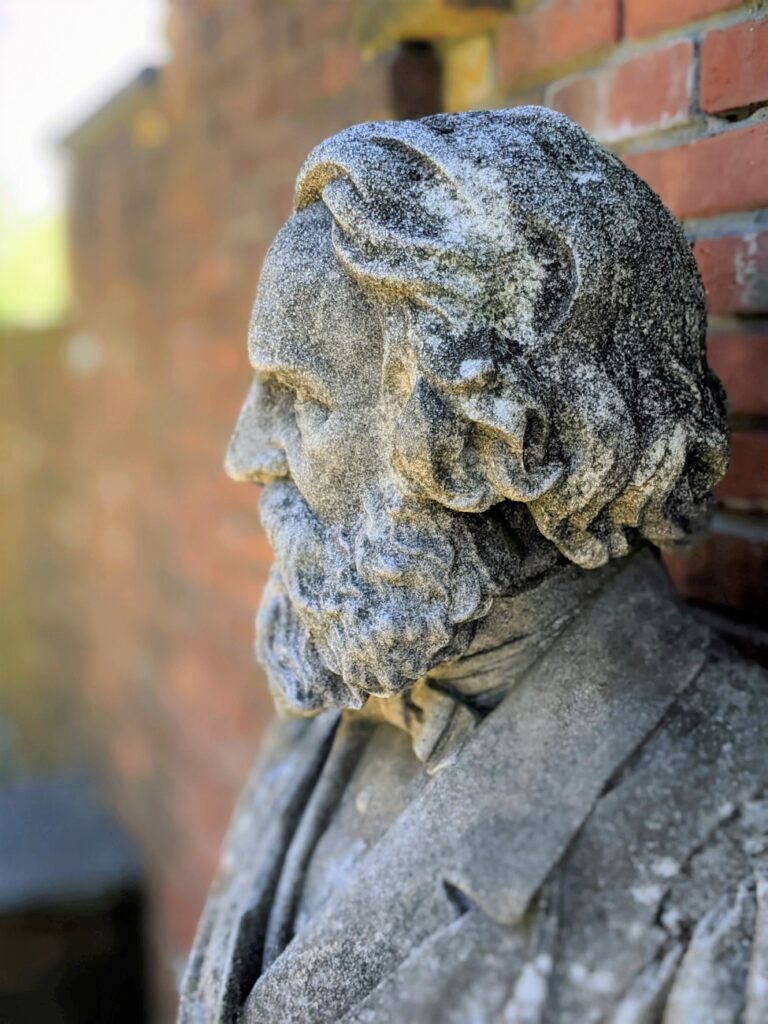
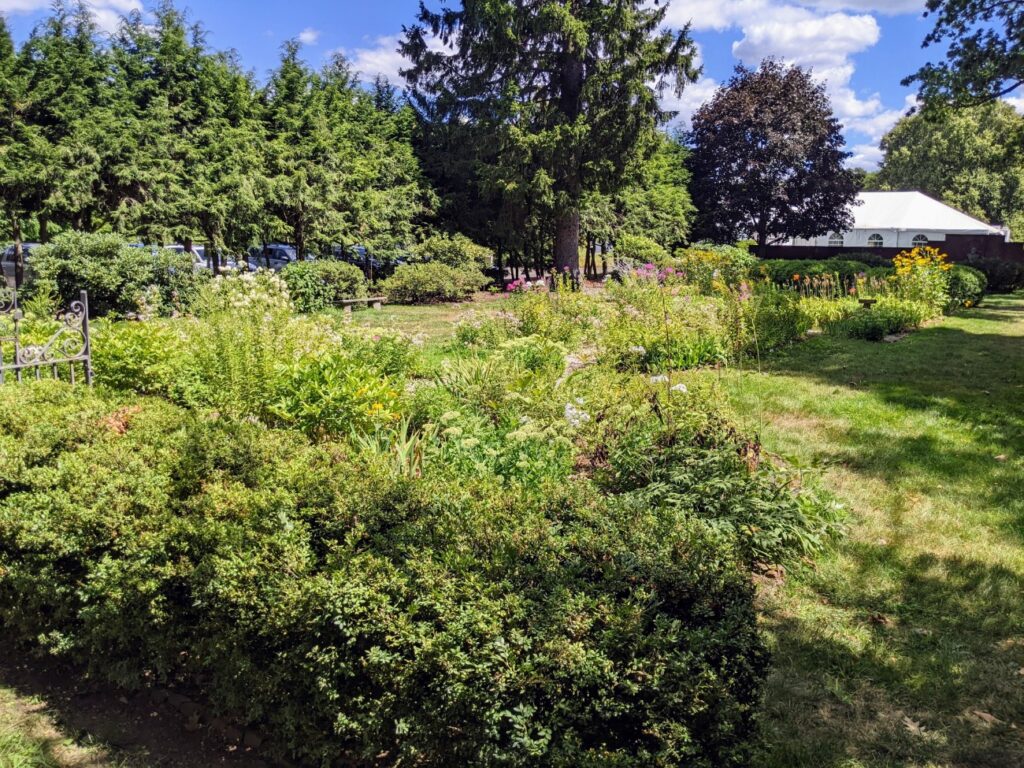
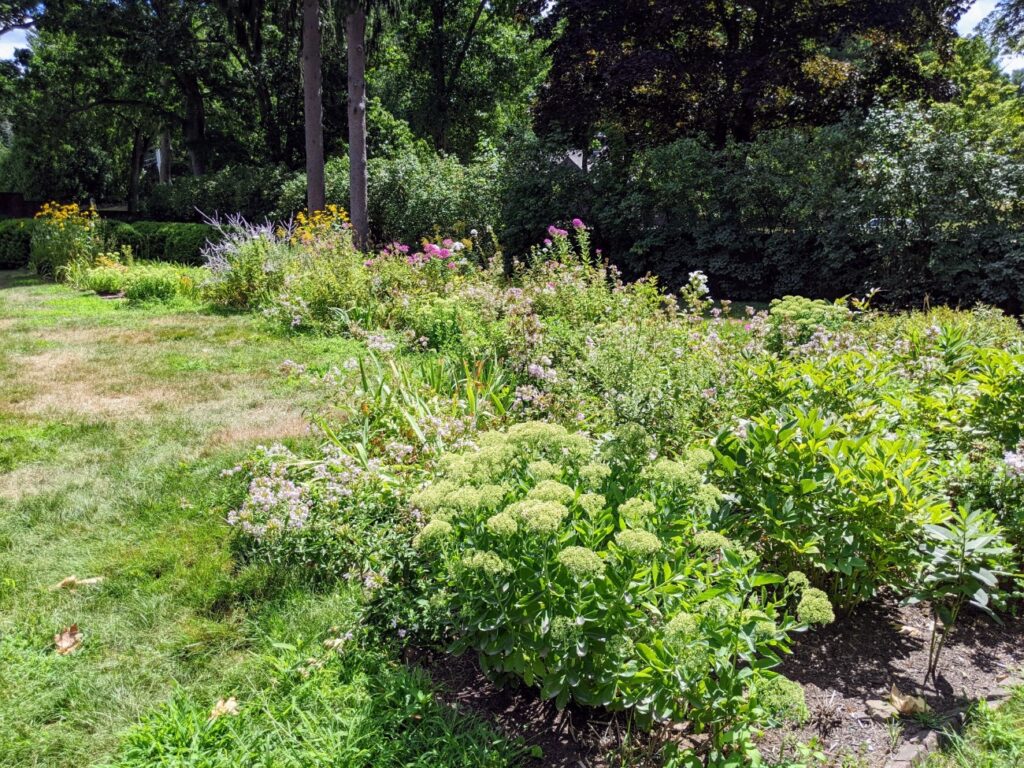
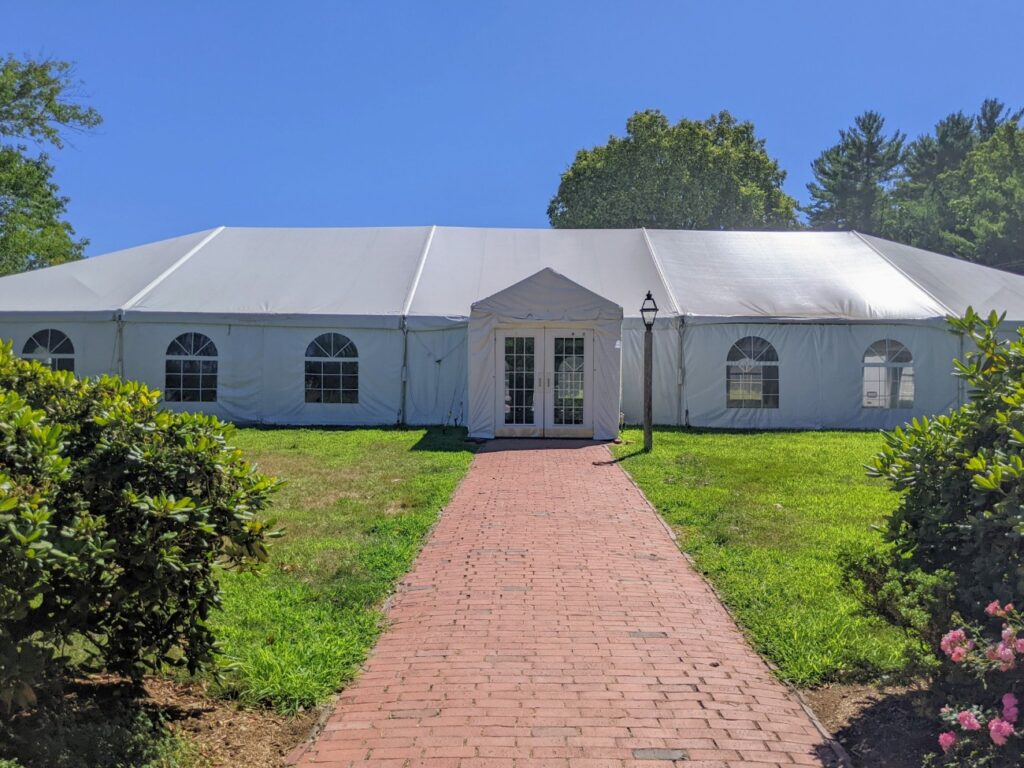
Behind a small parking lot is a road to the Ice House, once used to store ice from the nearby pond through the warmer months. And if you keep walking back, there is a pleasant loop trail out to a point on a nearby lake.
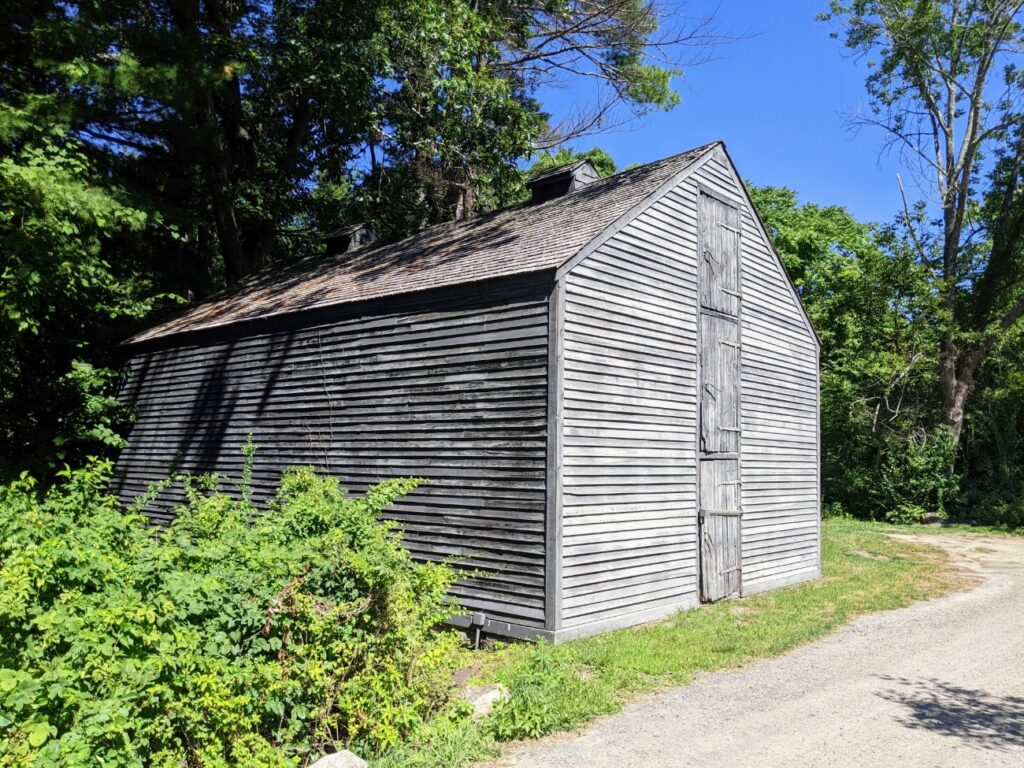
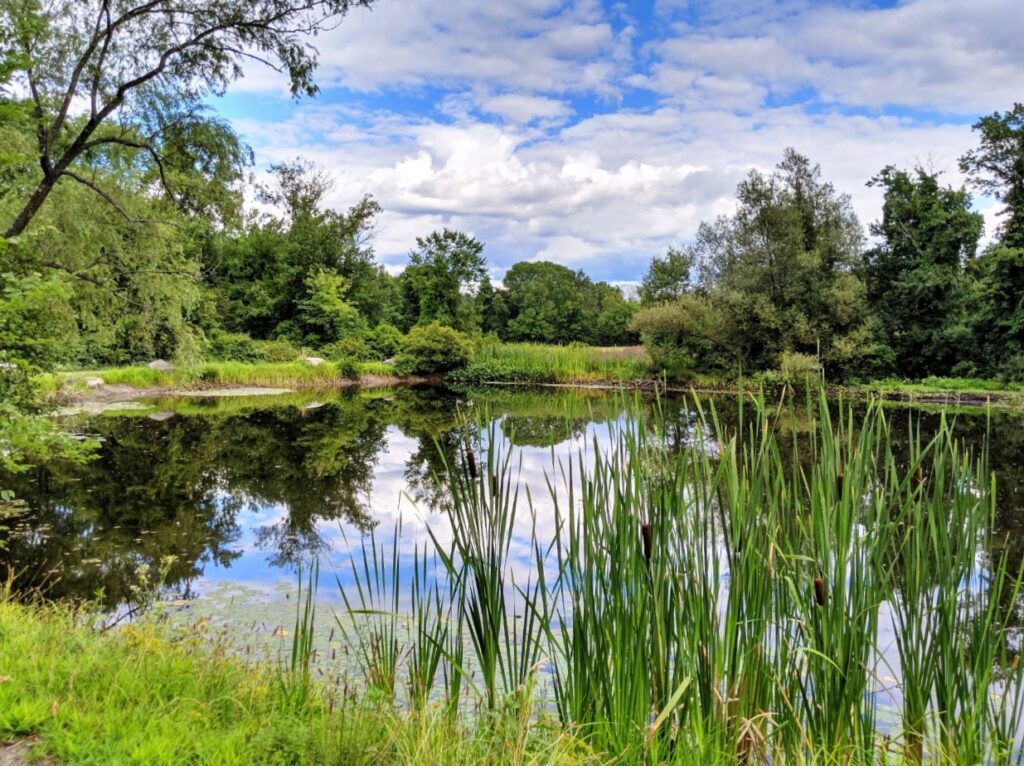
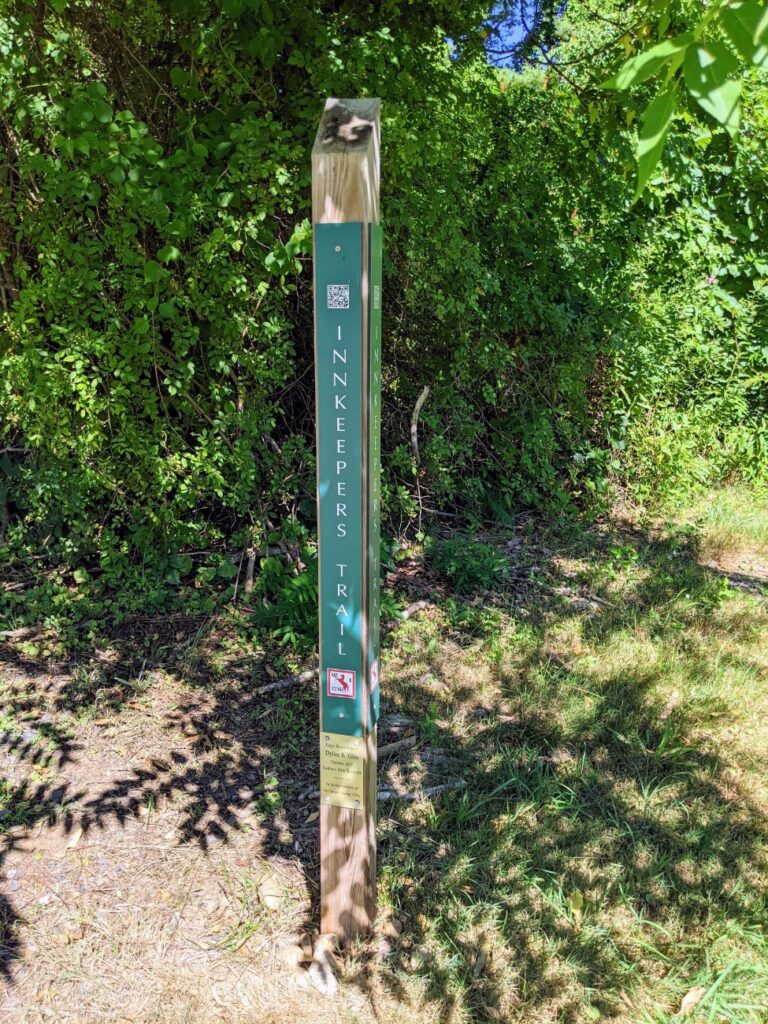
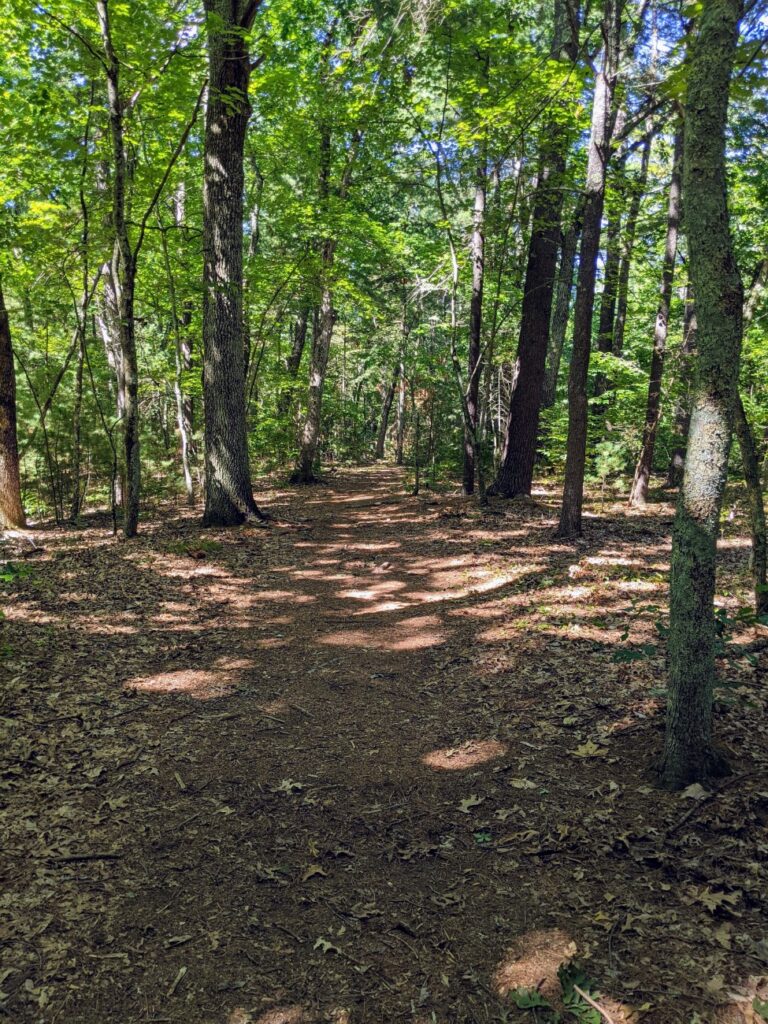
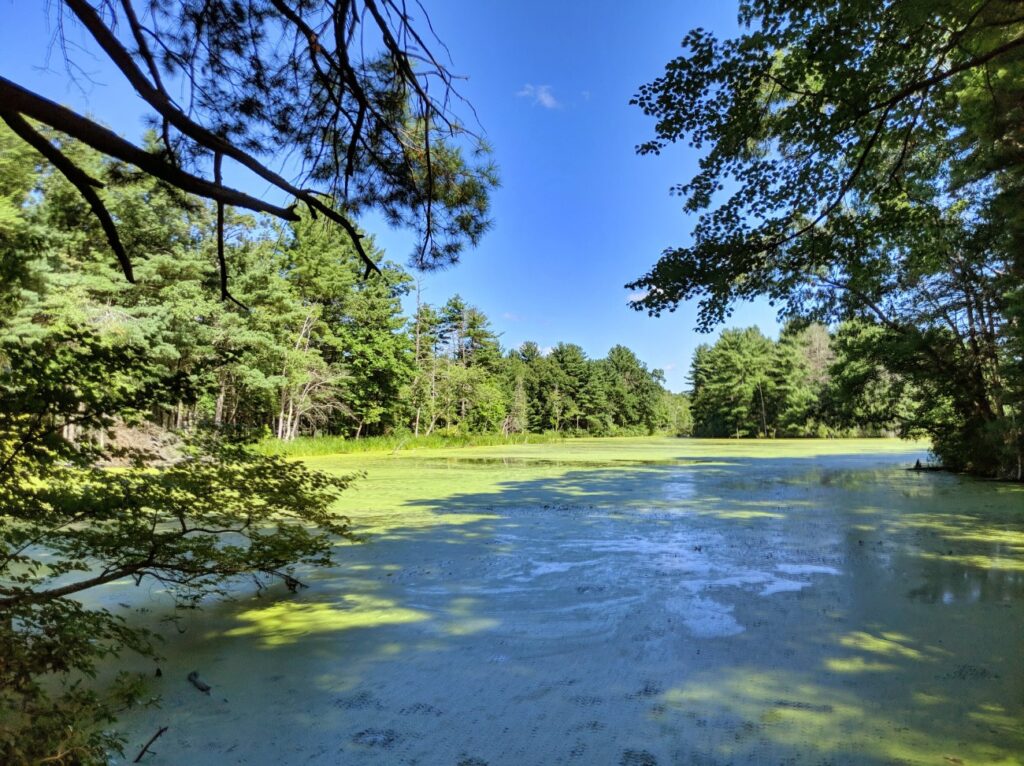
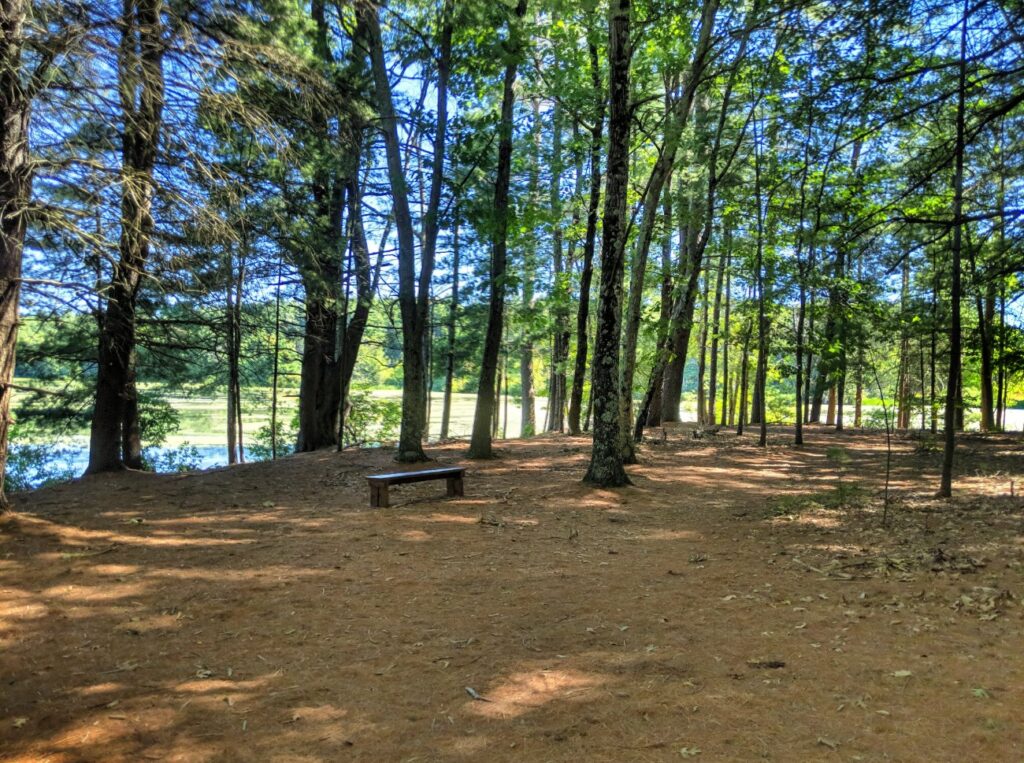
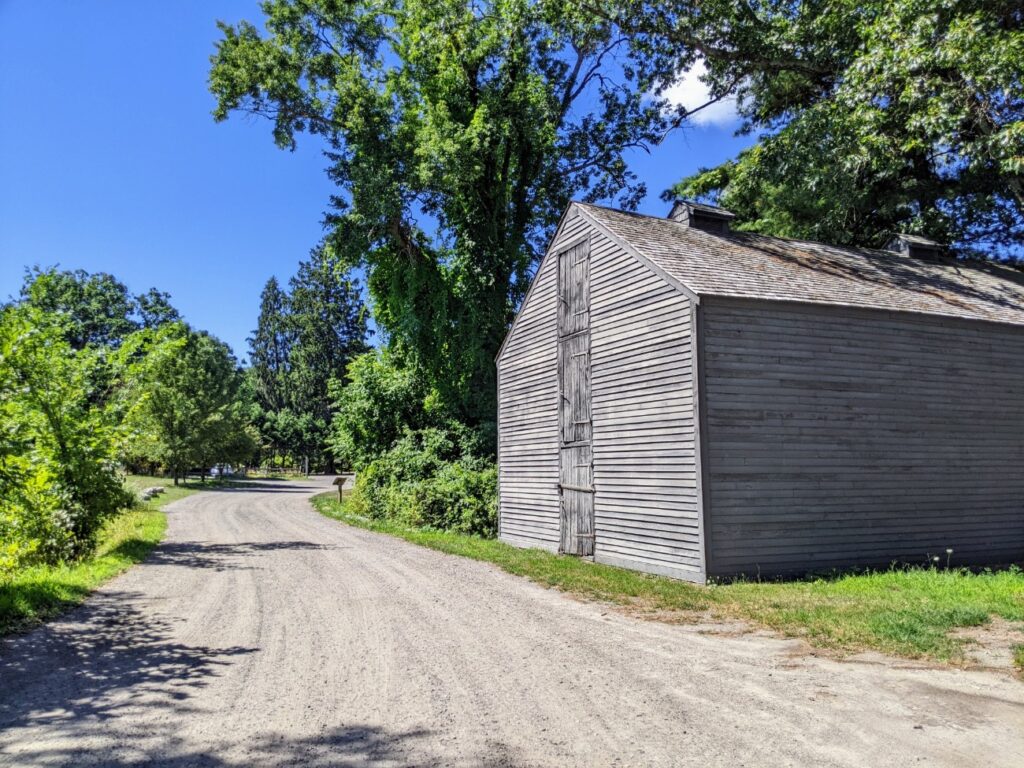
Redstone Schoolhouse
Walking the other way on the Old Boston Post Road, you find the Redstone Schoolhouse. This one-room schoolhouse is said to be the one referenced in the poem, “Mary Had a Little Lamb.” (“It followed her to school one day,” et al.) Sometimes this building is closed, but often it is open. Inside is fully furnished with desks and slates, and even hats and quills as if it were still in use.
When it is open, there is a docent outside that knows everything about the local history, just ask! She even has games for kids and hoops to play with. (There’s also one of those little free libraries right there, which I love.)
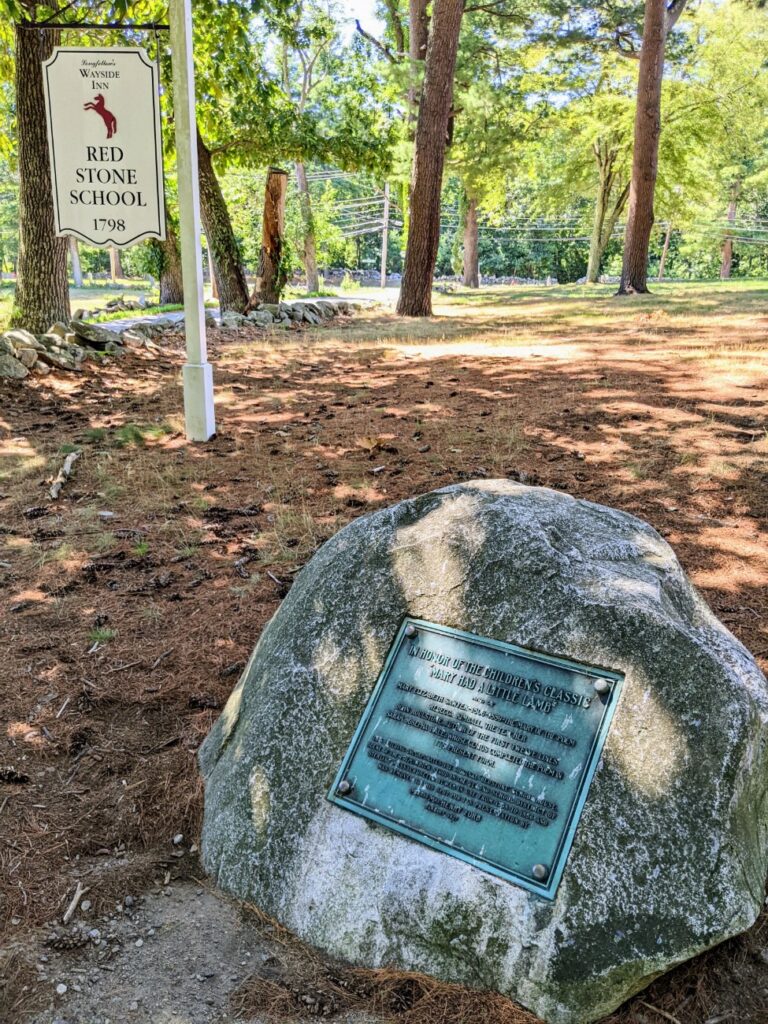
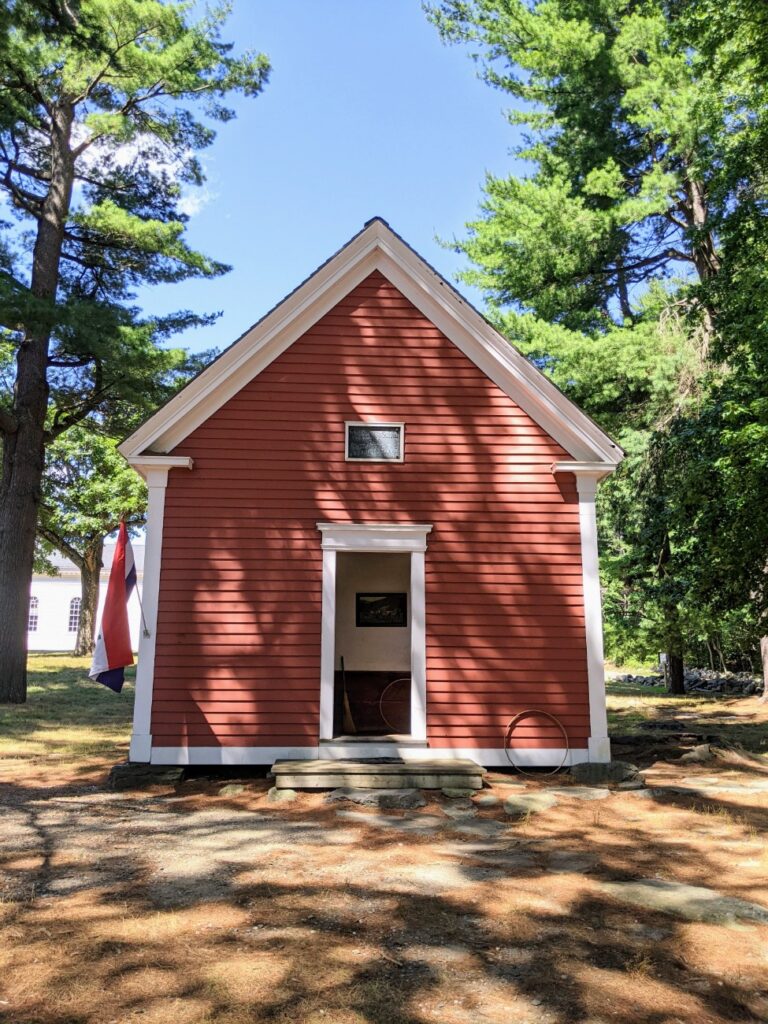
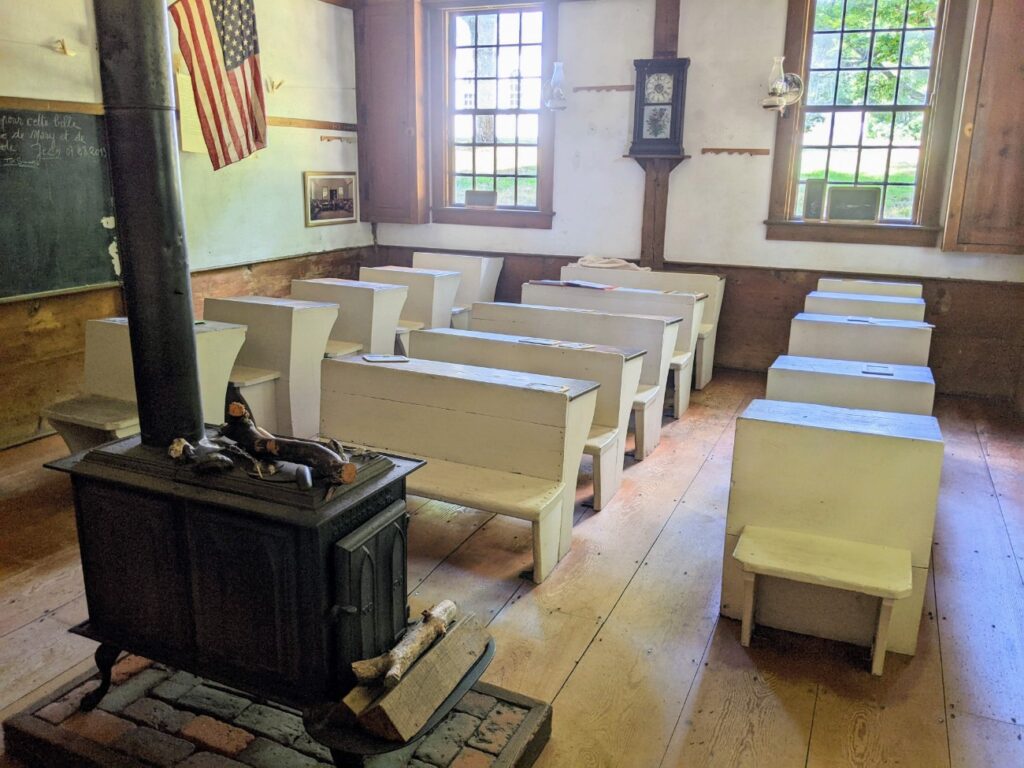
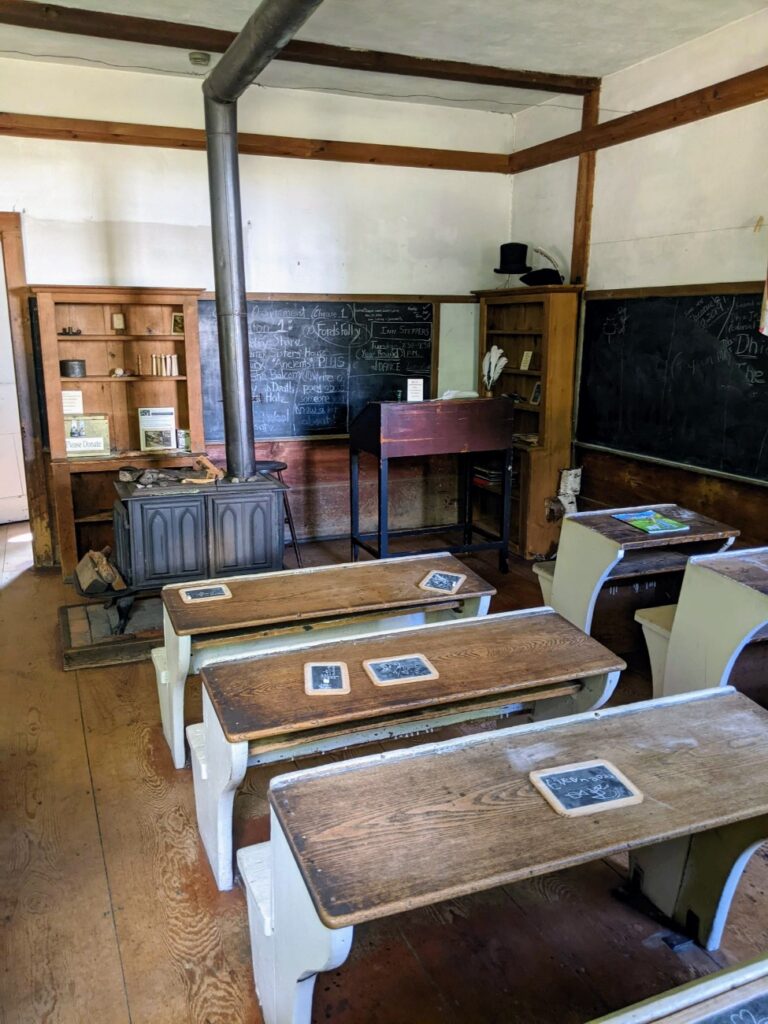
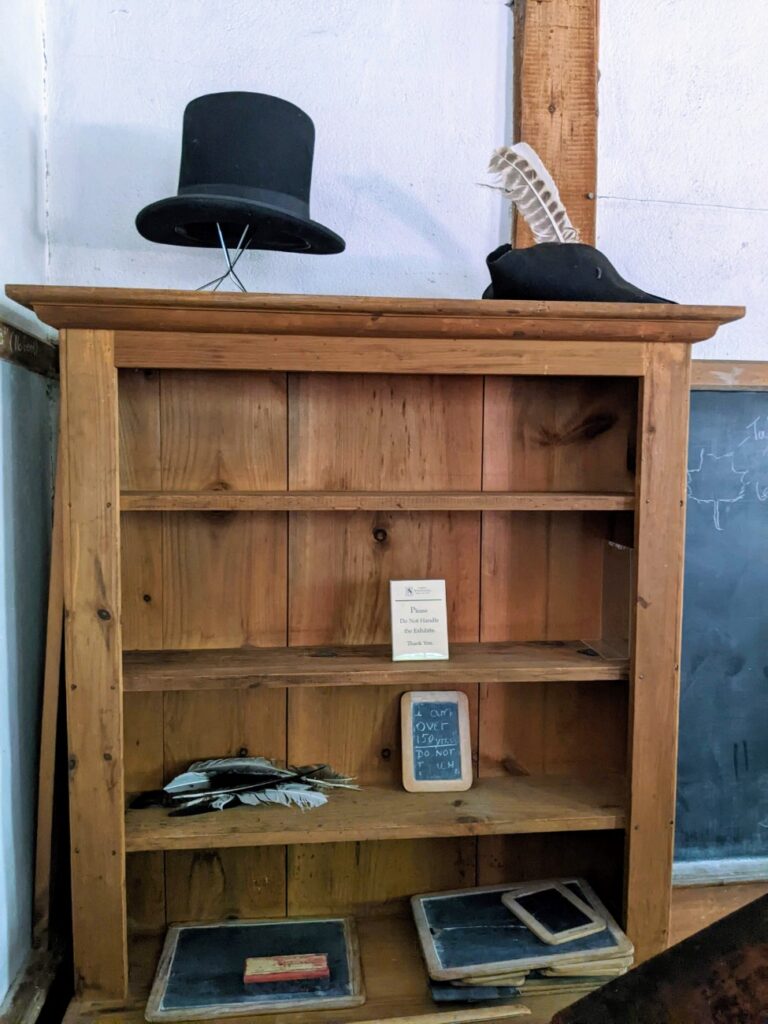
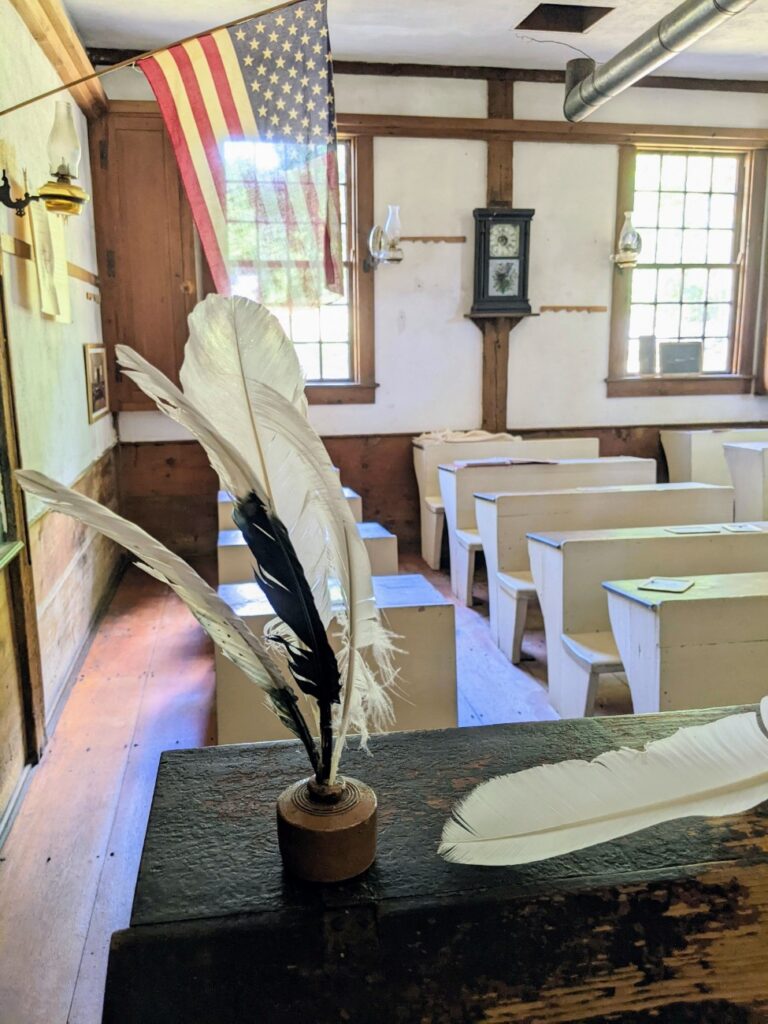
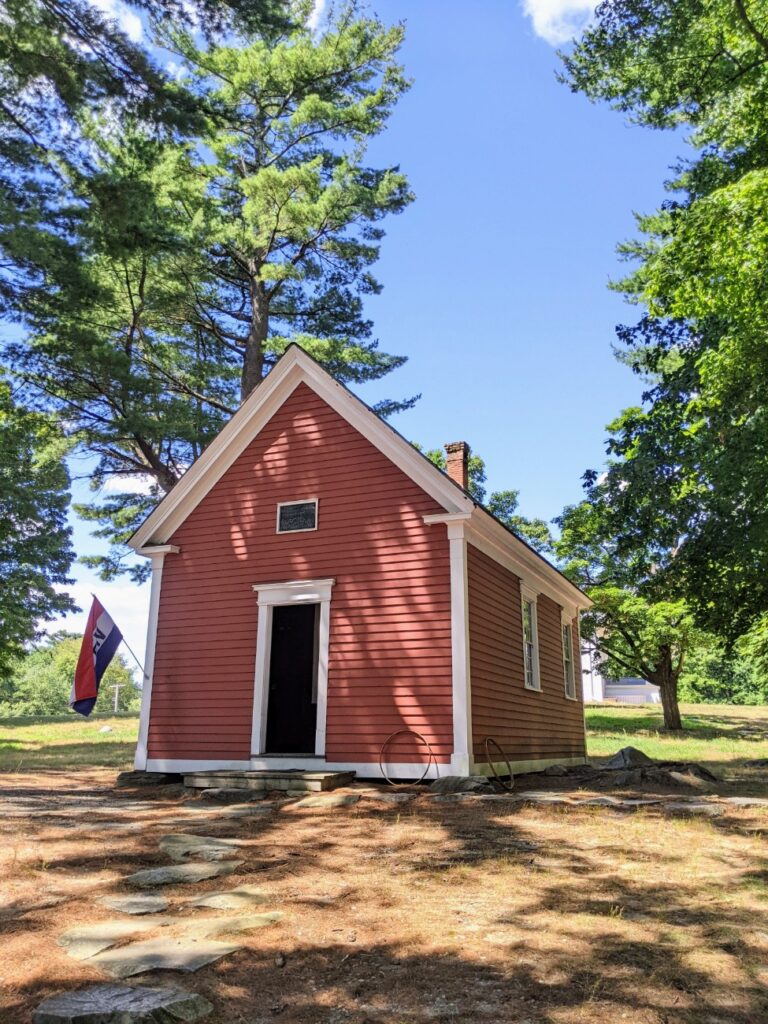
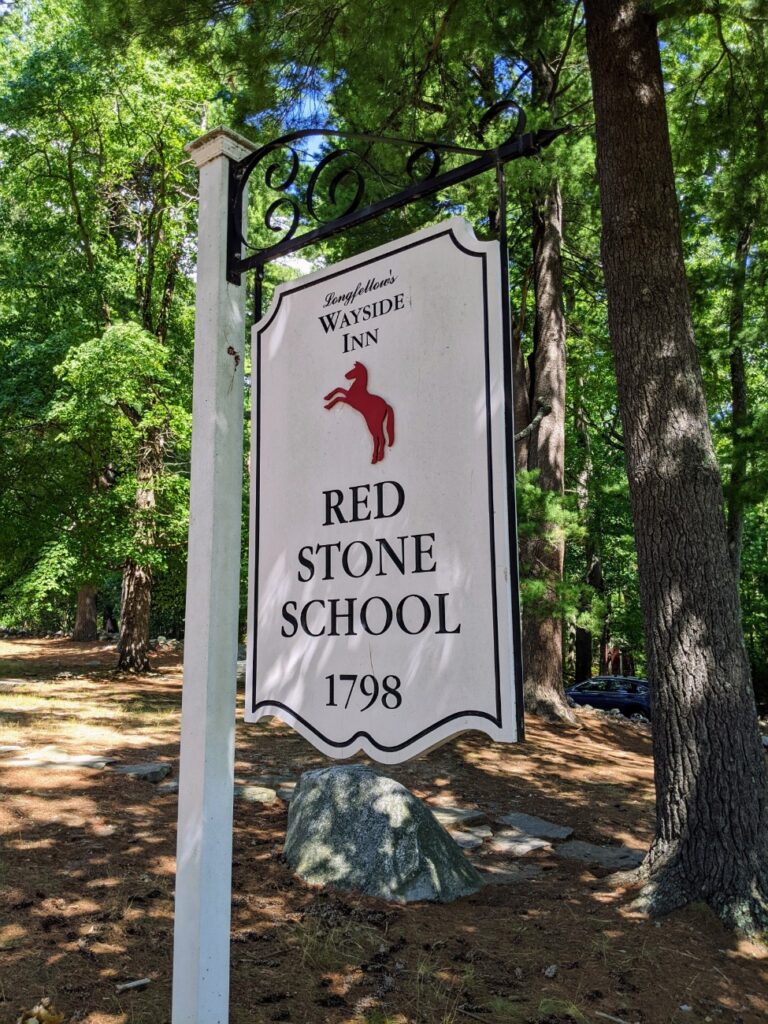
Martha-Mary Chapel
The Redstone Schoolhouse is basically on the grounds of the Martha-Mary Chapel, a picturesque white church on a hill with a pretty red brick circular drive. This chapel wasn’t relocated, it was built on-site by Ford and some students in 1940. Ford named it after his mother and mother-in-law.
The chapel hosts special events, such as the current telling of A Christmas Carol by actor Brad Amidon. Plus, I imagine you can rent it for weddings.
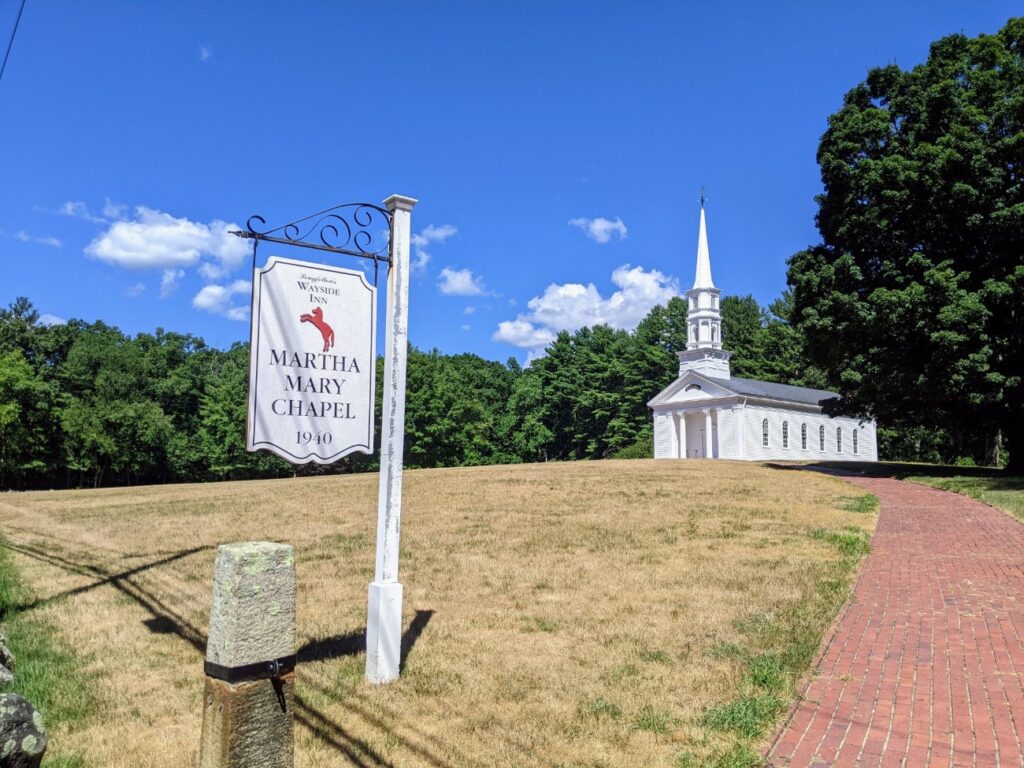
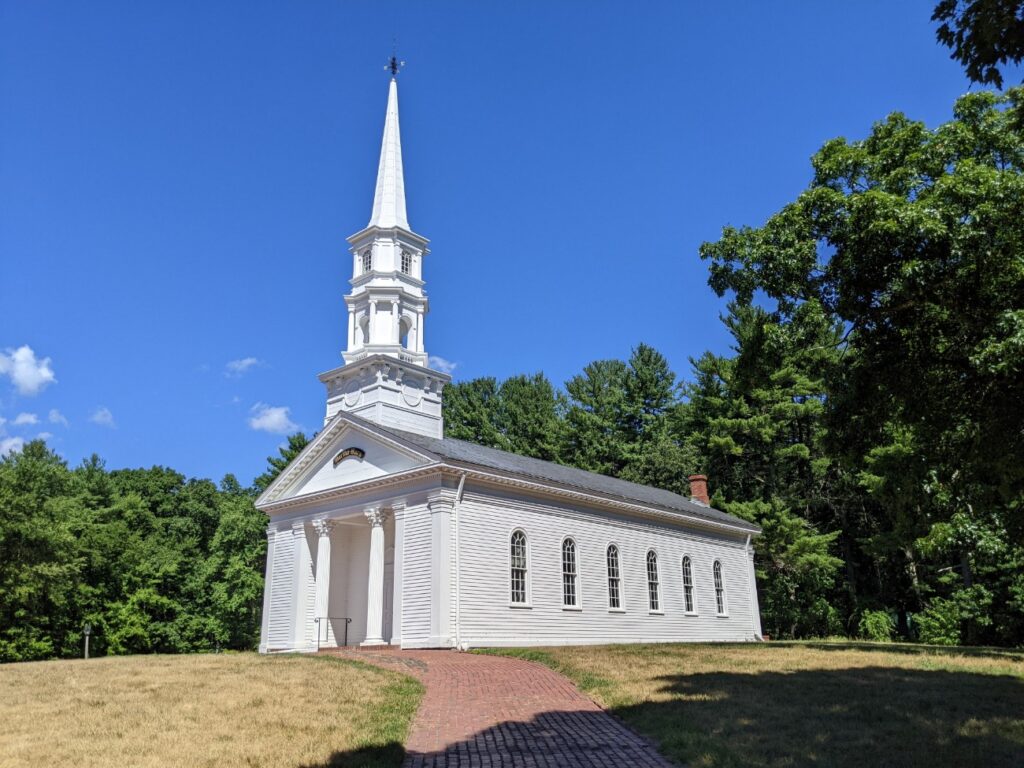
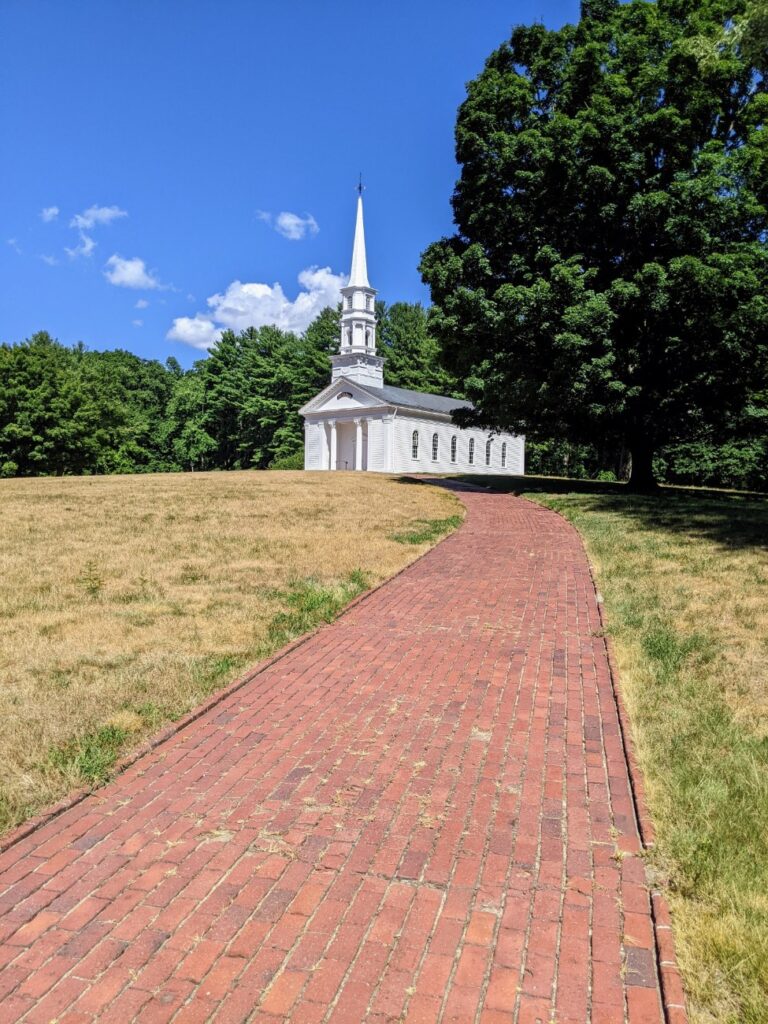
Grist Mill
Farther down the road and across the street is the working Grist Mill. Ford built the mill in 1929 on a pretty brook near the site of the Howe’s old mill. The stone walls and big red wheel make a good picture spot, and there is plenty of room to sit around and picnic or hang out. There is a path from the upper part of the mill along the brook that feeds the wheel.
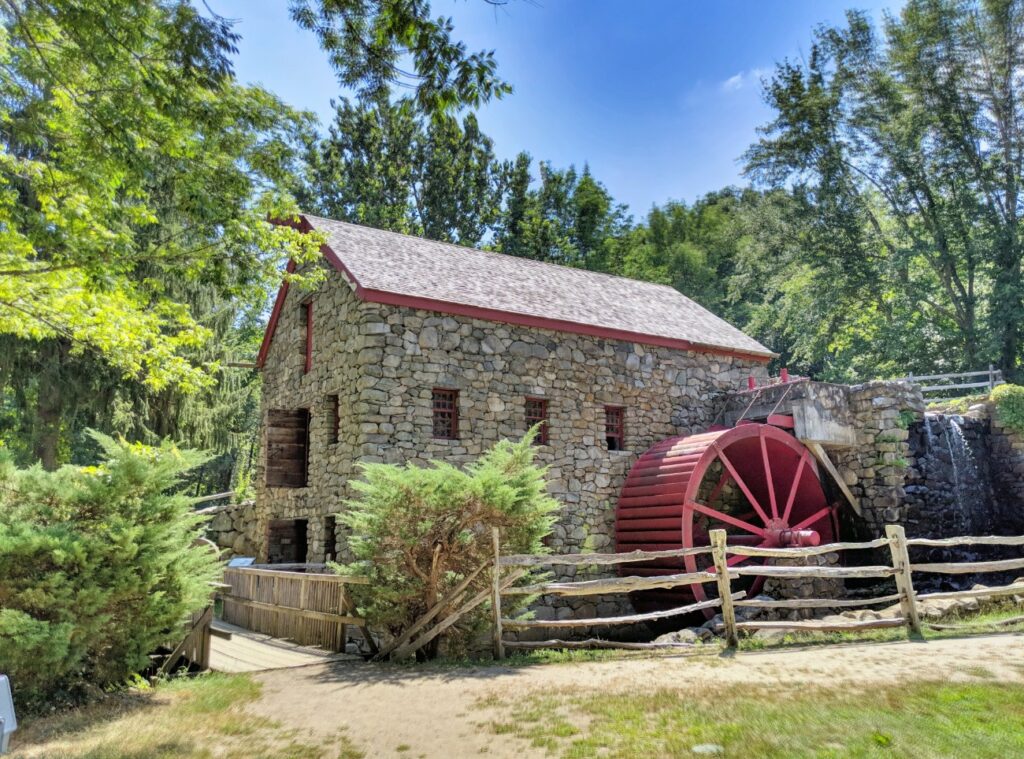
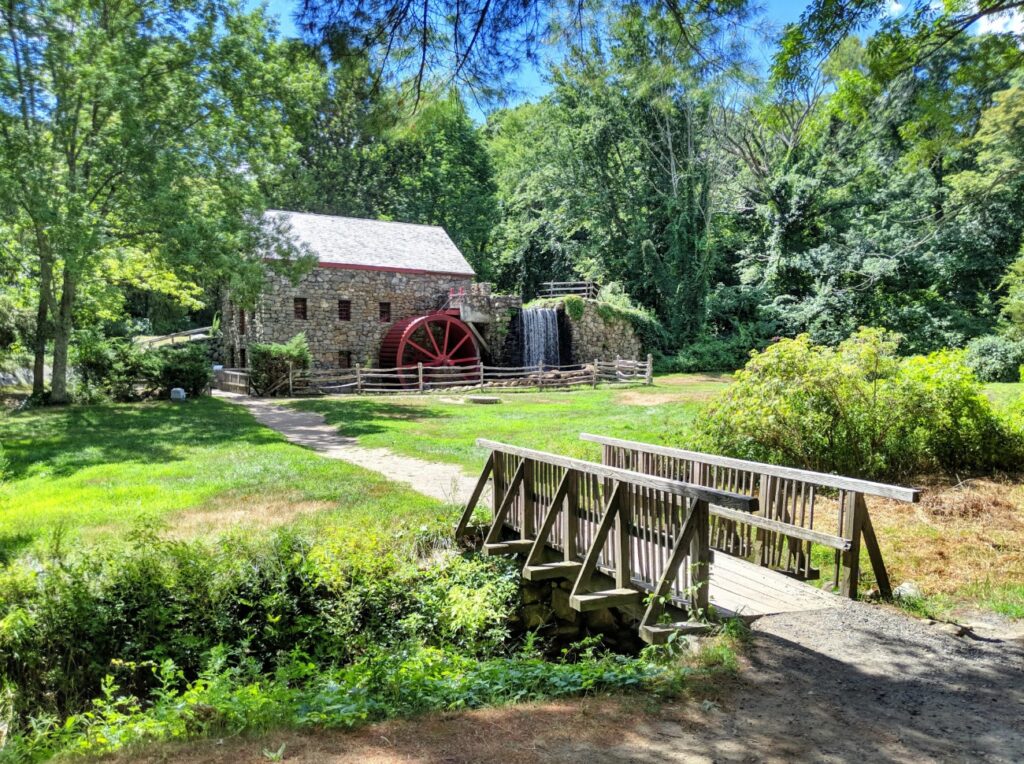
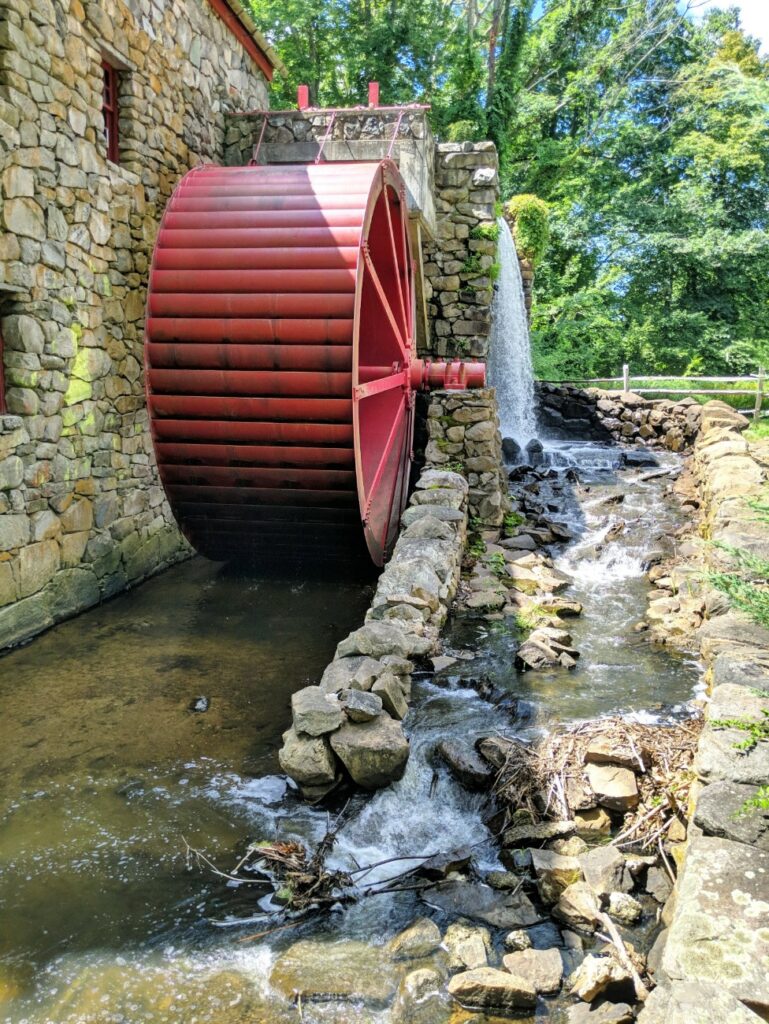
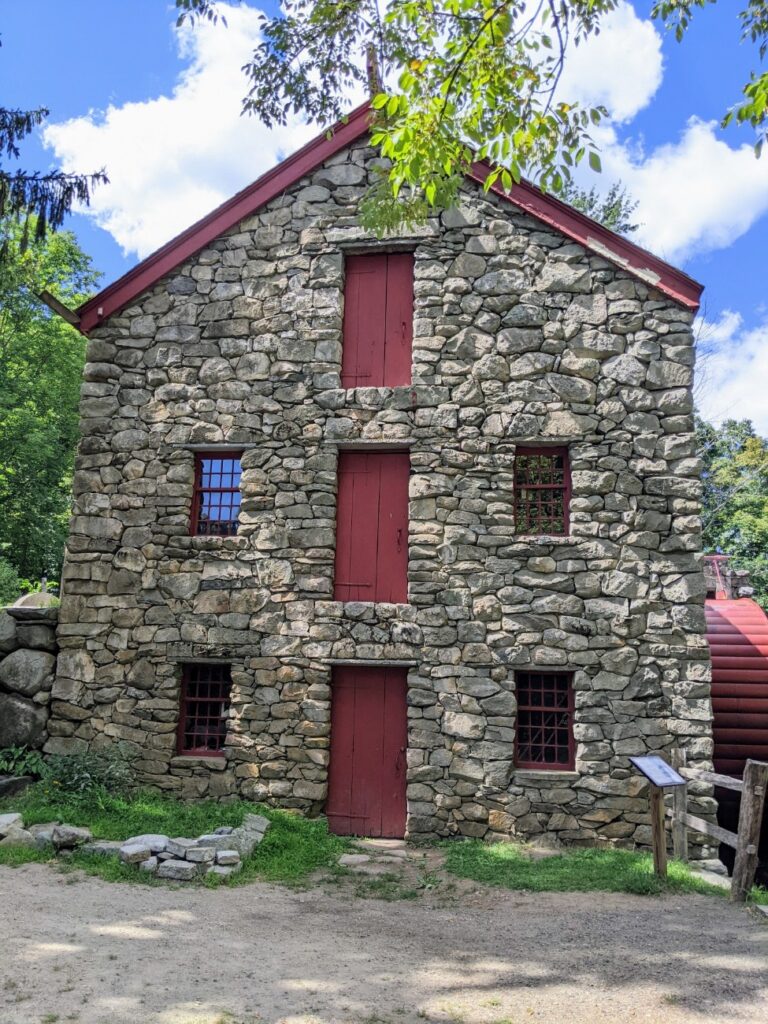
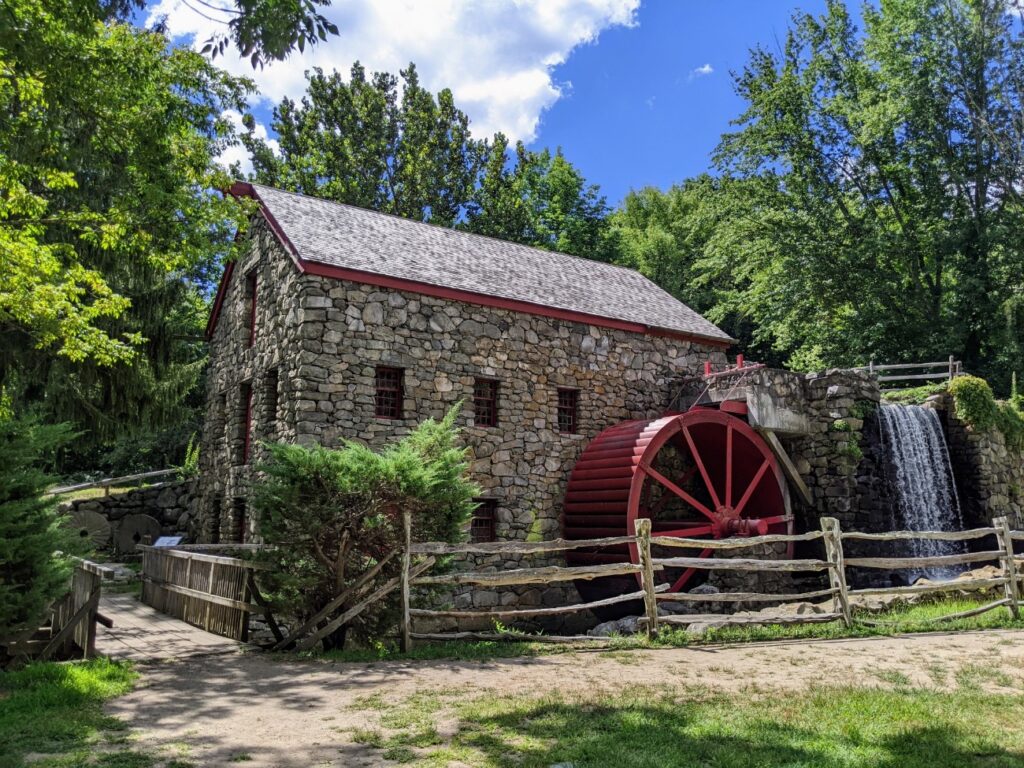
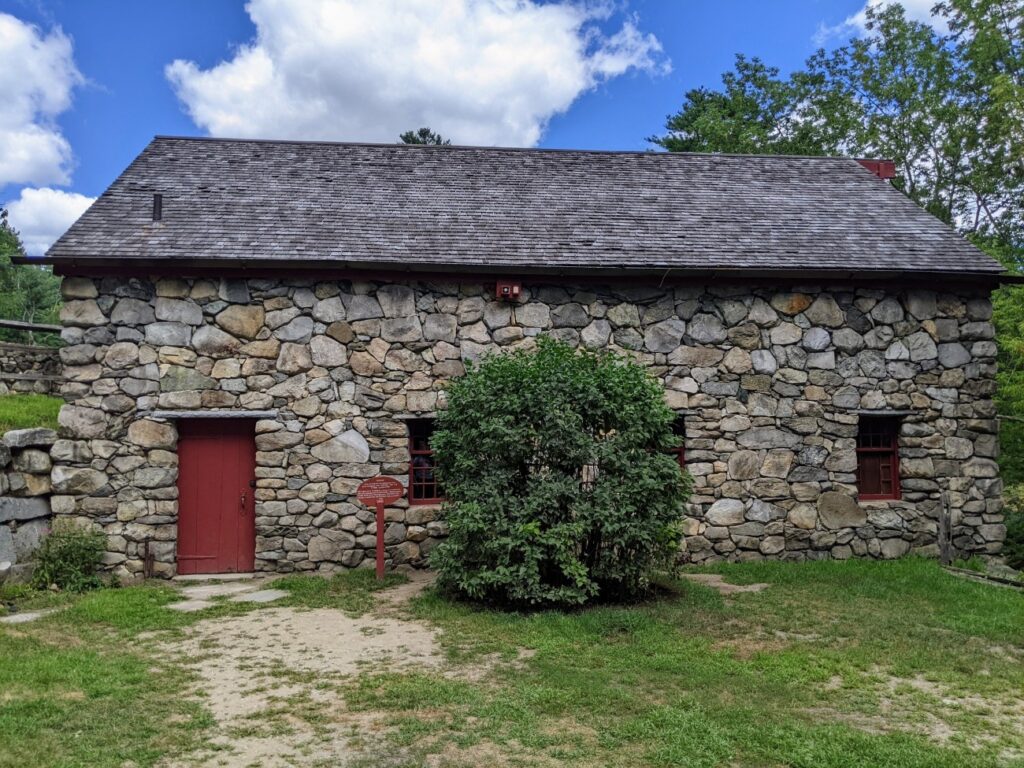
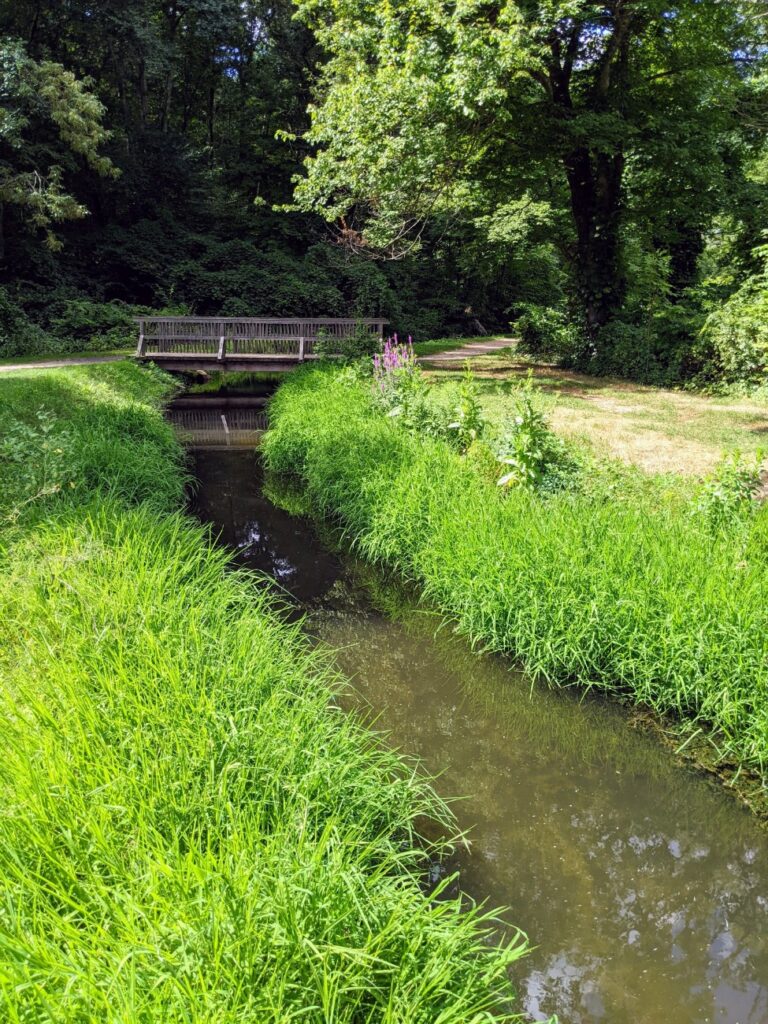
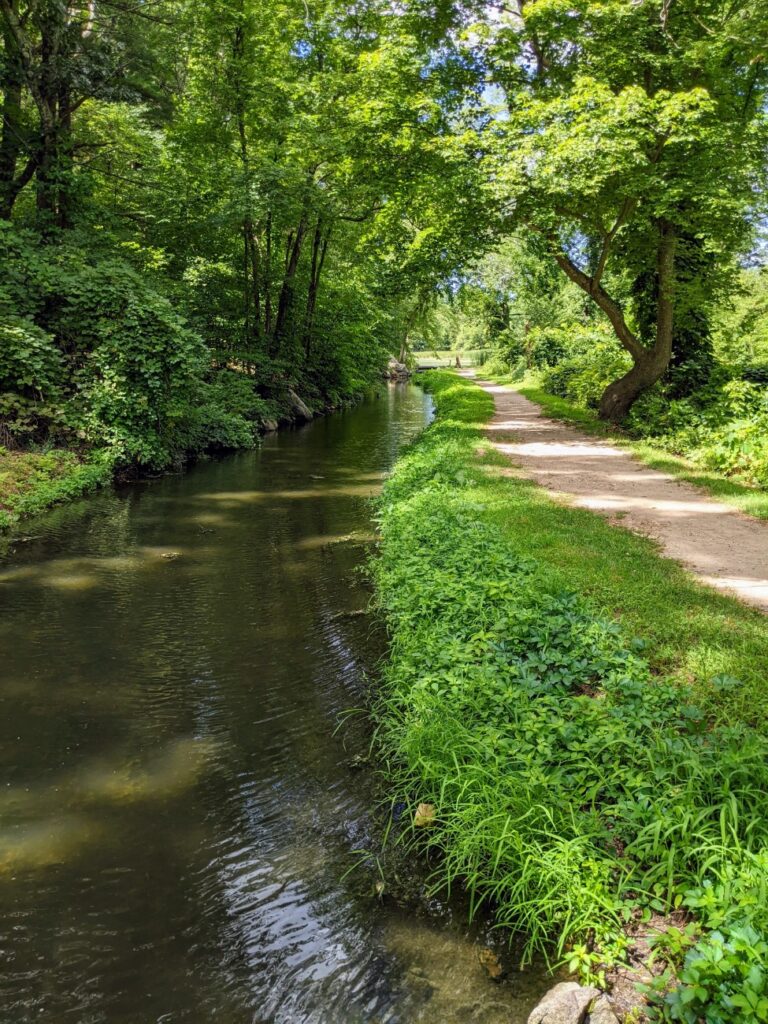
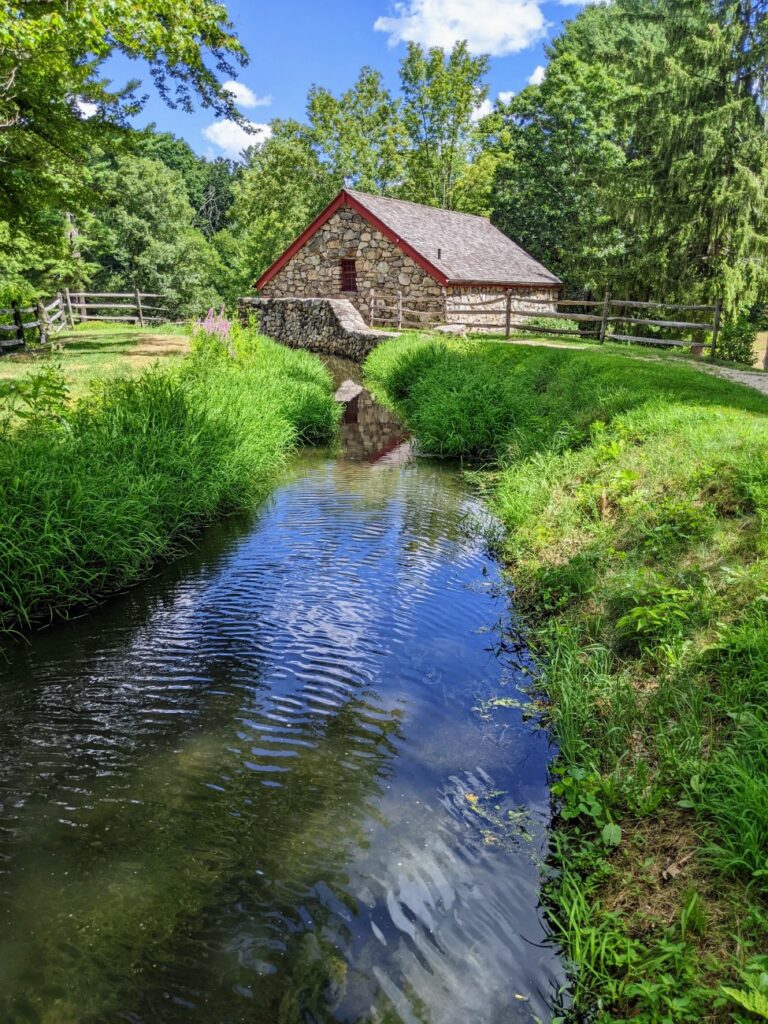
The Grist Mill actually functions to grind corn and wheat used at the Wayside Inn. Upstairs in the mill, you see all the chutes and grinding stones, while downstairs are all the complex gears being turned by the wheel outside.
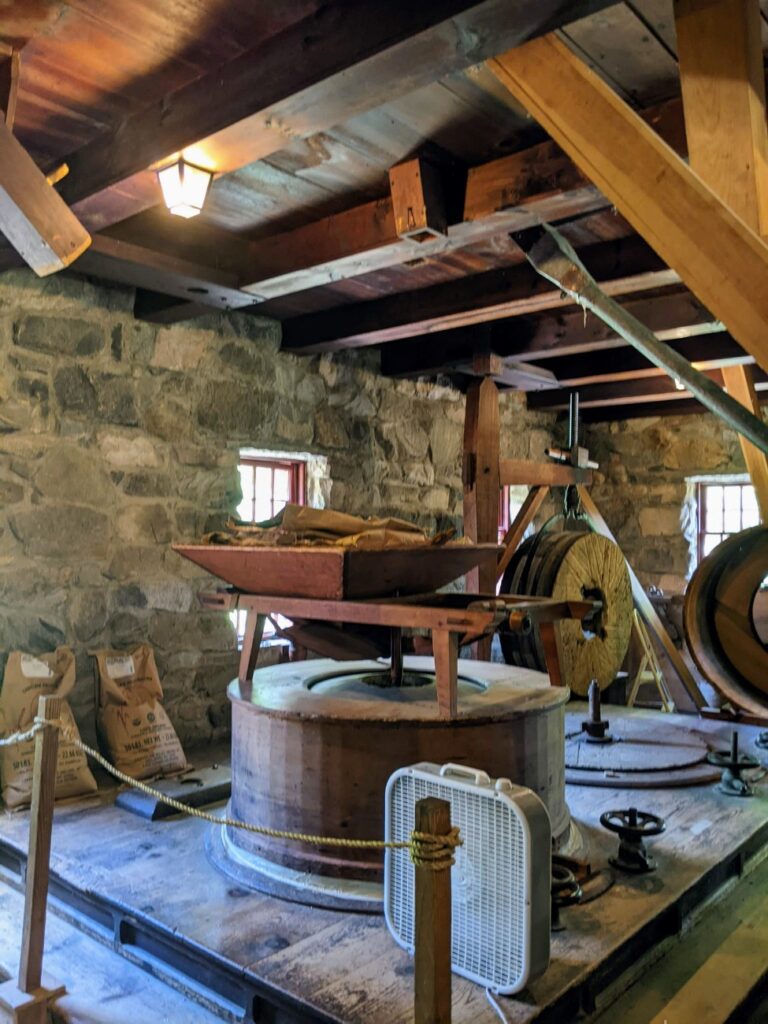
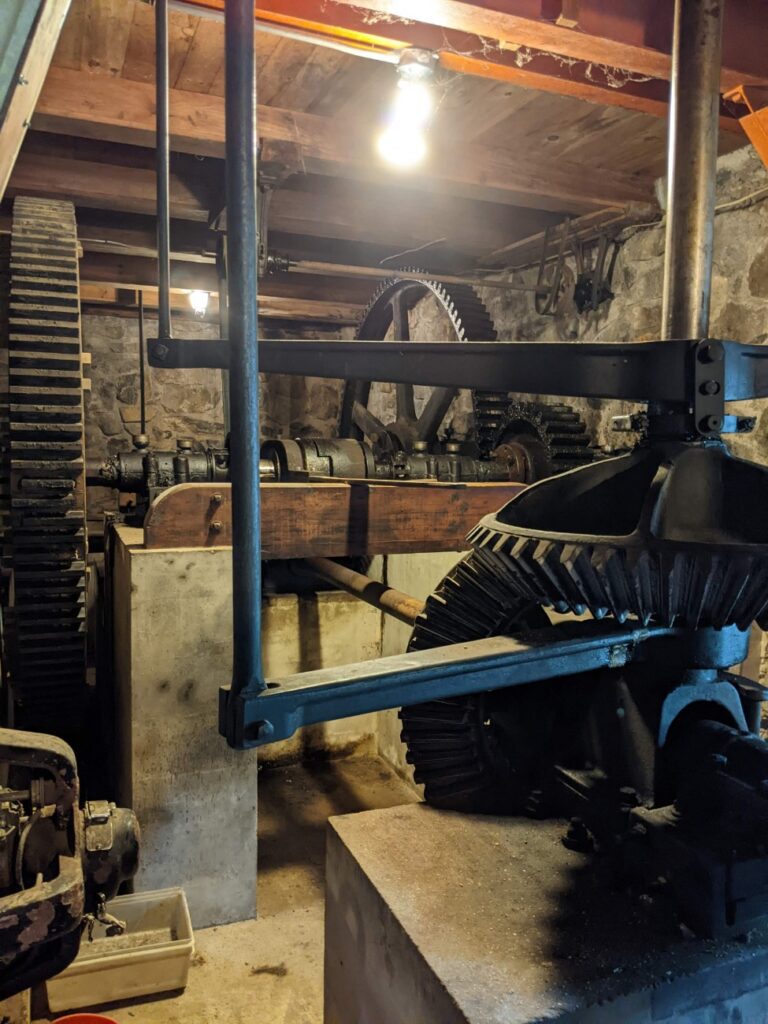
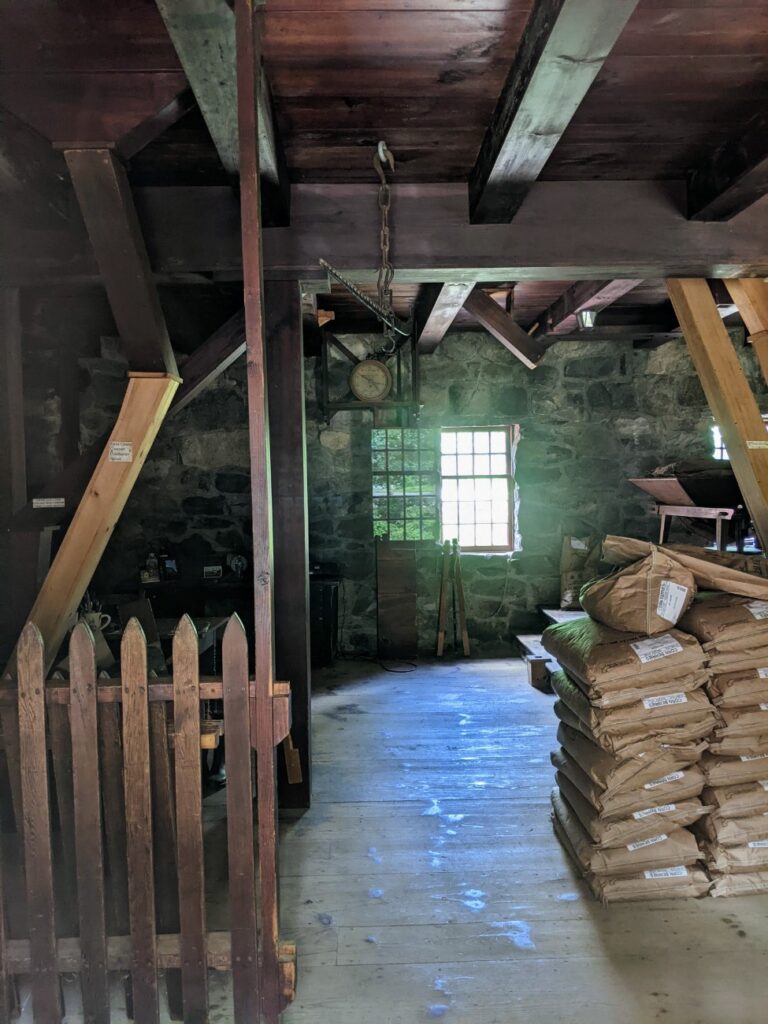
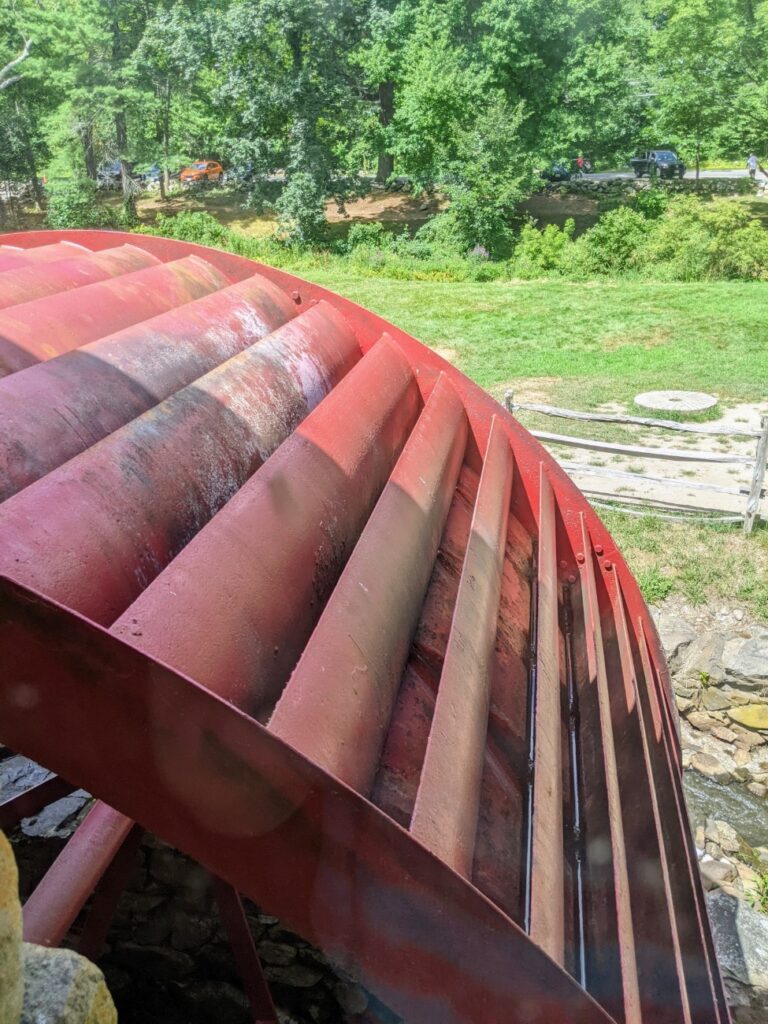
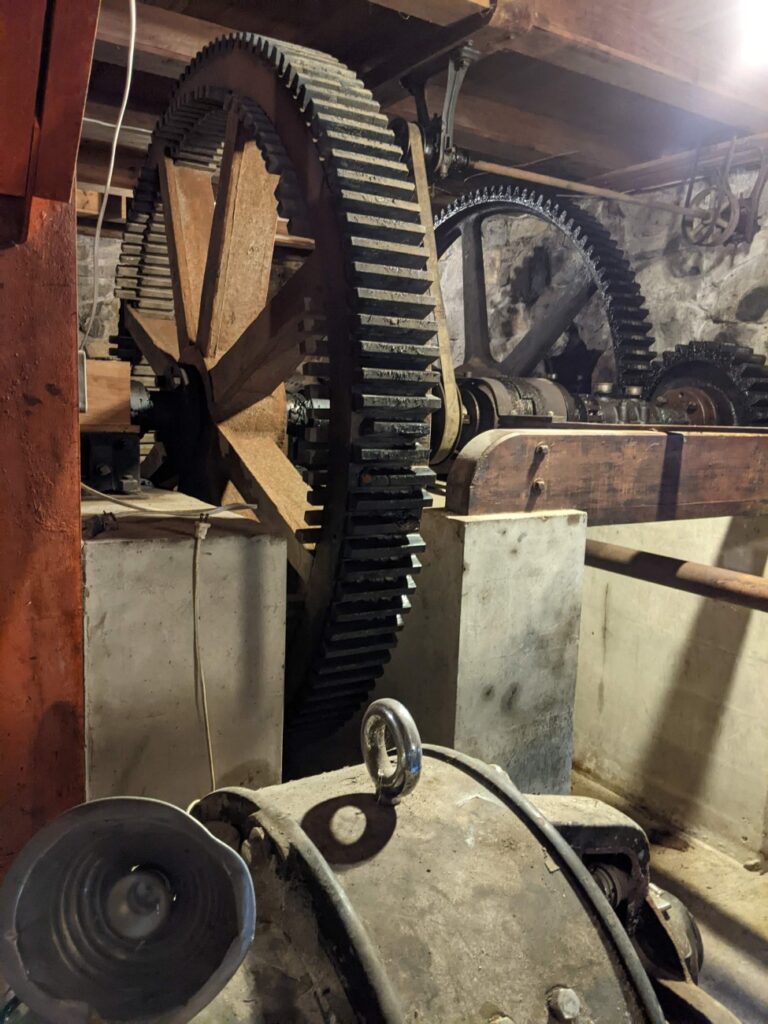
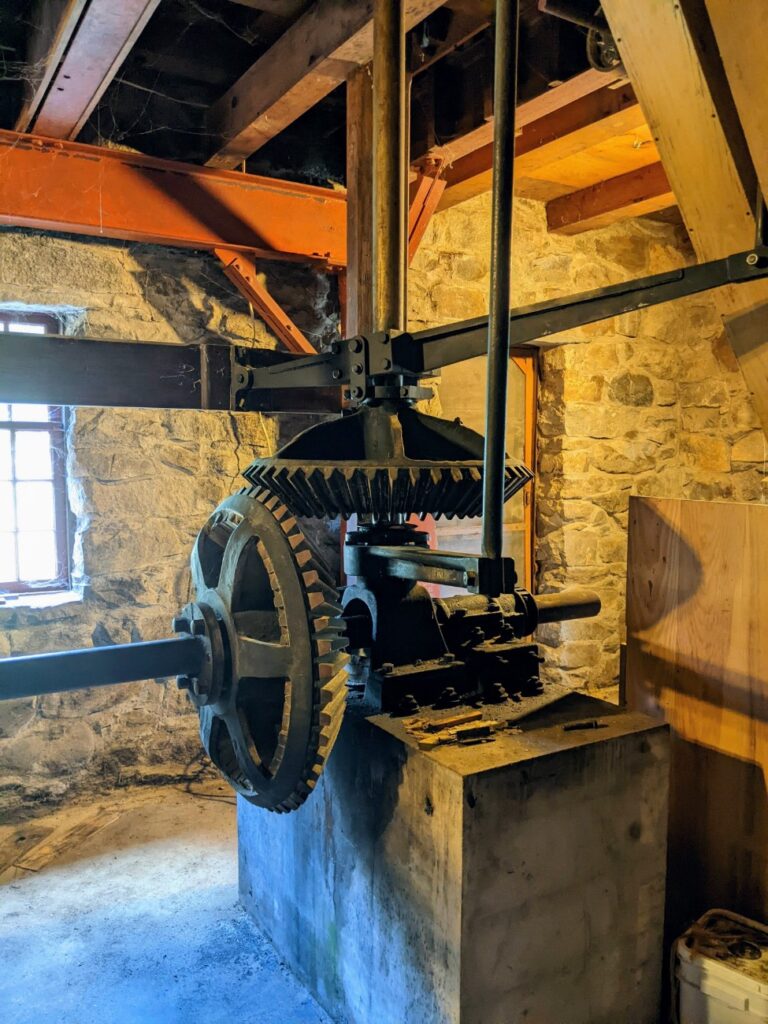
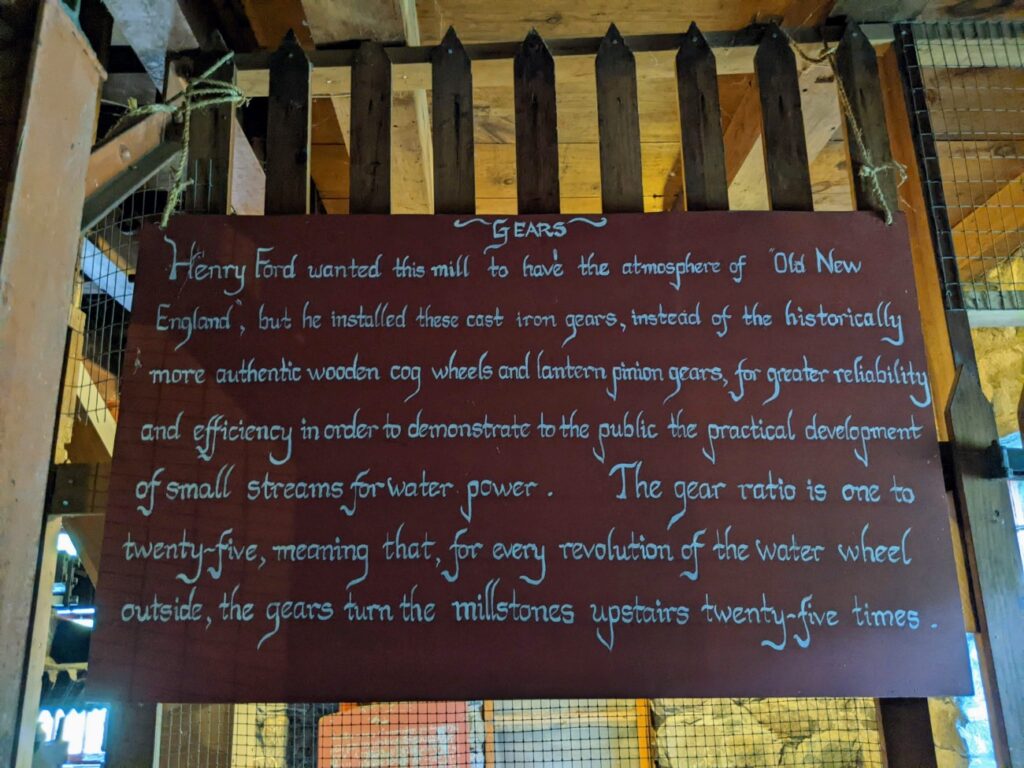
The hard thing I found about the Grist Mill is that it isn’t always open when it says it is. It seems like it depends on the schedule of the main volunteer who runs it. During my visit, there were a few of us wandering around wondering when it would open up.
Walking Trails & Other Outbuildings
It’s easy to walk down the post road and the little connecting paths to each building. But there is also a larger, outer loop called the Innkeeper’s Loop. It’s only about 1.5 miles long and takes you behind most of the buildings. (And I think incorporates that loop out to the lake.) Maps of the trail are at the front desk of the Inn.
I ended up walking the inner paths to the school, chapel, and grist mill, then walking the outer loop back to the Inn’s parking lot. Walking this way, back toward the Inn but away from the road, you see the old Cider Mill, which was relocated and used by Ford to press apples from the Wayside Inn’s orchards. Now it’s just an old run-down barn with some graffiti.
Farther on is an underground Root Cellar that Ford built. It’s an acre in size and you can find the door if you turn left to walk on a path toward the road. The door is locked, but you can walk around on the grassy roof.
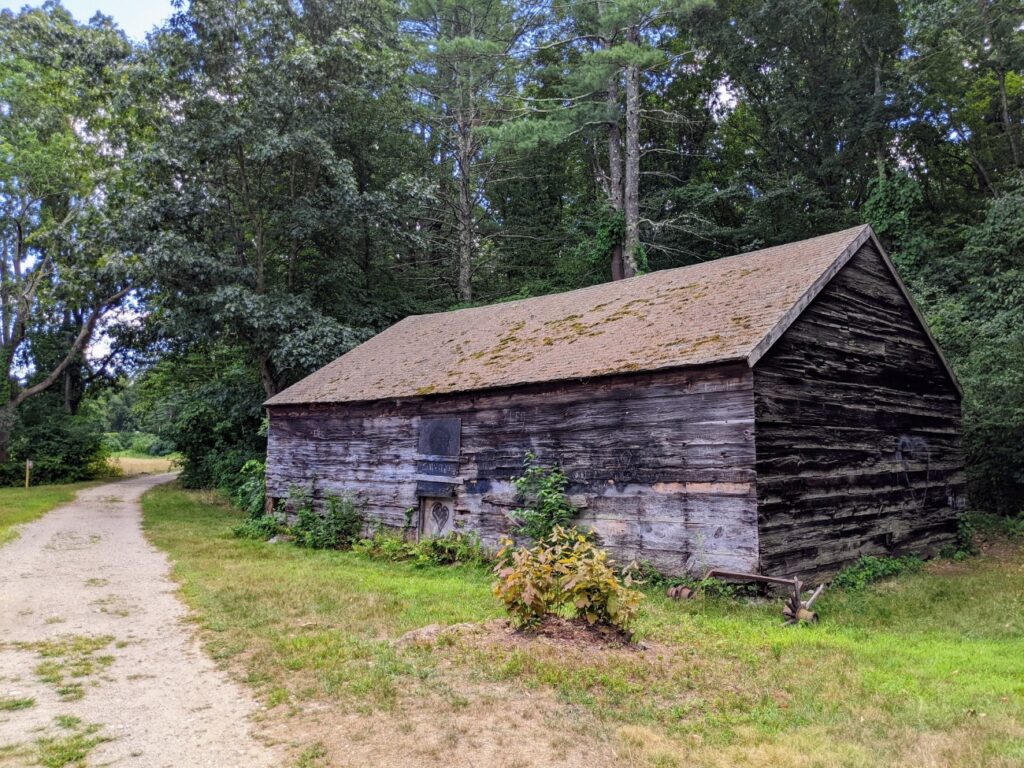
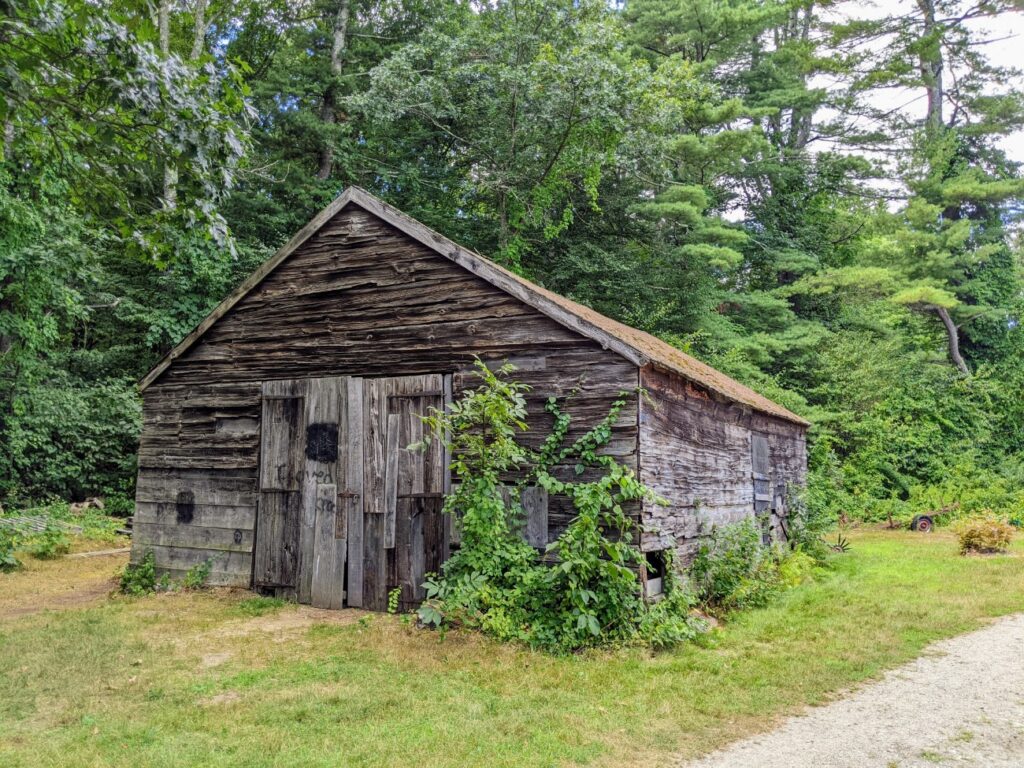
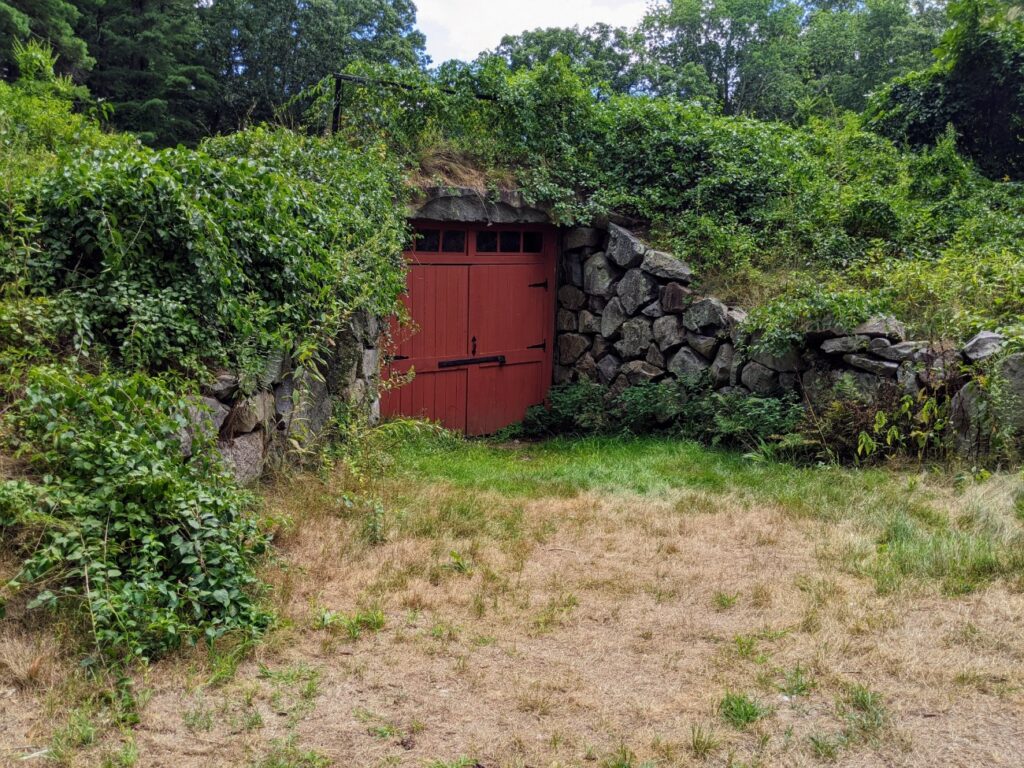
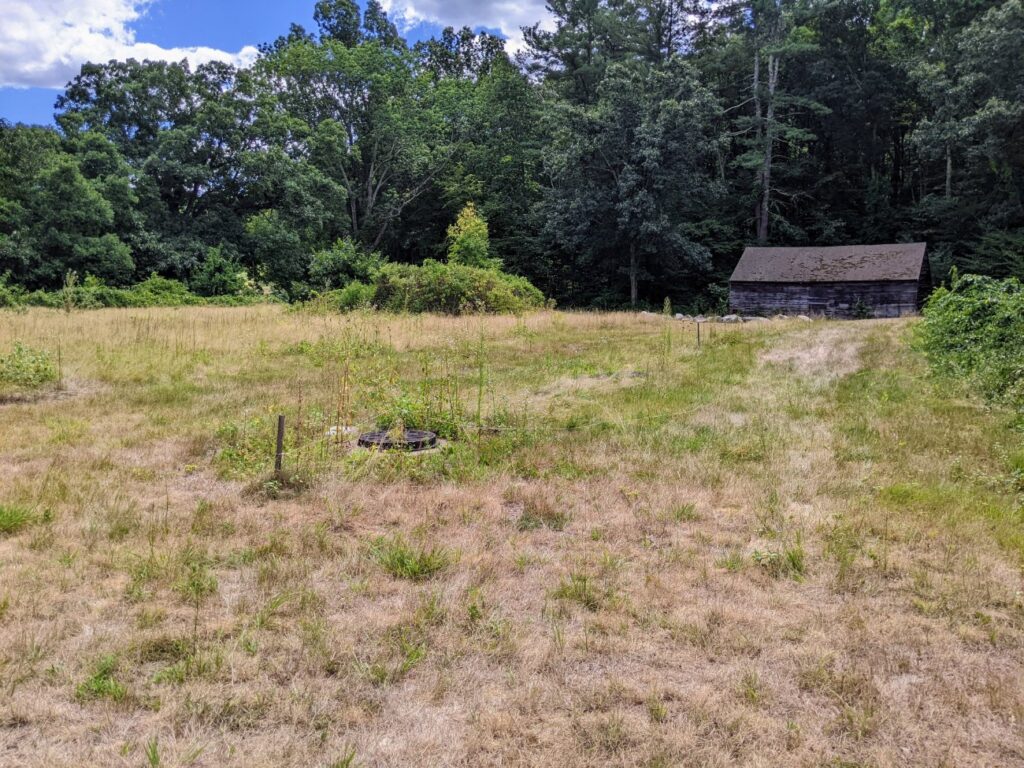
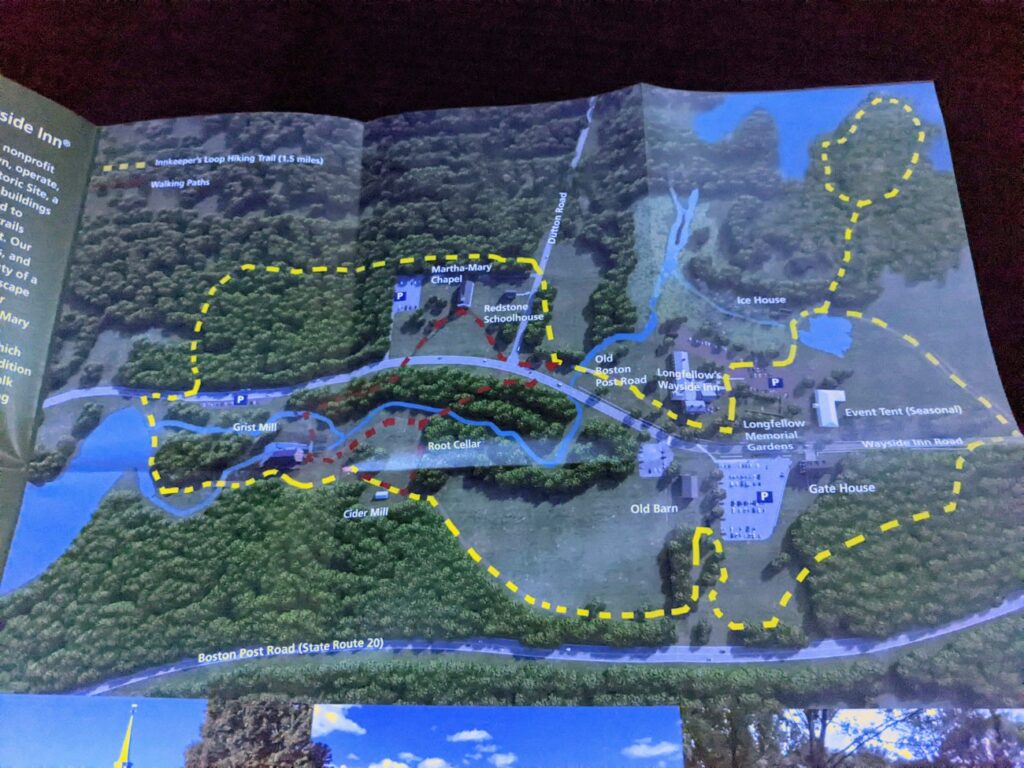
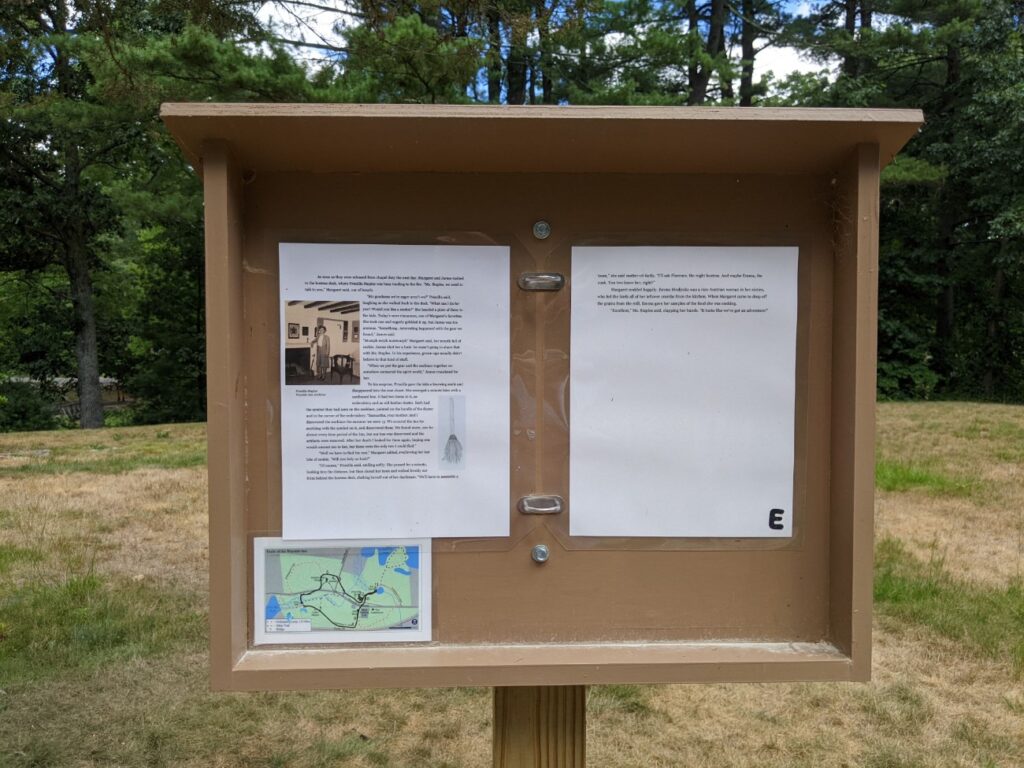
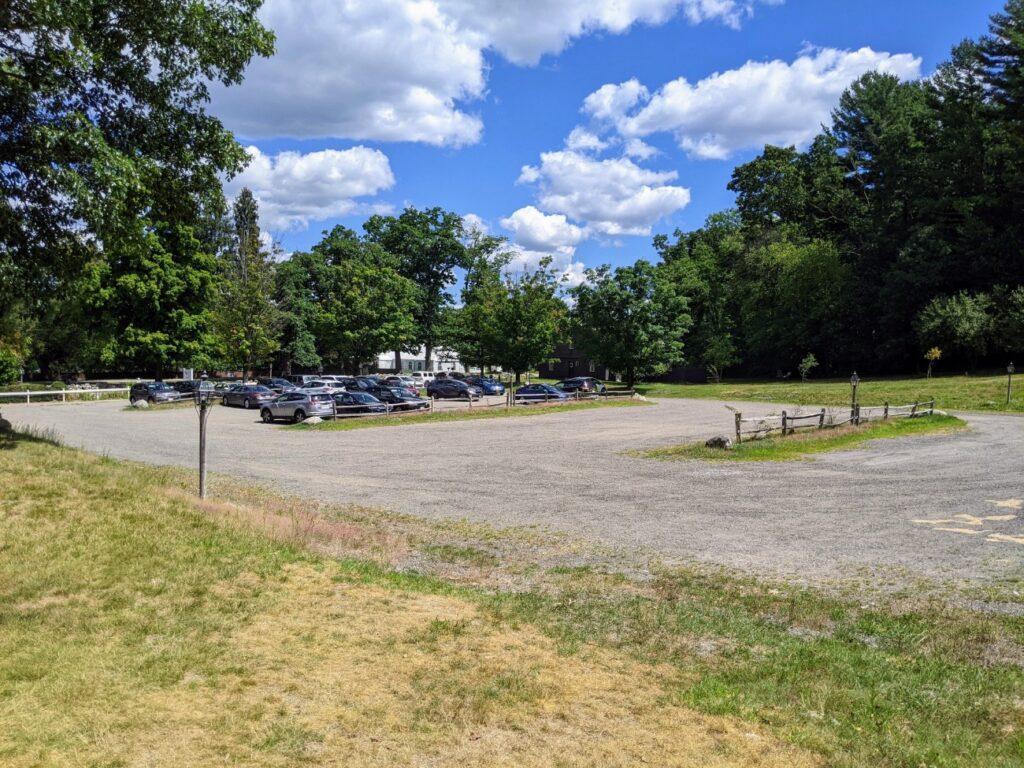
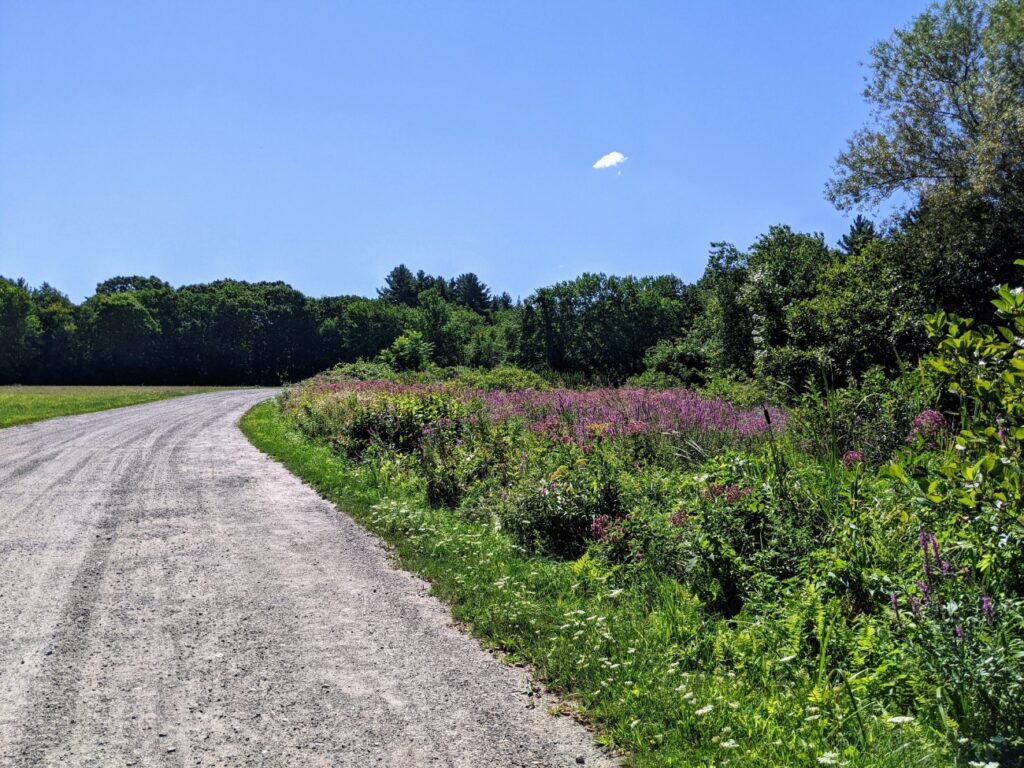
Old Barn & Gatehouse
Back at the parking lot, there is the large Old Barn. This is the last of the Howe’s original barns and now holds a very charming antique, gifts, and plant shop that is worth ending your visit with. Just make sure you bring cash, though there is an ATM on site.
On the other side of the parking lot from the barn is the Gatehouse. Originally built in 1913 to house the current innkeeper’s coach and antiques, it was moved by Ford and is now used to house the offices of The Wayside Inn Foundation.
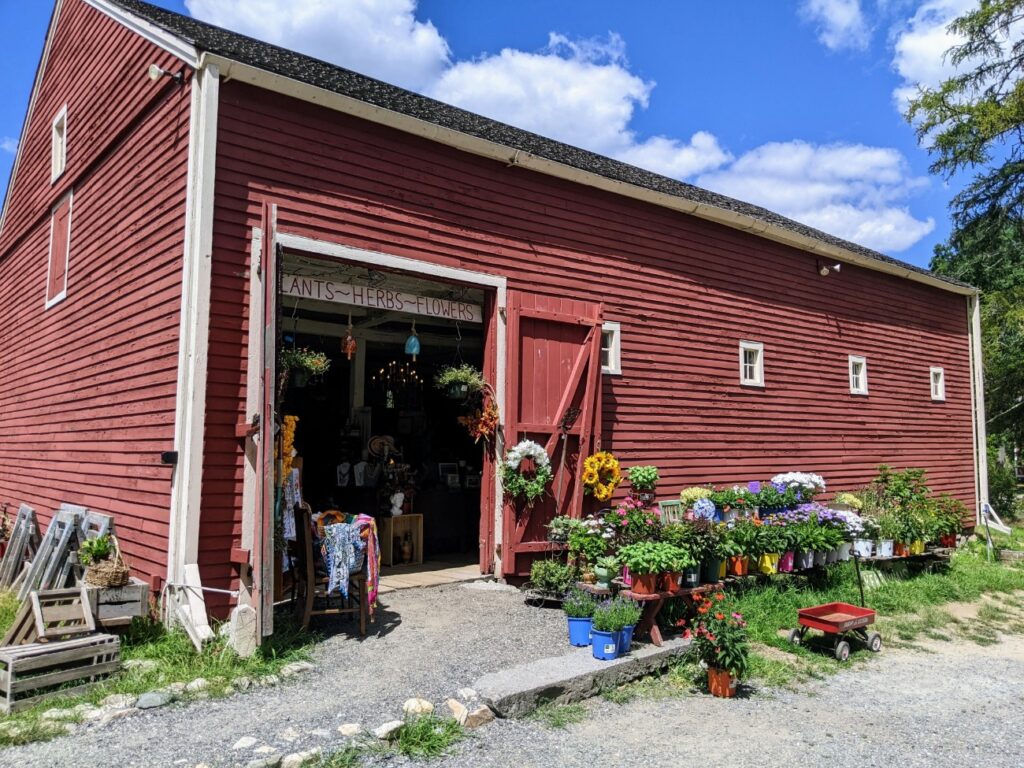
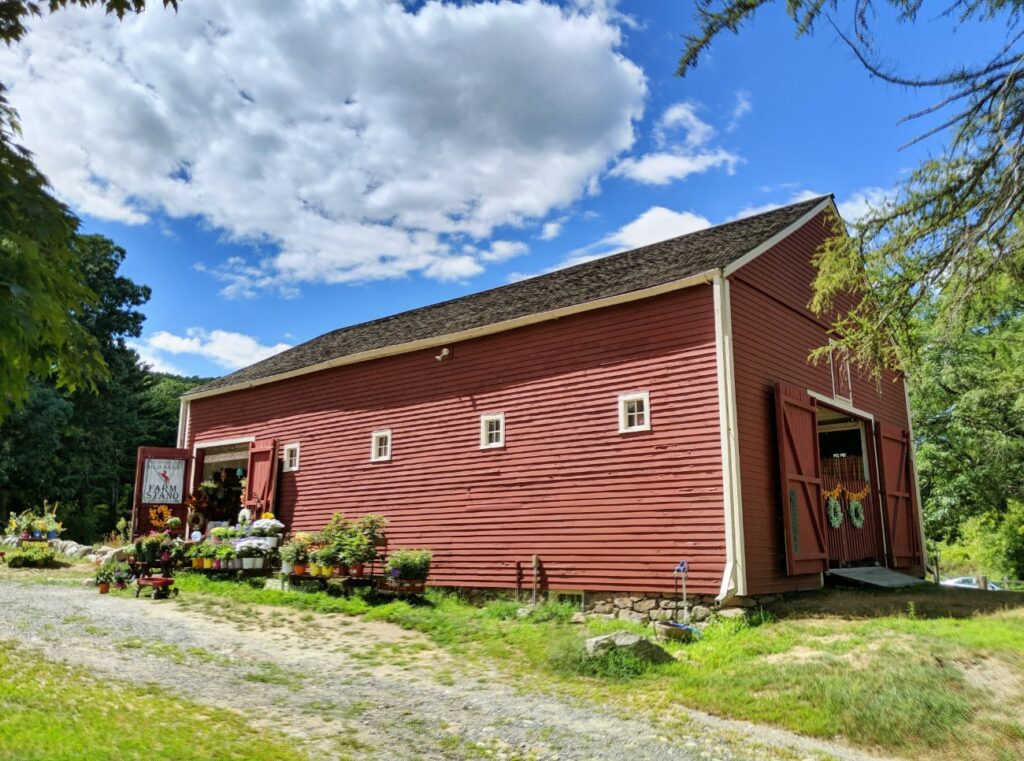
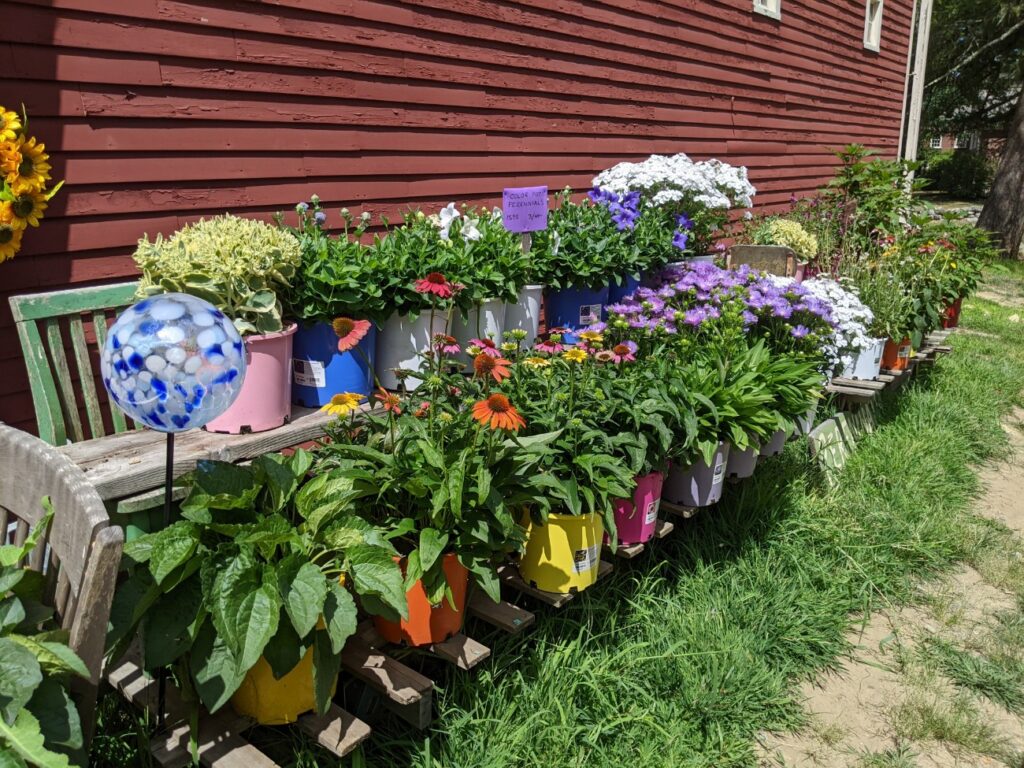
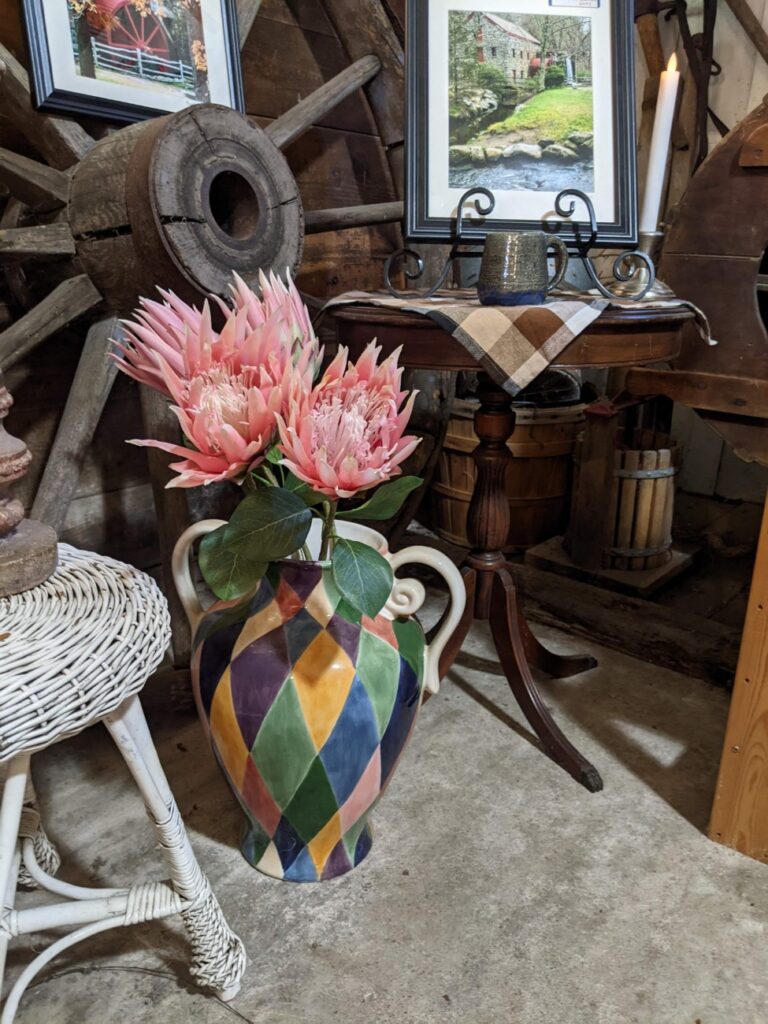
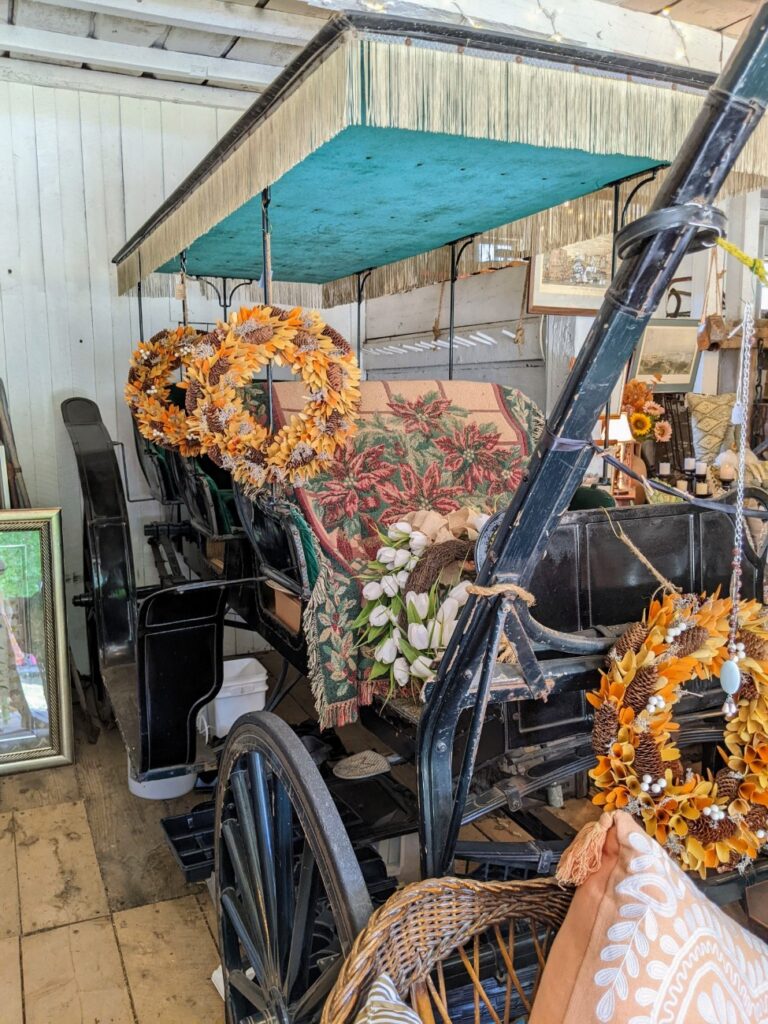
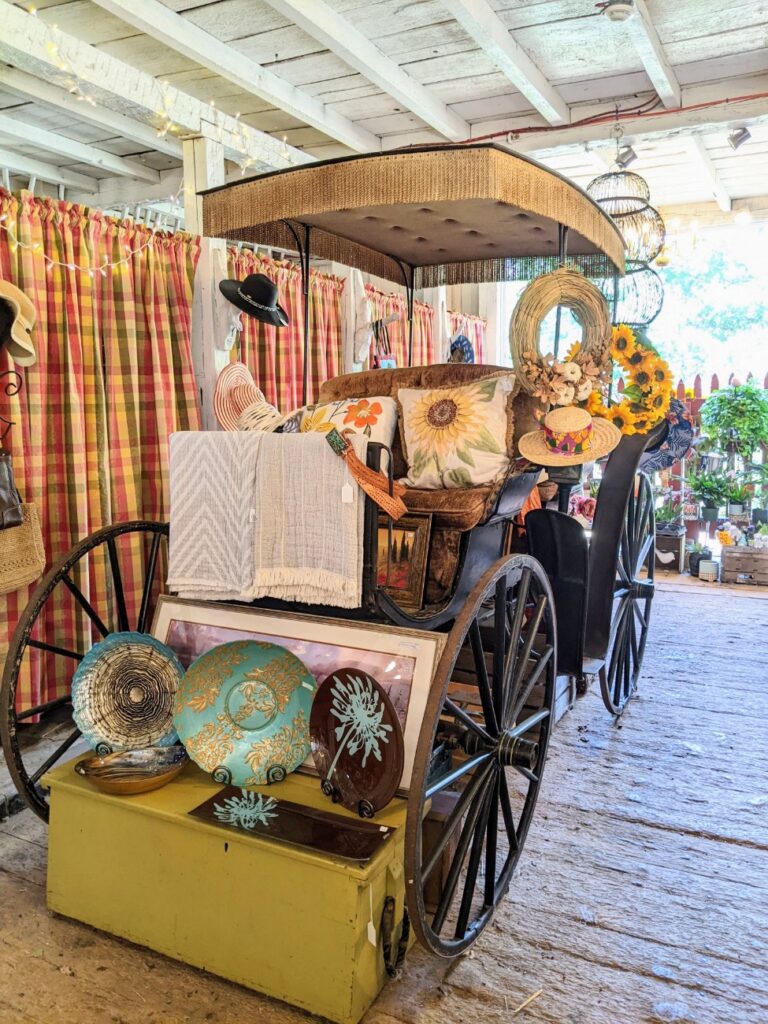
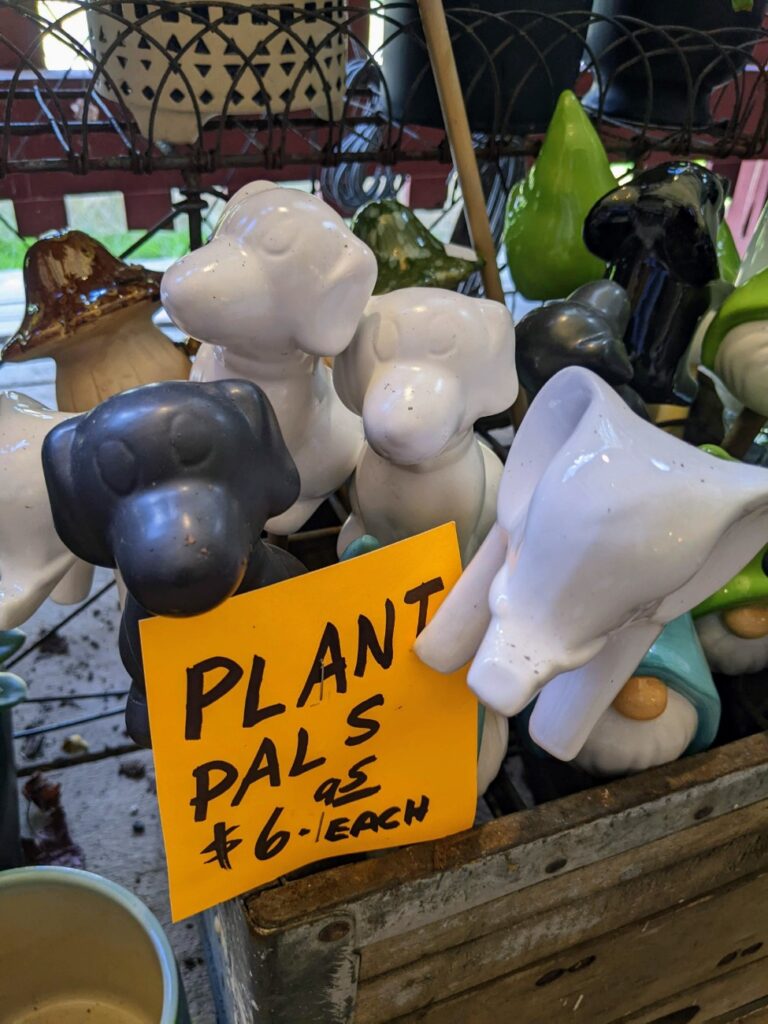
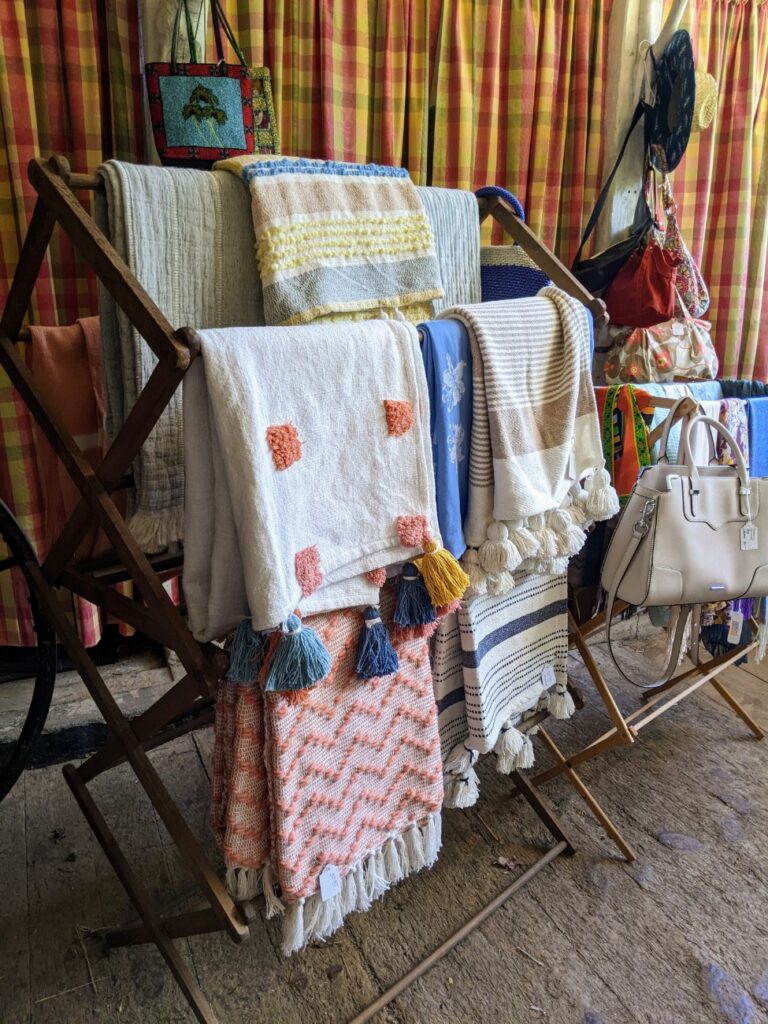
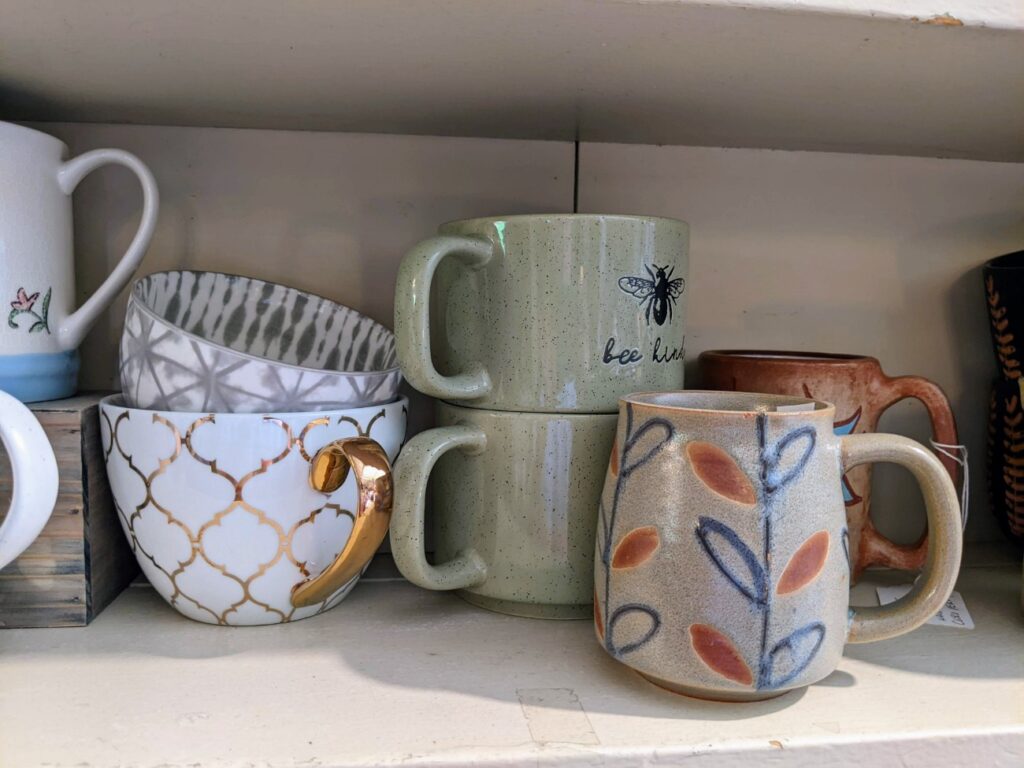
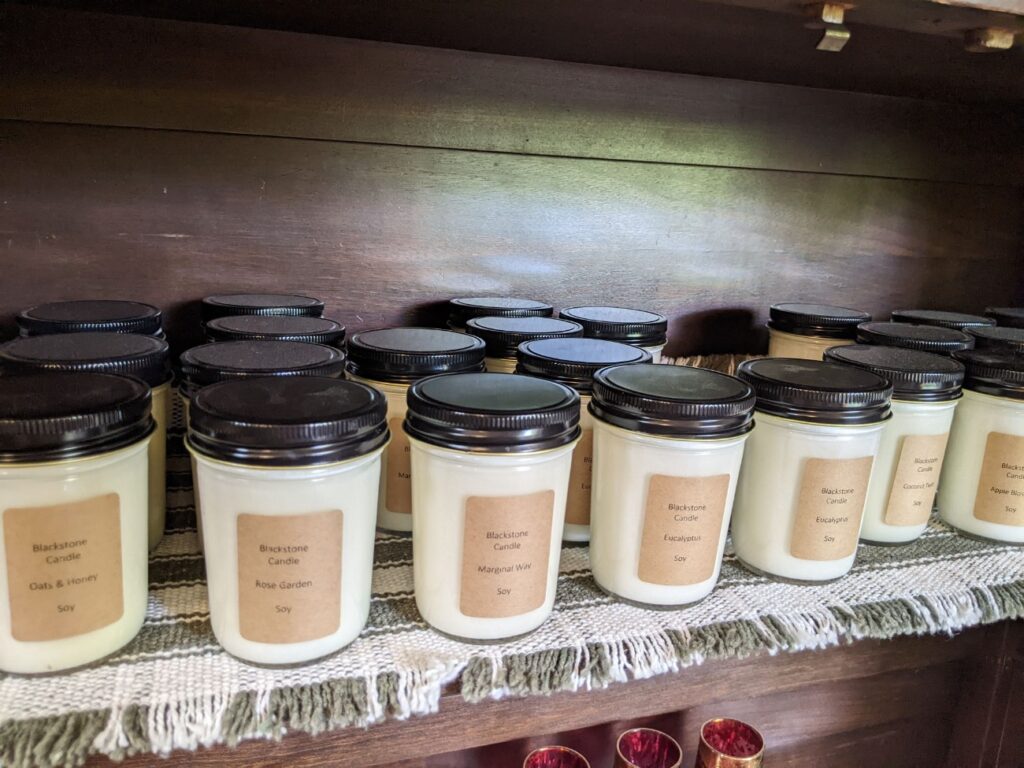
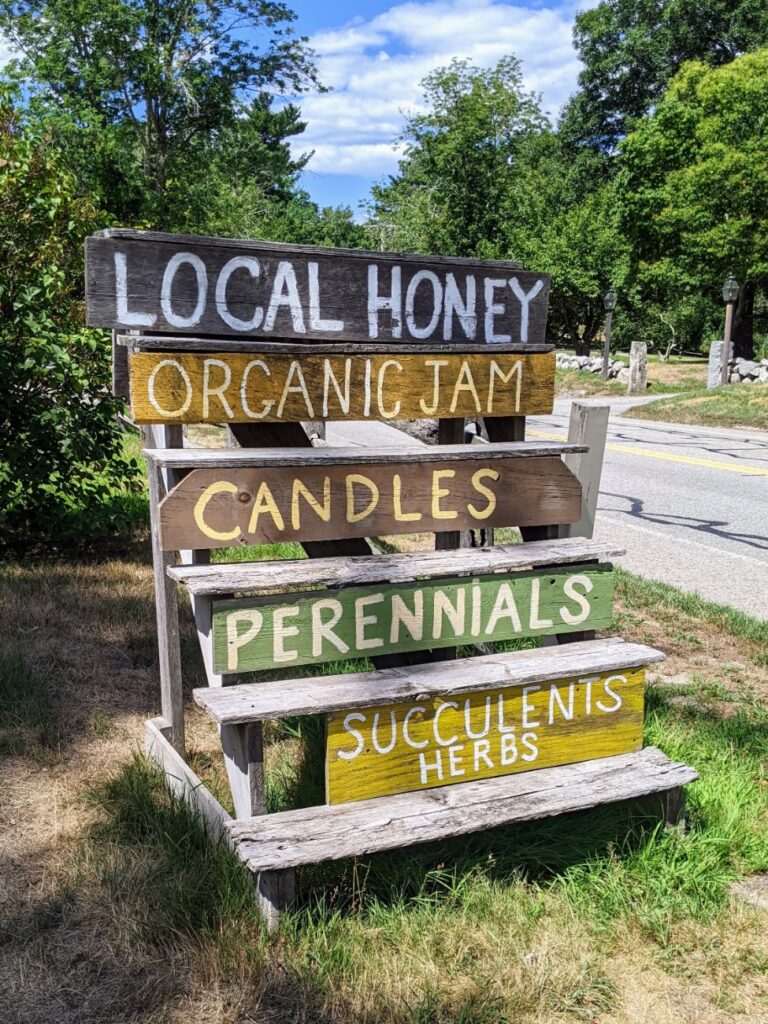
Dining at the Wayside Inn
Another popular way to experience the Wayside Inn is by dining here. Either via a special event or function or by stopping in like a regular restaurant.
At the Old Bar
The Old bar serves drinks and appetizers from 11:30 Monday-Saturday and noon on Sundays. You can take your food in the historic bar room or out on a pretty patio if it’s nice weather. There’s no closing time, so it may be they close up whenever people leave. The regular dinner service ends around 7-8 pm, so it might not stay open super late.

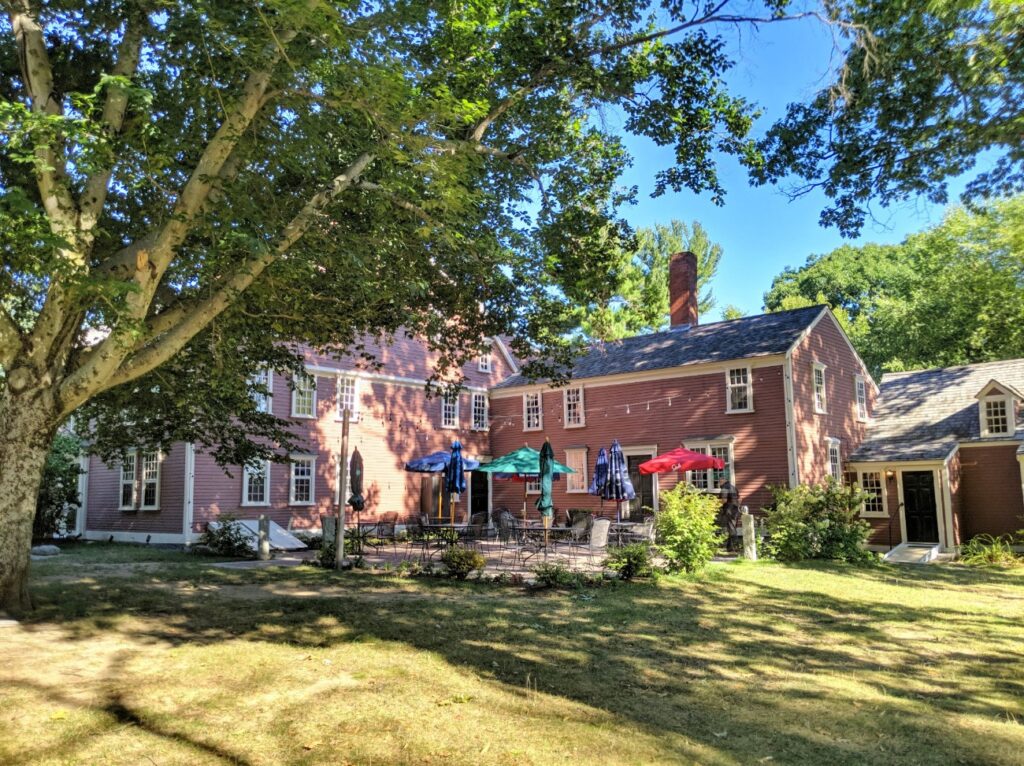
In the historic Dining Rooms
Several of the smaller, more historic rooms have tables set up in them, sometimes only a few two- or four-tops. Or there’s the big Ford dining room with plenty of seating. When I ate dinner, I didn’t realize the big room existed and was a little disappointed to eat in there vs. one of the smaller rooms. The big room has more of an impersonal conference-room feel.


And maybe it was partly the disappointment in the (lack of) atmosphere, but the food is definitely not on the cutting edge. It’s more old-school industrial. I can picture this being a place where your parents or grandparents go for special occasions, but skipped over by true foodies.
I started my meal with a house beer, which was very good, and a pimento cheese appetizer served with small crisp toast slices. For my main, I ended up with a broiled Boston schrod (a New England fish) with scalloped potatoes and acorn squash as sides. The overall effect was pretty mushy. Bread service was fine with three options: a wheat roll, a cornbread muffin, and a bran (or some sort of dark bread) muffin. I ended my meal with vanilla creme brulee, which was not nearly torched enough on top. Would it have all tasted better in a small, dark room with a fireplace? Probably not. There are plenty of other options, so maybe I just chose poorly.
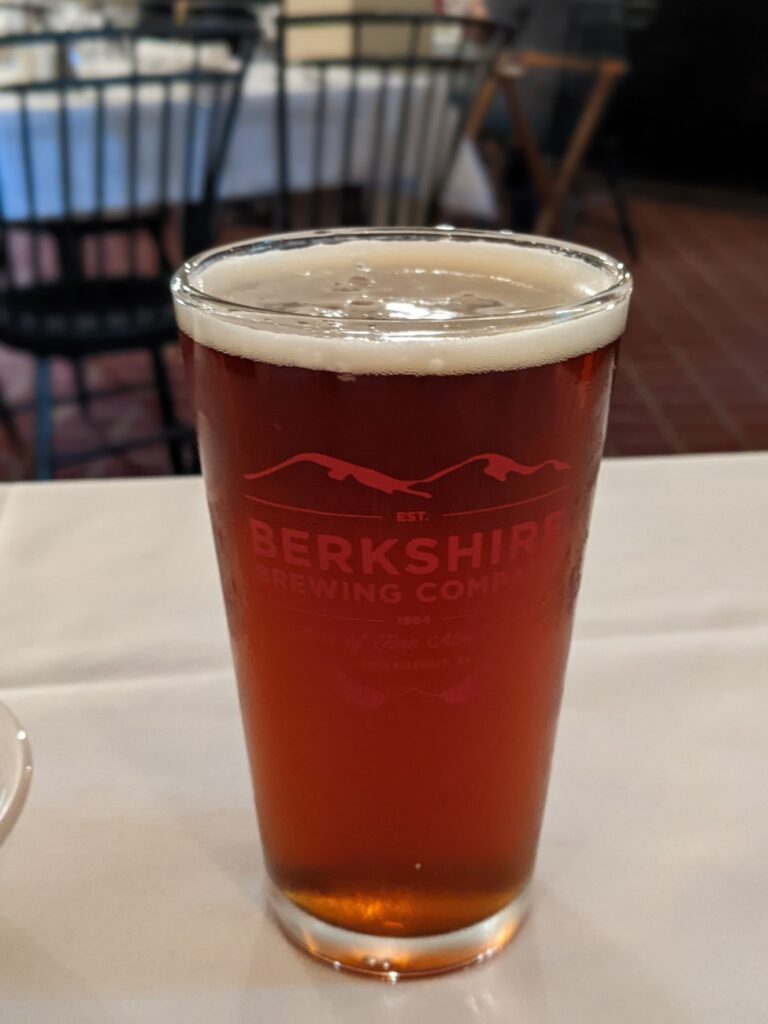
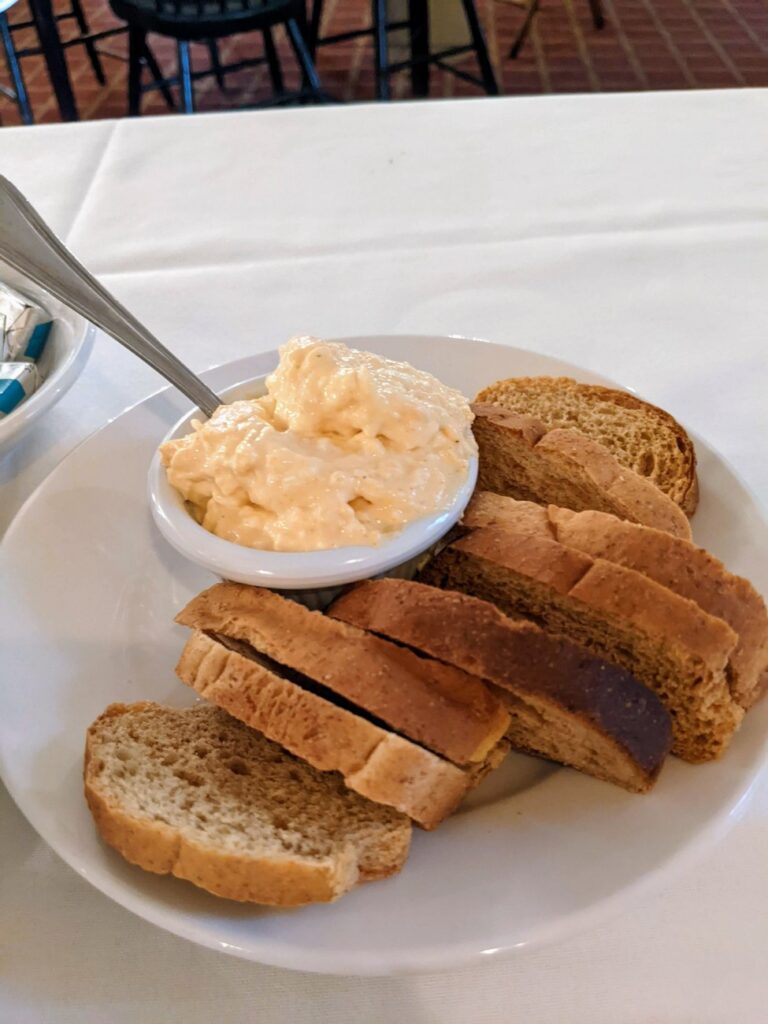
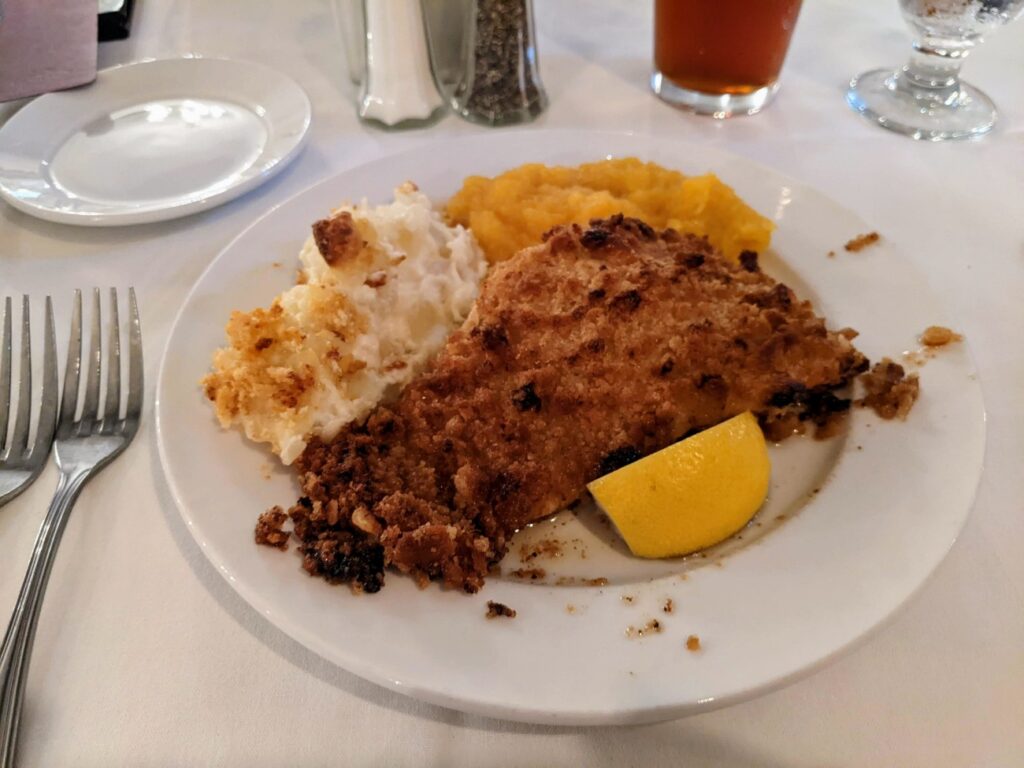
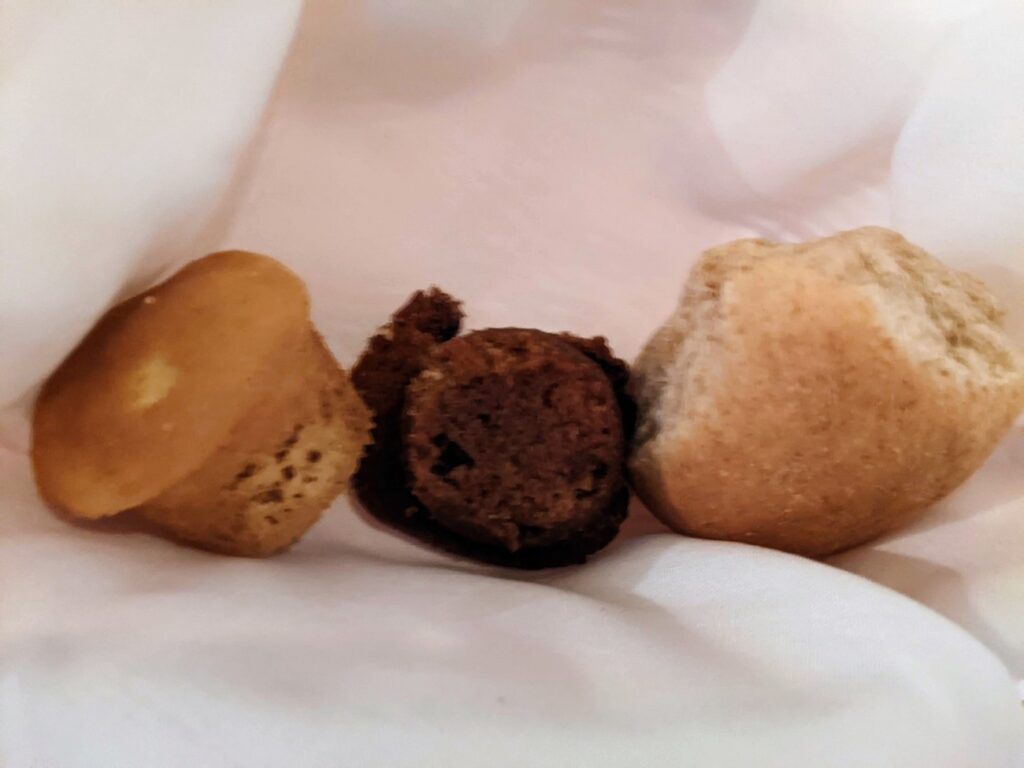
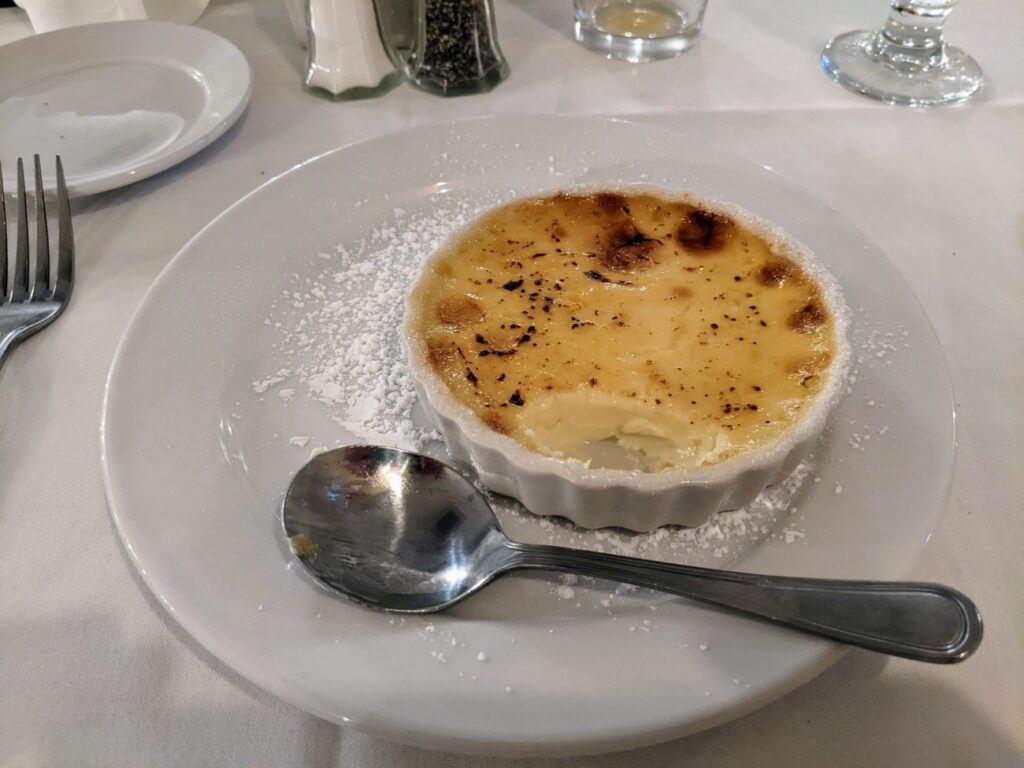
Hours
A lighter, cheaper lunch is served Monday-Saturday from 11:30 to 3 pm. Dinner is served 4:30-7:30 Mon-Sat, and noon-7 pm on Sunday. Three-course, prix fixe Sunday dinners are also served during this time. I can see this being a popular post-church destination.
Breakfast is also available from 7:15-10:15 but only for Inn guests. I’ll cover that below.
Staying at the Wayside Inn
For the deepest cut, stay overnight in one of the historic rooms of the Wayside Inn. The one hall with (almost) all of the rooms is on the second floor with elevator and stair access from near the front desk. And you don’t have to park across the street if you’re staying here, there is a small parking lot for guests and handicapped visitors right next to the Inn. (Which also allows you to drive on a small portion of the Old Boston Post Road.)
Rooms
The rooms were built after the devastating 1955 fire, so they are on the smaller side. Don’t expect a modern room here. There are no TVs and no coffee makers in the room, and the bathrooms are quite small. In mine, there was a beautiful four-poster bed, antique furniture including a seating area, and a decent closet with a mirror on the door. The bathroom was adequate and cute, but I regretted the lack of hooks for hanging up my robe and towel. (And the house shampoo and conditioner are terrible.)
The worst thing, however, is that you have no control over the temperature of the room. I was there in the fall when it wasn’t quite warm enough to kick on the AC, and not cool enough that opening the windows really helped.
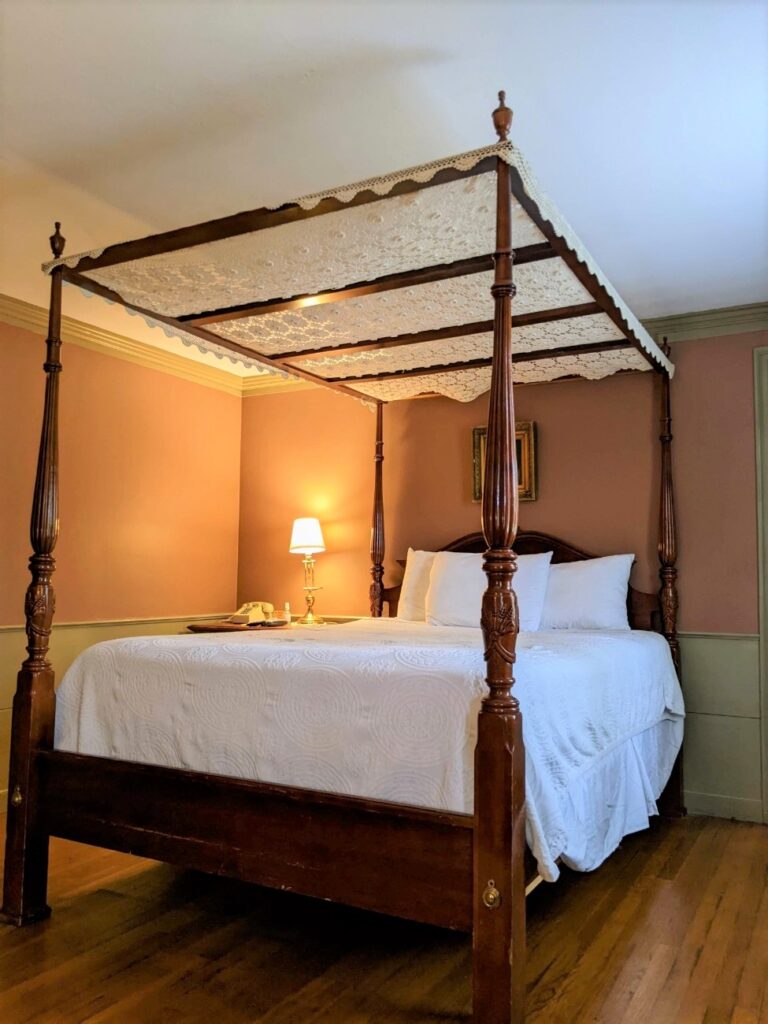
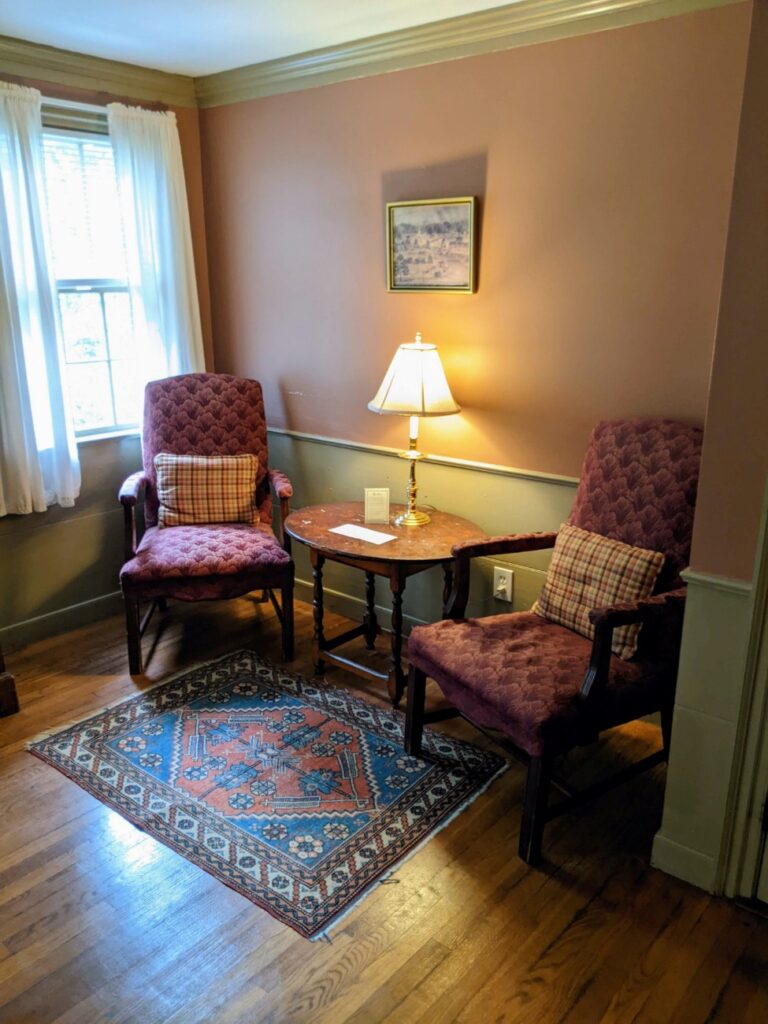
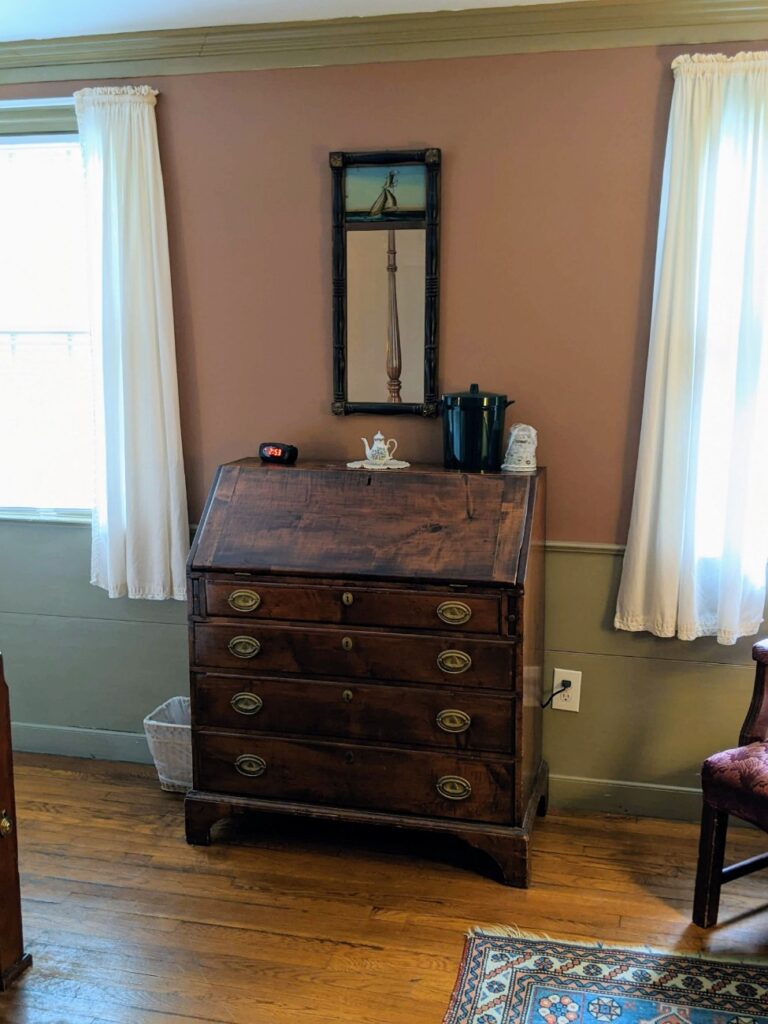
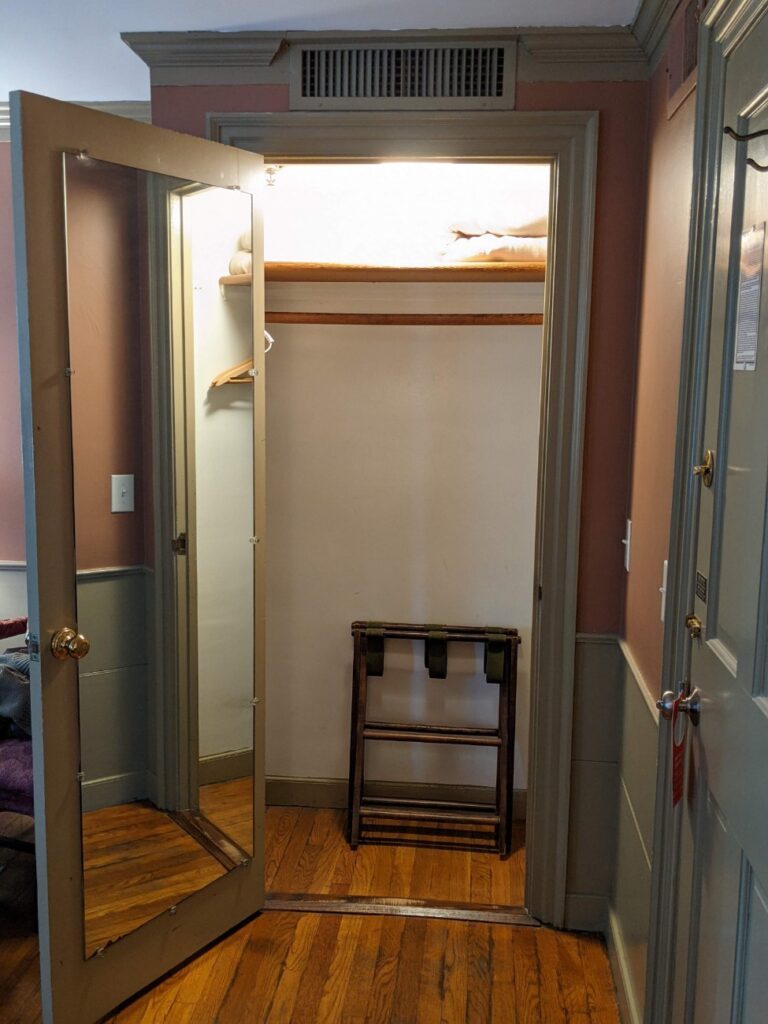
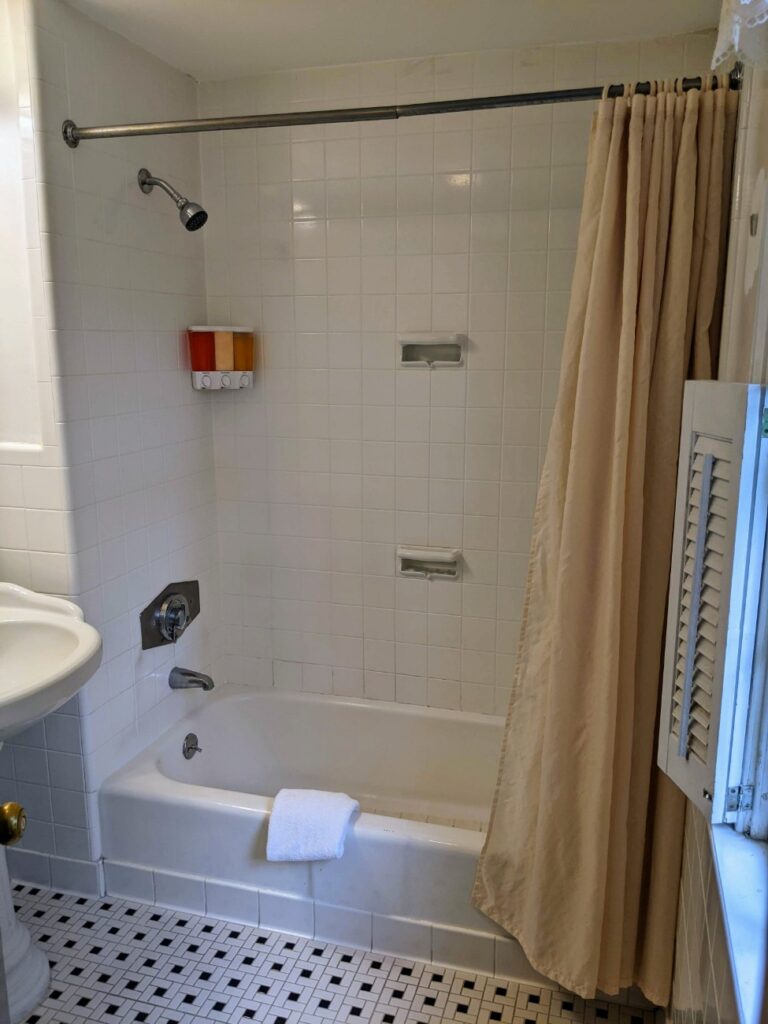
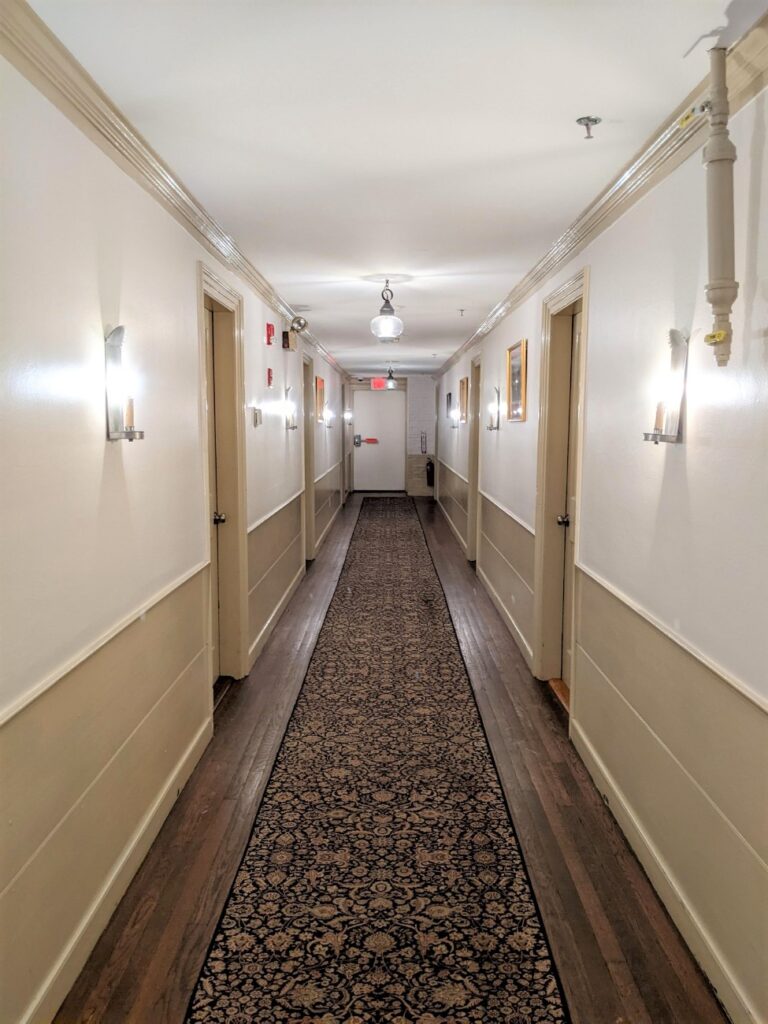
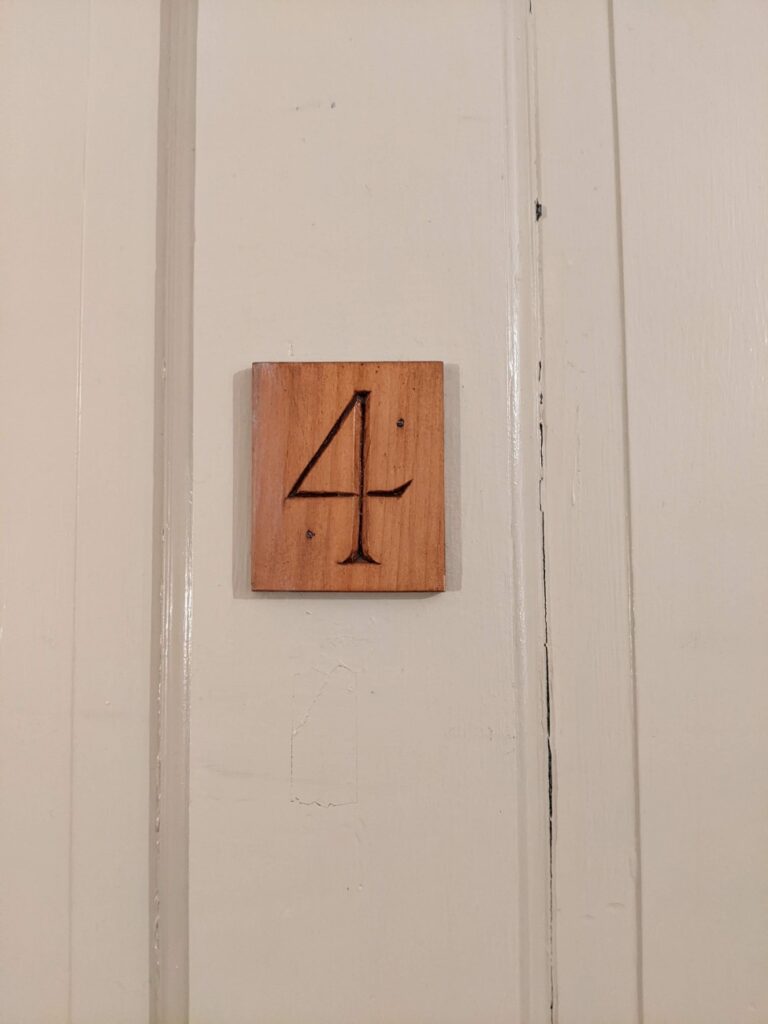
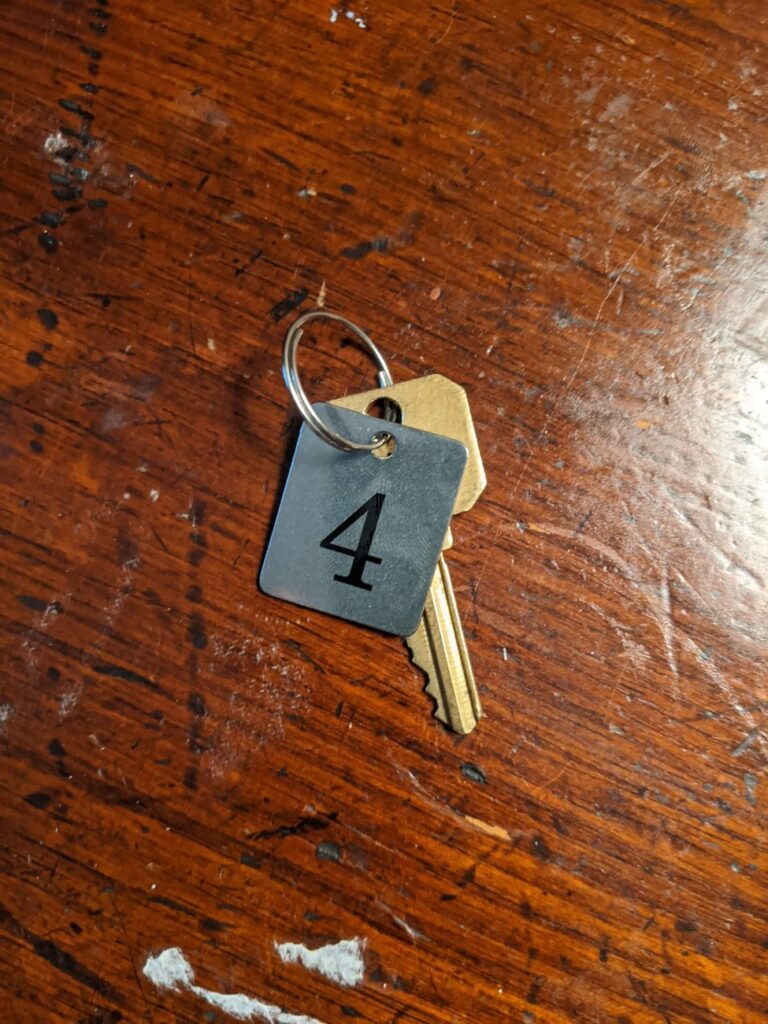
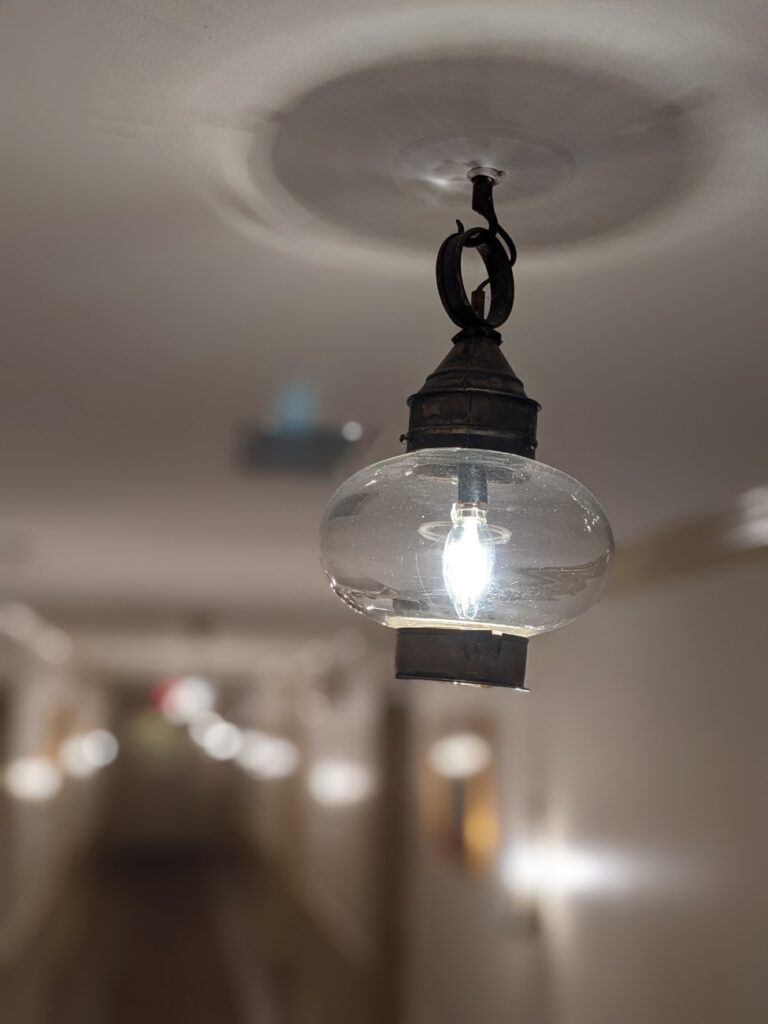
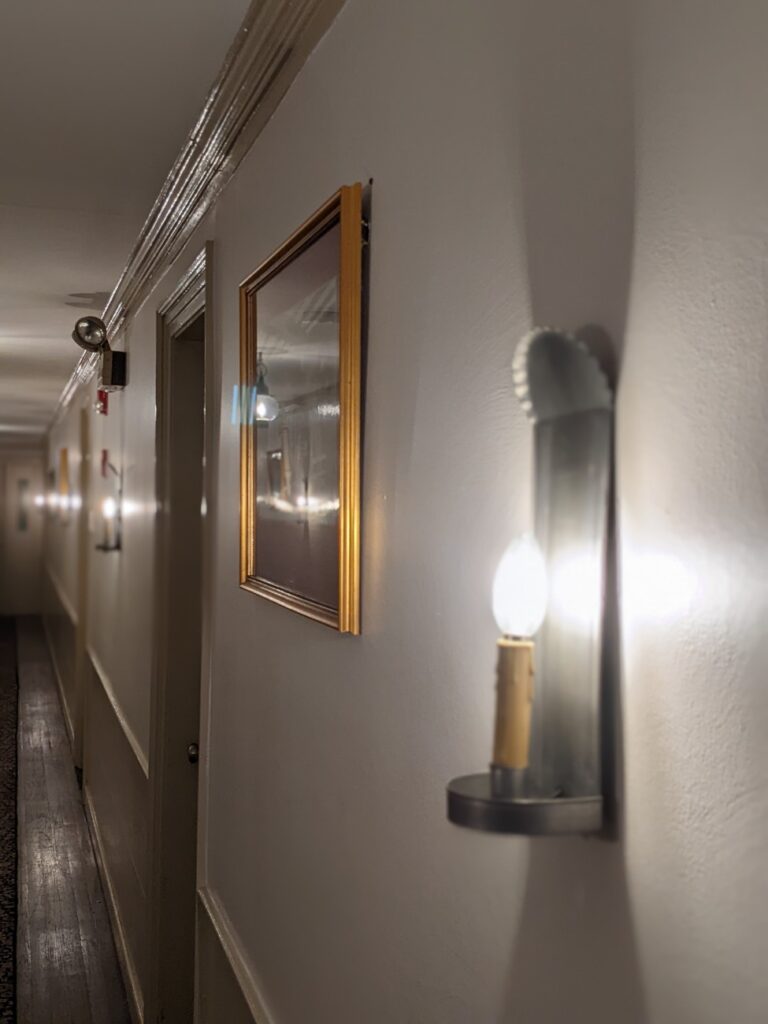
Sitting Room & Atmosphere
If you absolutely need to watch TV, there is a sitting room at the end of the hall with a TV, plus some games and books.
What I liked most about staying at the Inn is the hustle and bustle of staying at a working Inn with a kitchen downstairs. Normally, I would complain that it was a noisy place to stay. But in this case, I felt tied to the idea that this has always been the case here. People sleeping upstairs while the business of tavern life continues below. Besides, everything downstairs was wrapped up by around 8 pm, well before I went to bed.
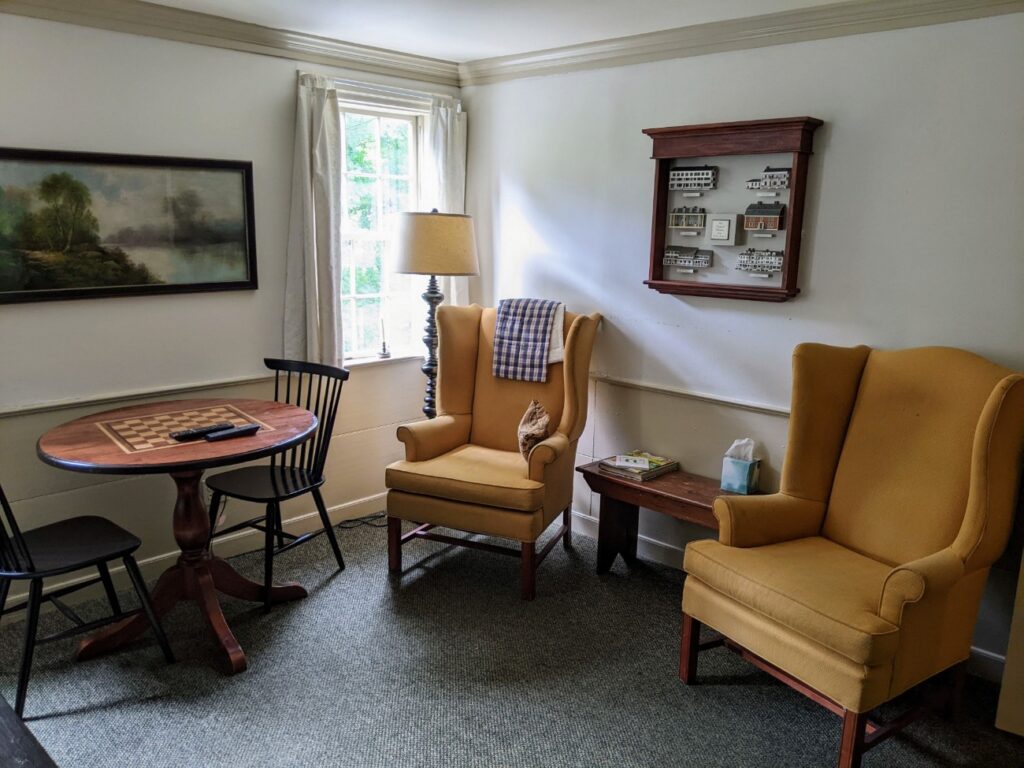
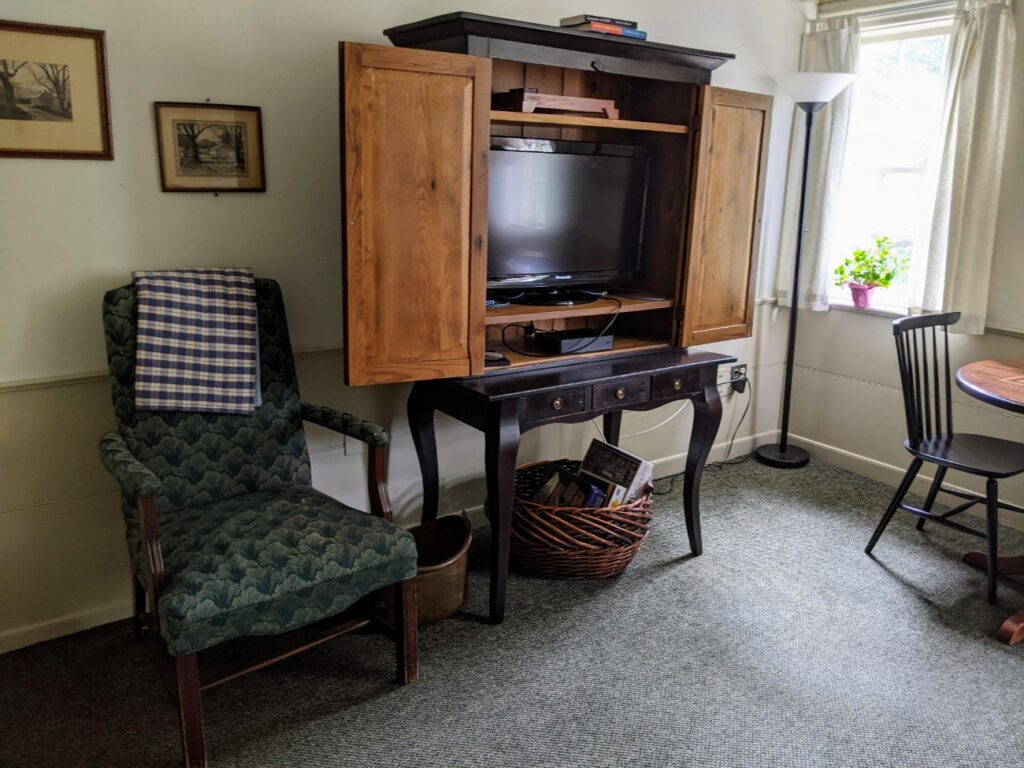
Haunted Room #9
The ghost of Jerusha Howe is said to haunt room #9, her old room. (She never got married, so of course, she’s unhappy.) It’s also the only room totally original to the Inn. It’s up a steep flight of steps, so keep that in mind if you want to stay. Visitors tend to leave notes for Jerusha in the beams and crevices of the room, and there’s some sort of box to find. I imagine it’s a fun time. (And if you’re a solo male visitor, she apparently likes to snuggle.)
Reservations for room #9 tend to be booked months in advance. As with all room reservations, call or fill out an online form to make your reservation. There’s no direct booking online.
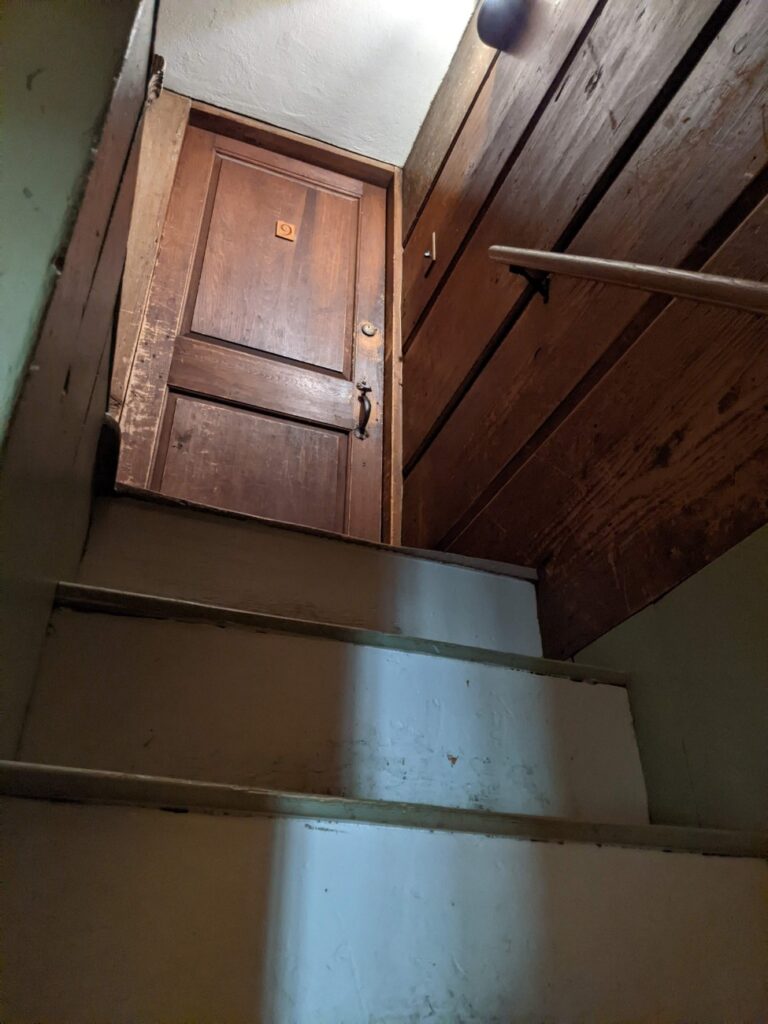
Breakfast
All rooms include breakfast in the tavern, and this was my chance to eat in one of the historic rooms. In this case, the West Kitchen or tap room. (Which I think is the usual place.)
My breakfast was johnny cakes made with corn meal from the grist mill, with blueberries and a side of some sort of beef hash. (I forget now what it’s called. I didn’t like it very much.) The waitress also brought me a “tavern potato,” which was like mashed potatoes rolled in (I think?) cornbread and fried. It was pretty good.
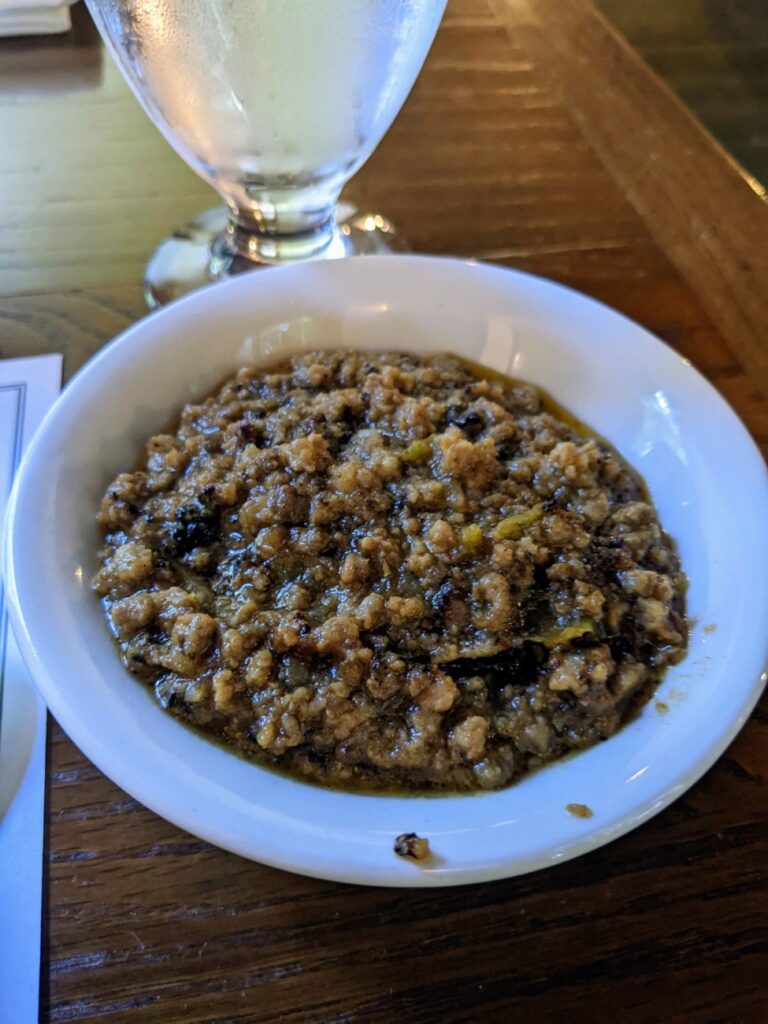
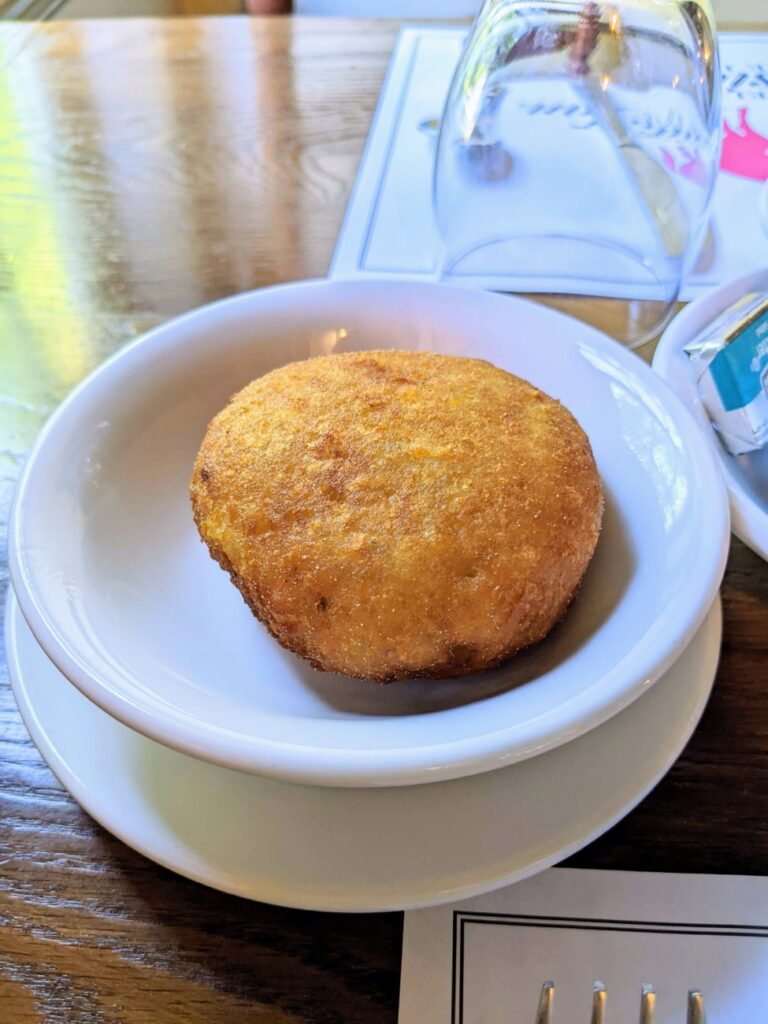
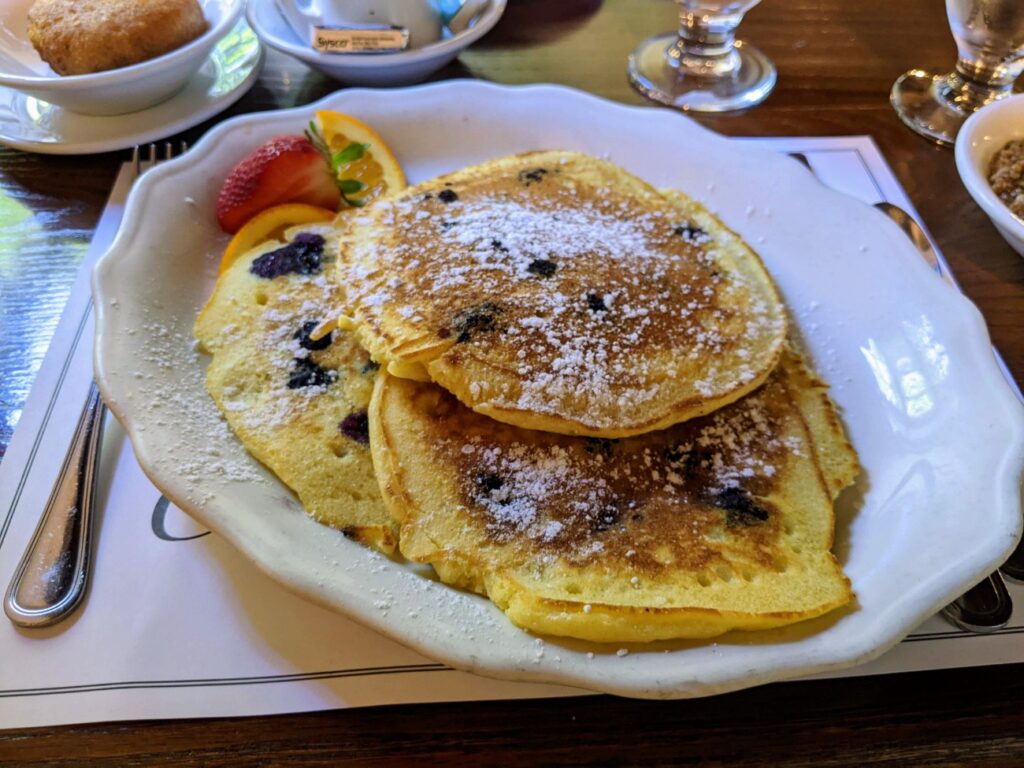
In Conclusion
So there it is. Visit Longfellow’s Wayside Inn as a tourist to soak in the history of the Inn and the area. Come inside to eat an old-fashioned meal in historic surroundings. Or stay overnight as countless travelers have done for the past 300 years. It may not be the best meal you’ve ever had or the best night of sleep, but it is definitely worth looking around!
Bonus: Wayside Country Store
For a touch more Wayside, visit the Wayside Country Store. It’s only a mile or so down the road, but it seems like it would be a bit far to walk for the average guest. Yet another building that Henry Ford moved here, this old-fashioned country store has all kinds of gifts and knick-knacks and fun things to look at. The biggest draw is probably the candy shop on one side, with all kinds of bulk and packaged candy.
There are a few more businesses in this strip, like a sewing shop and a cake-by-the-slice place. There’s also a good restaurant at the end, Stephen Anthony’s.
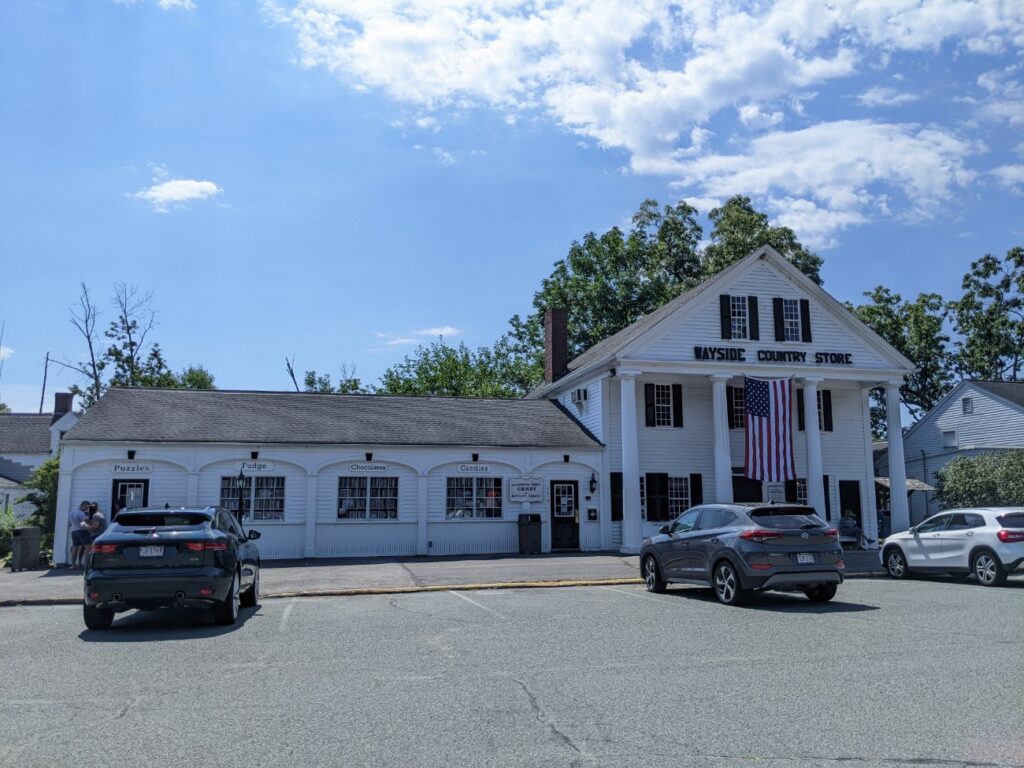
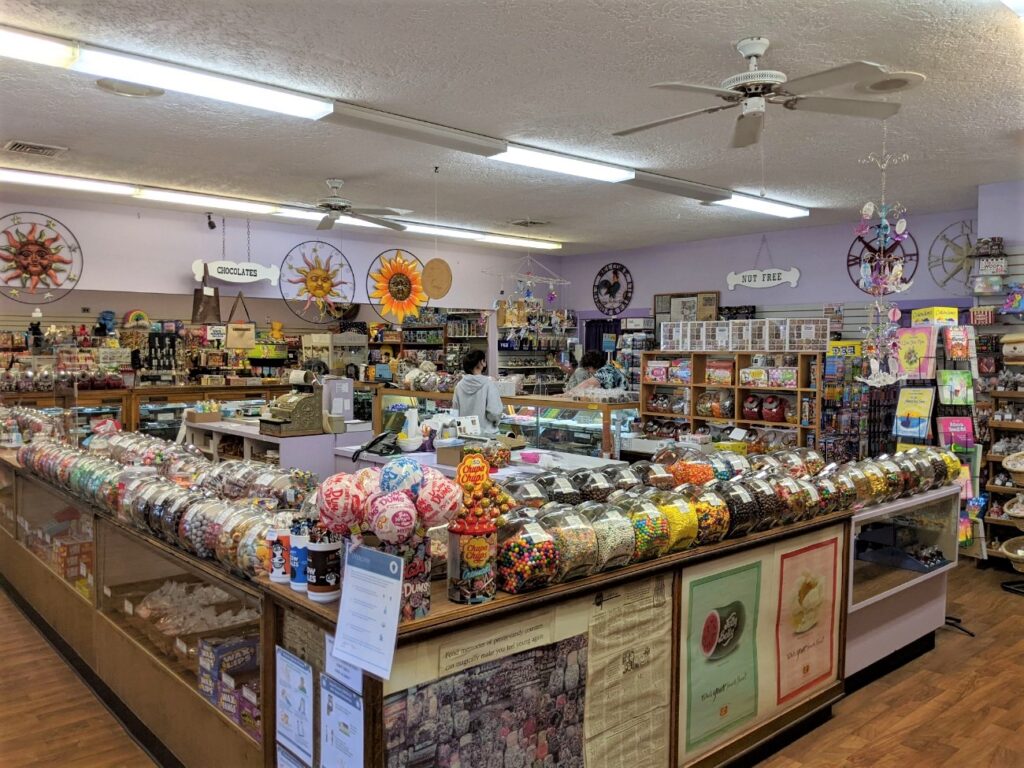
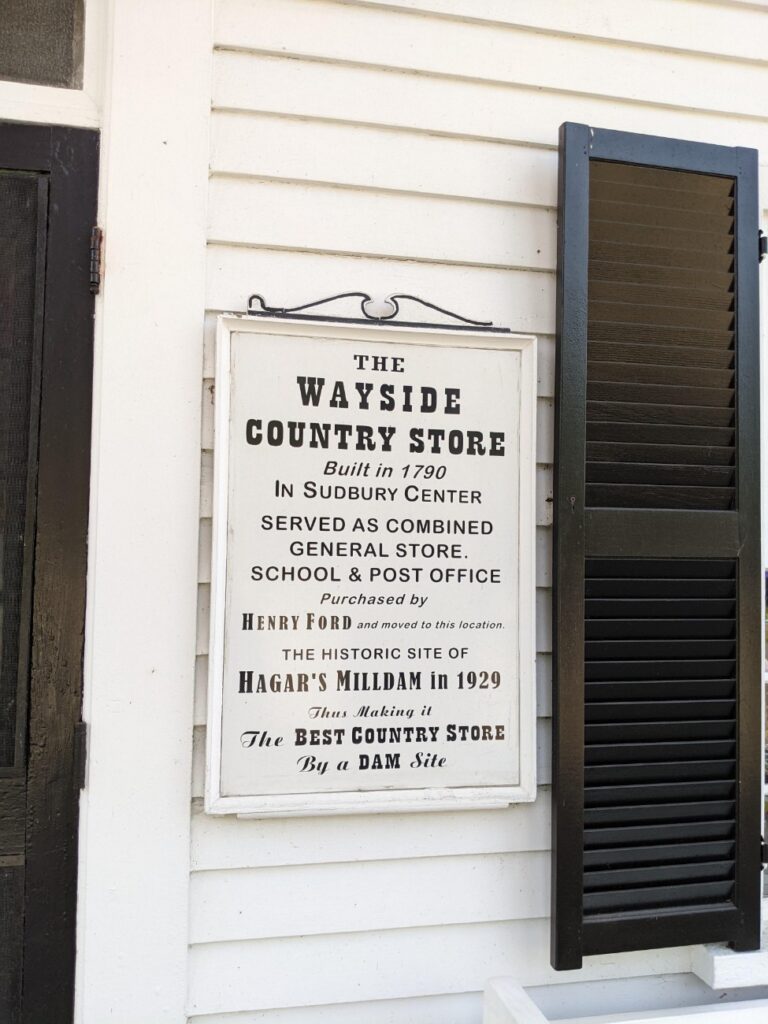
Be First to Comment